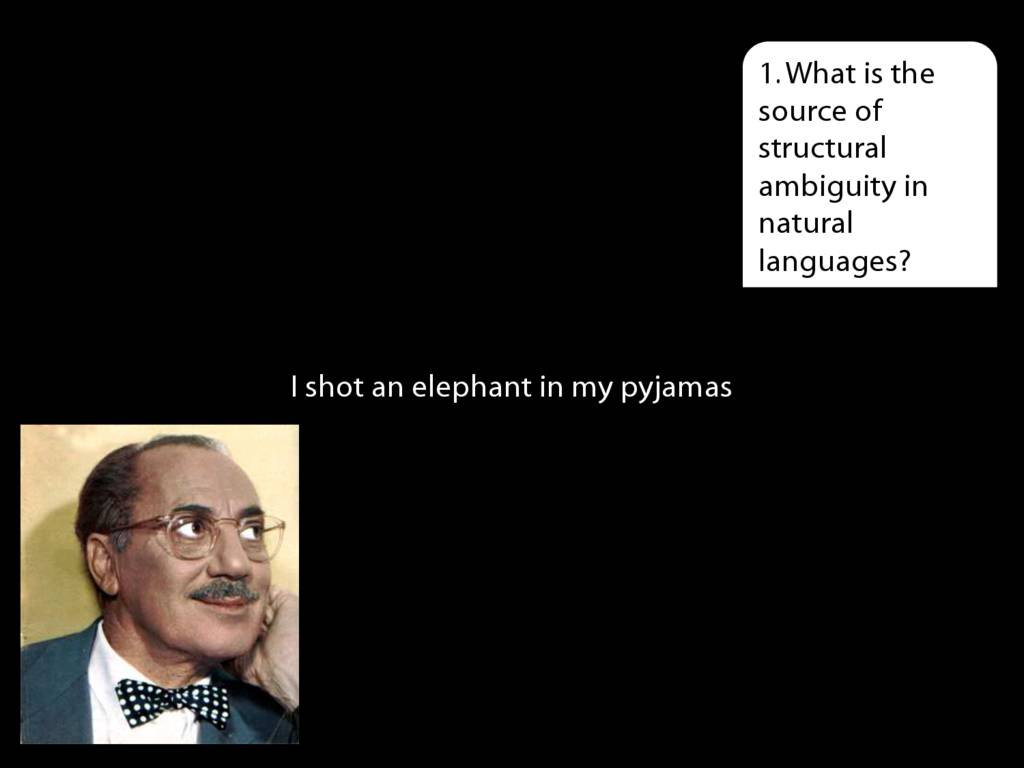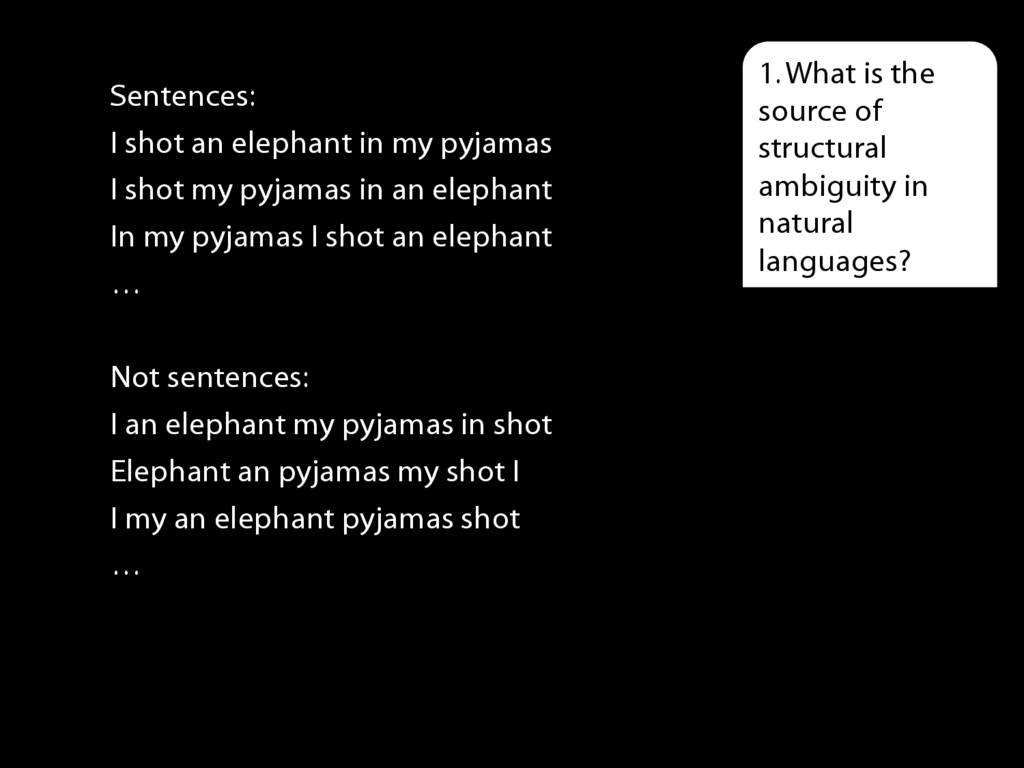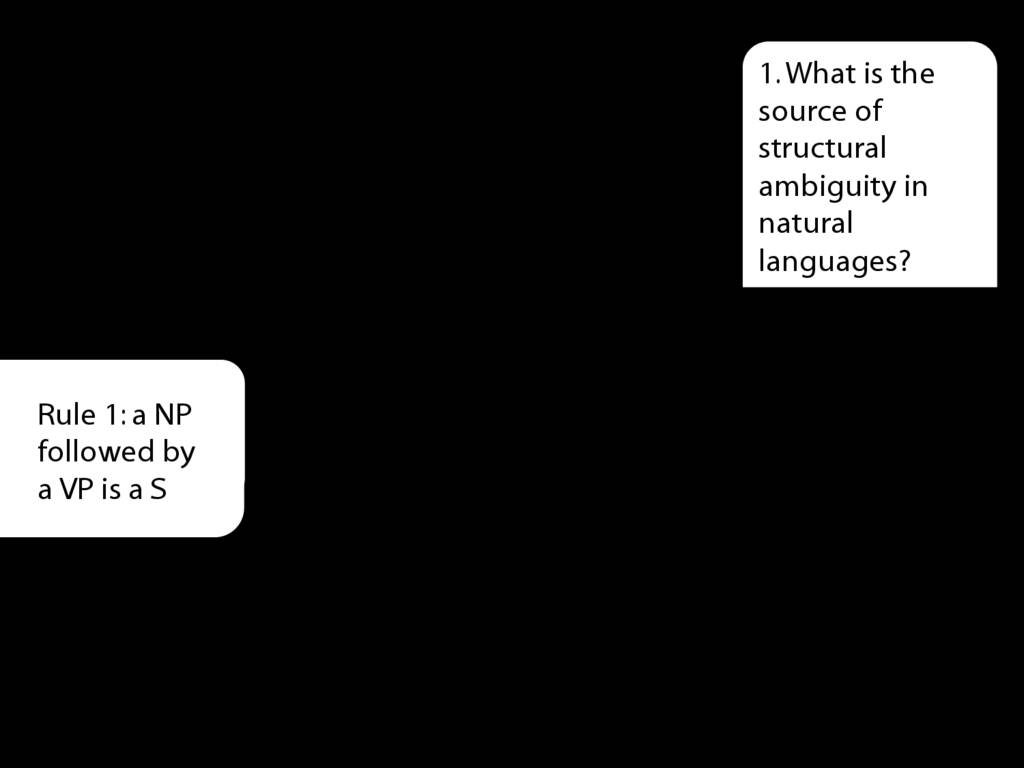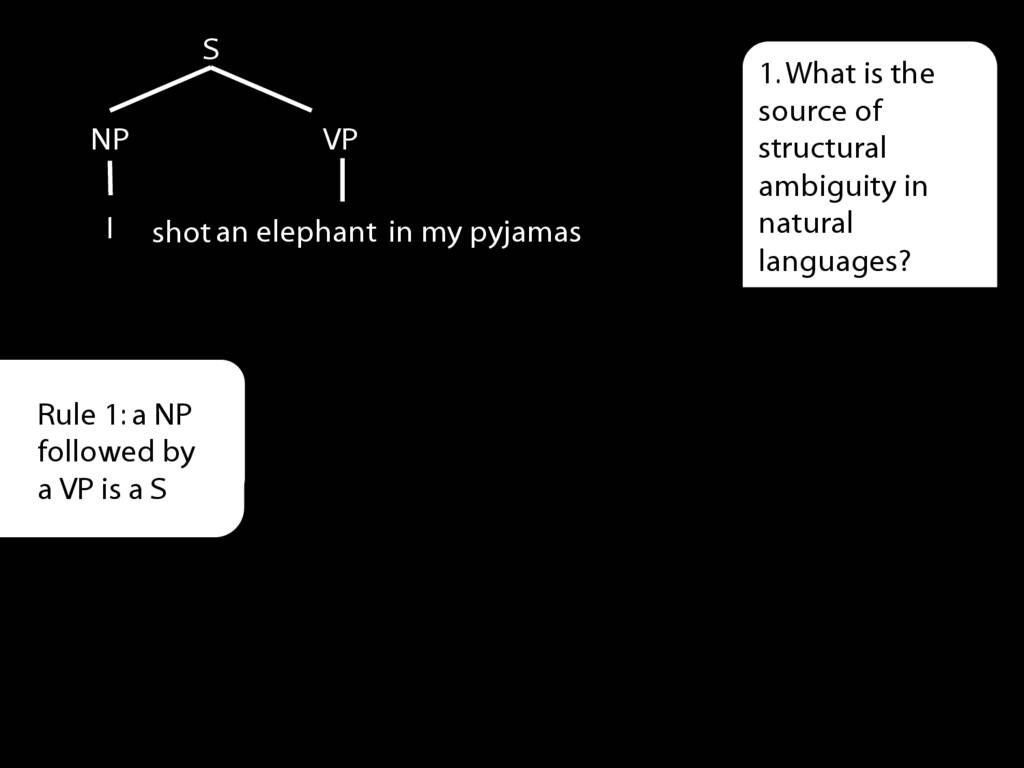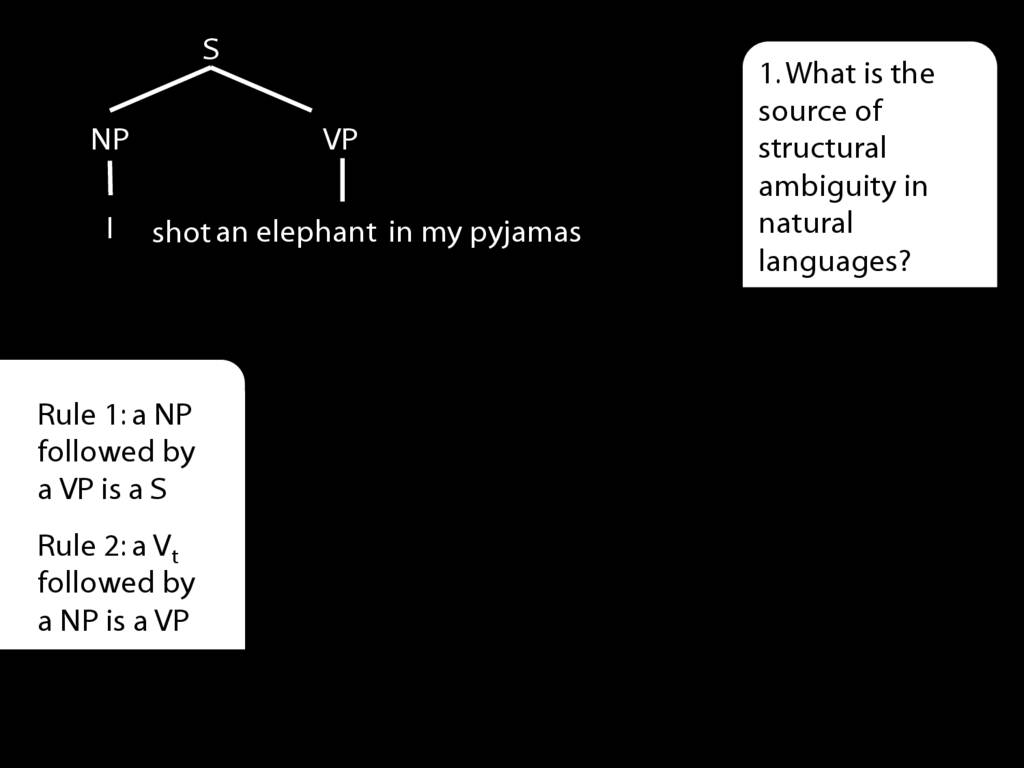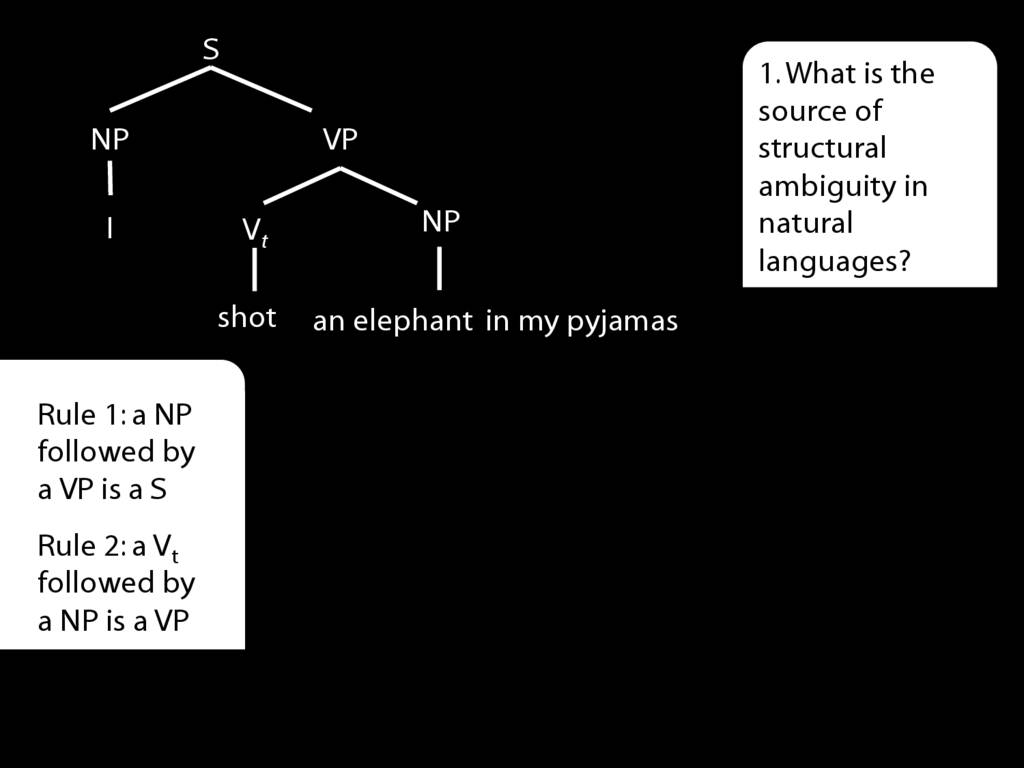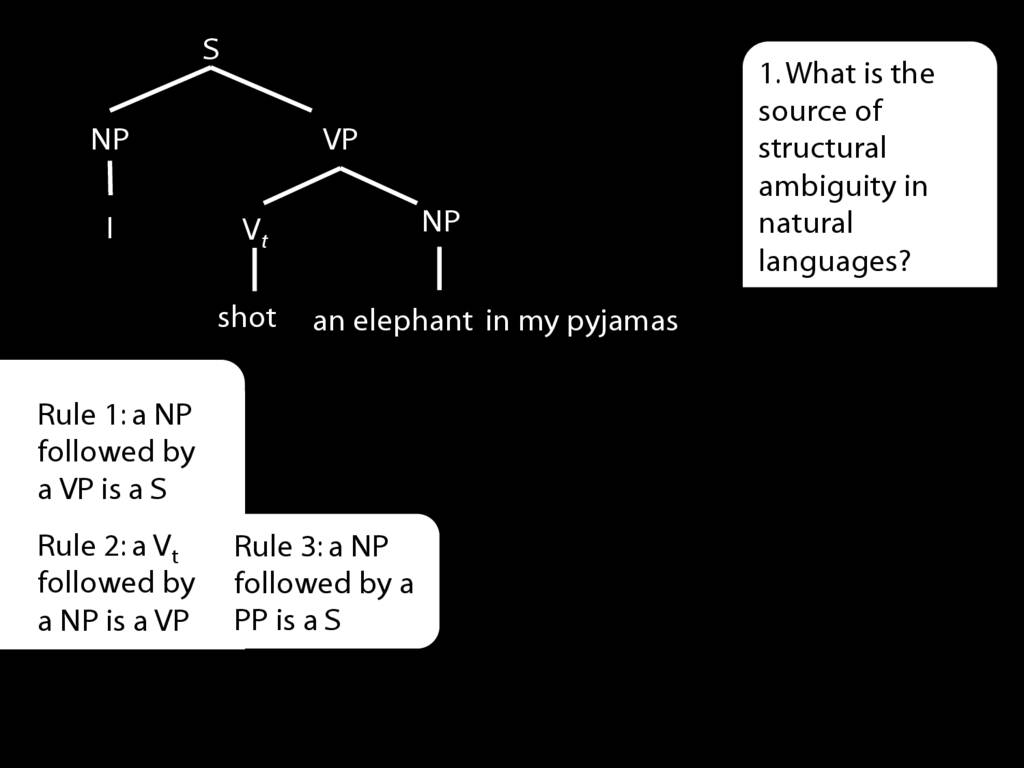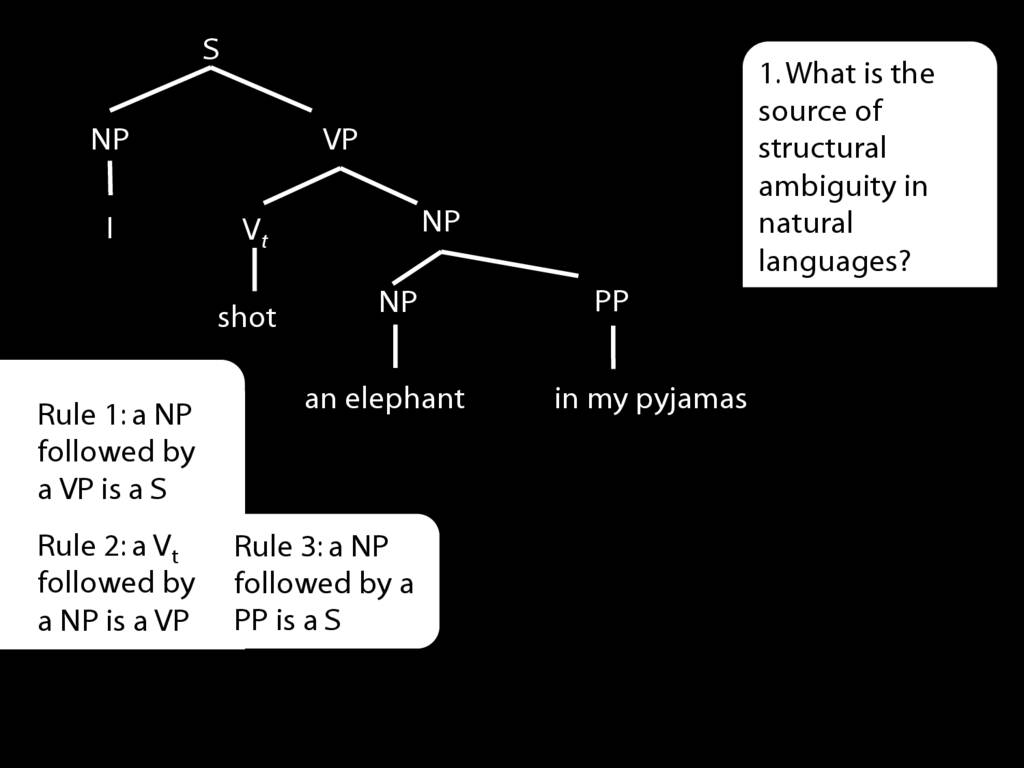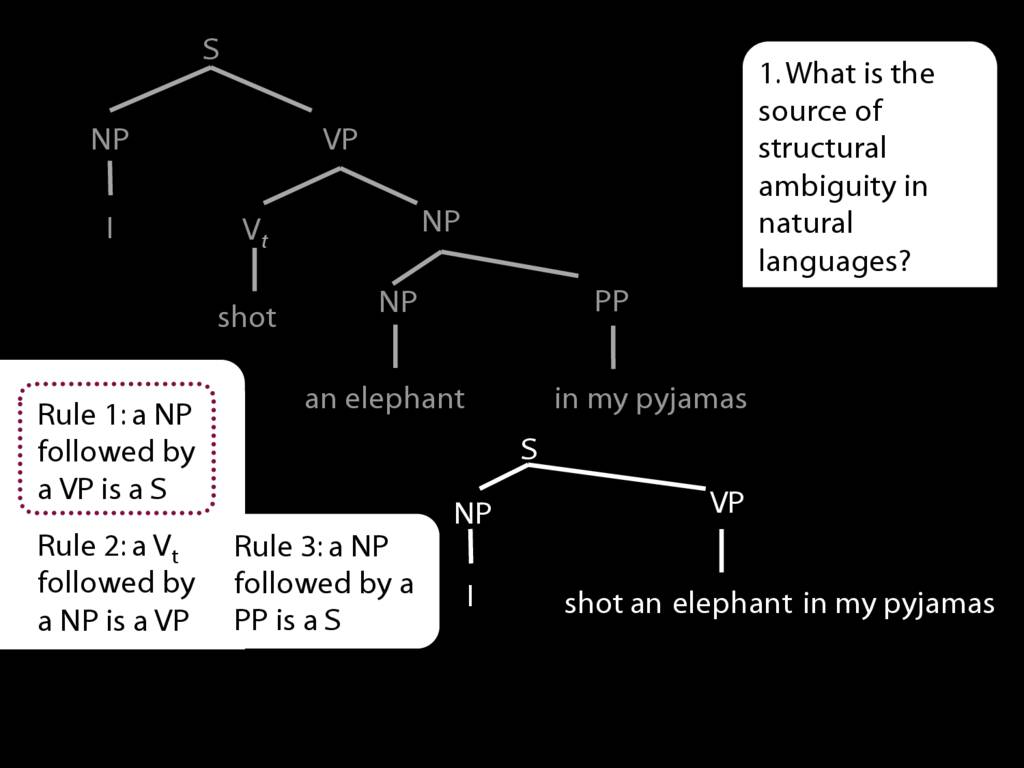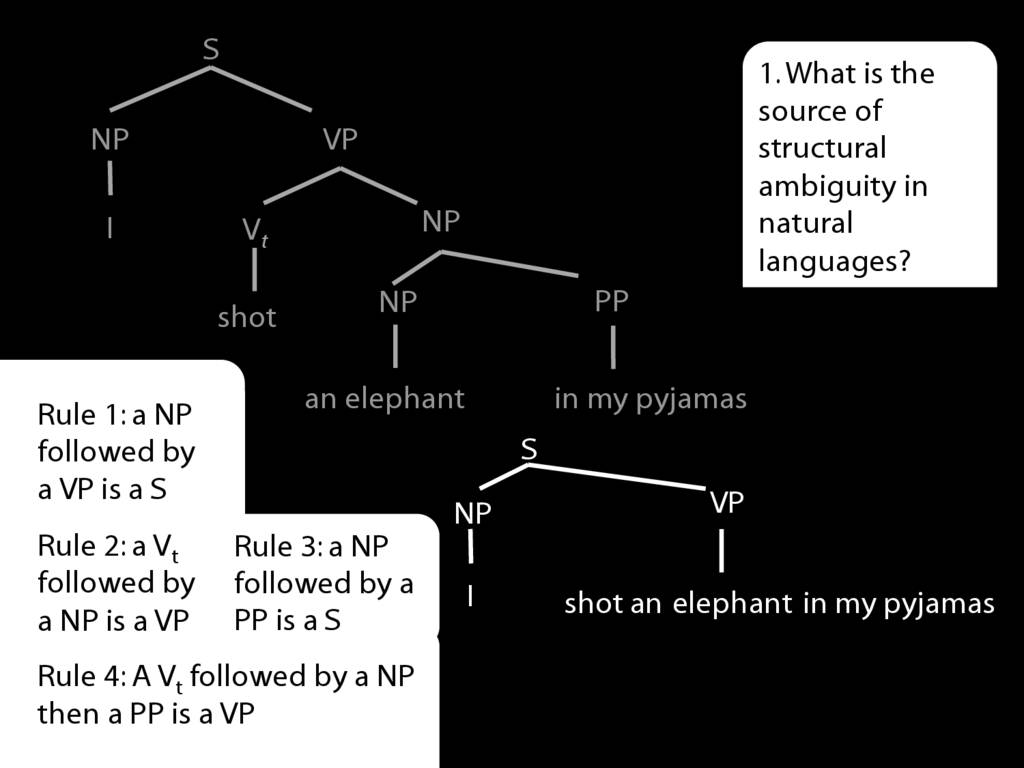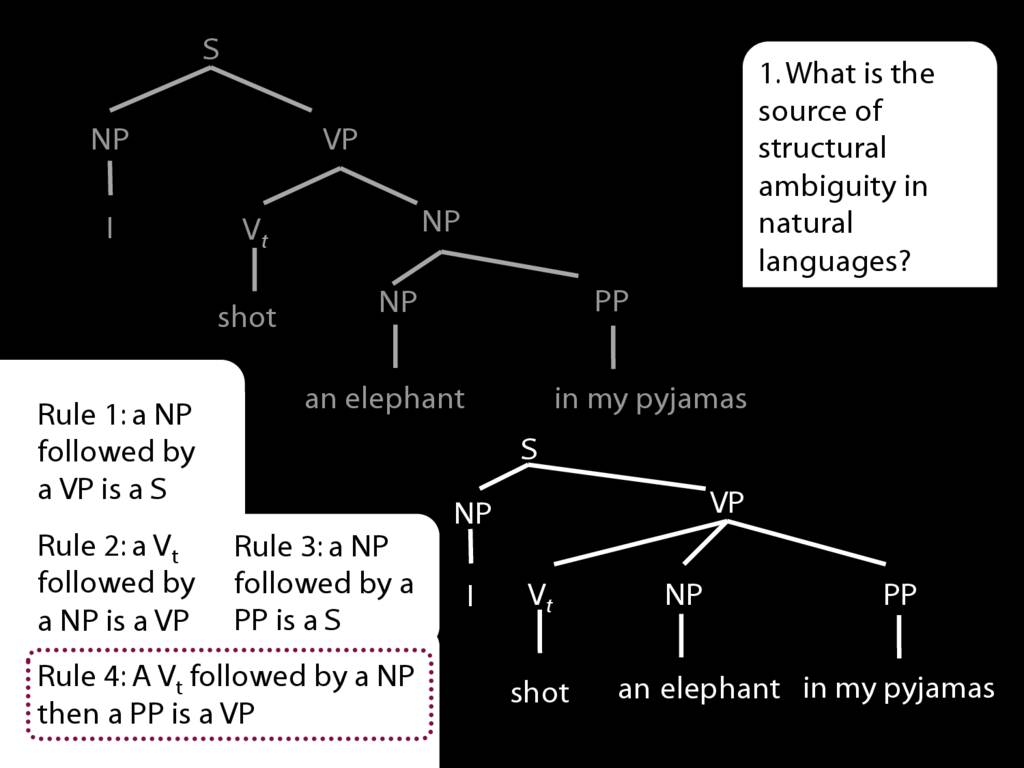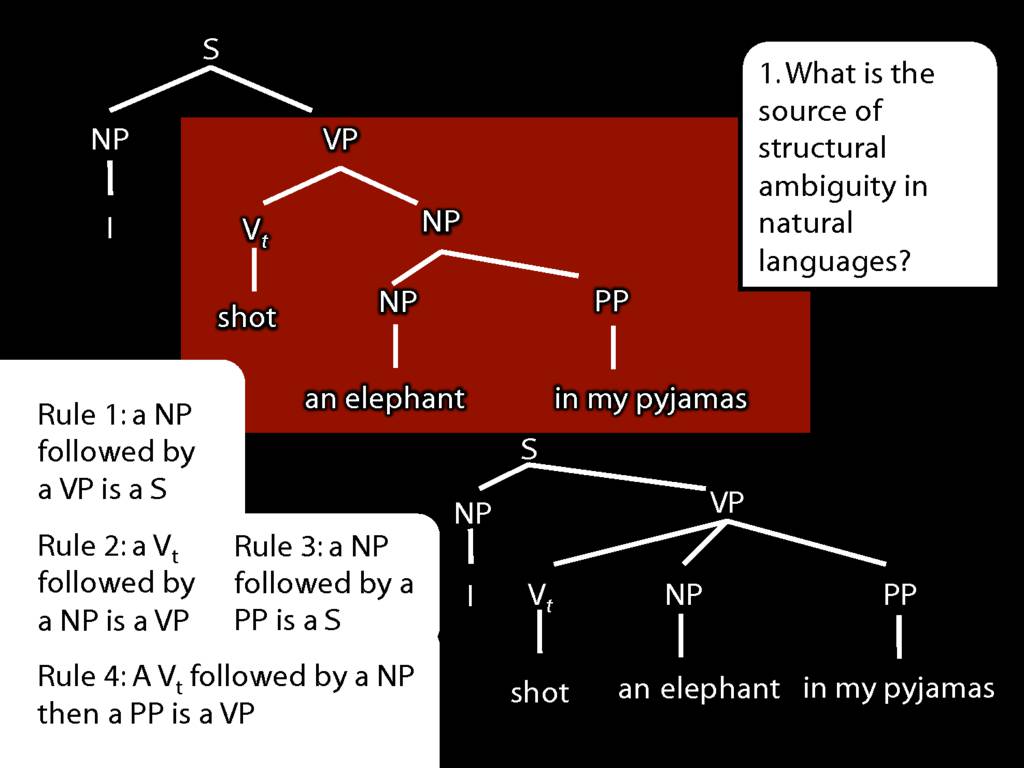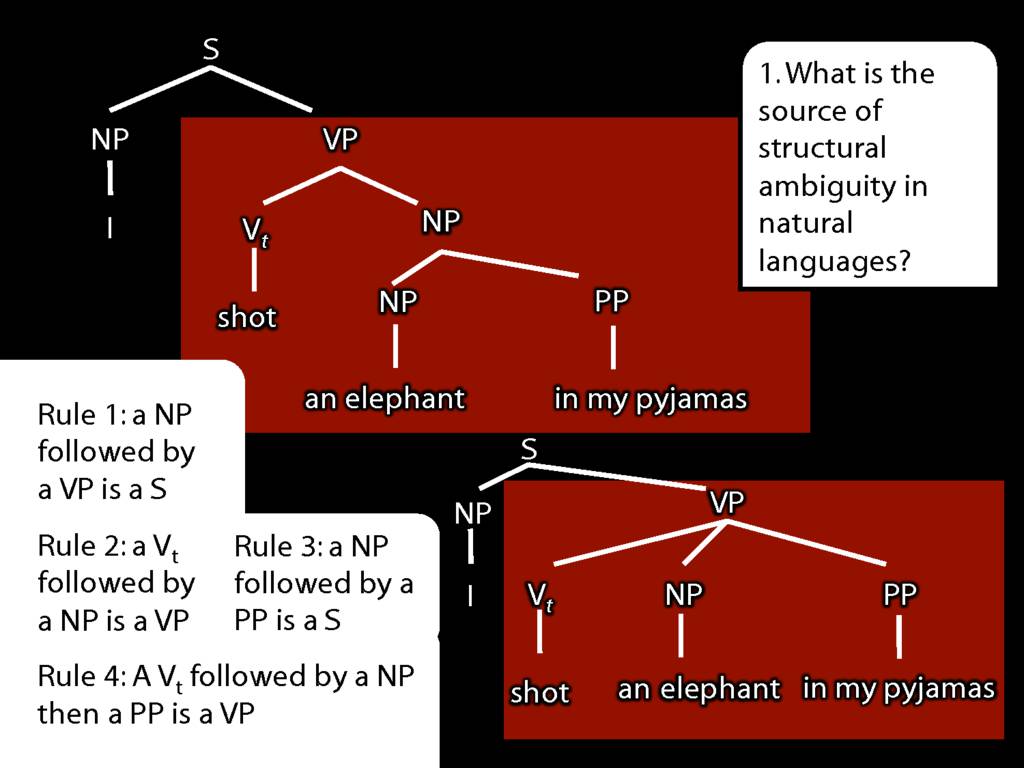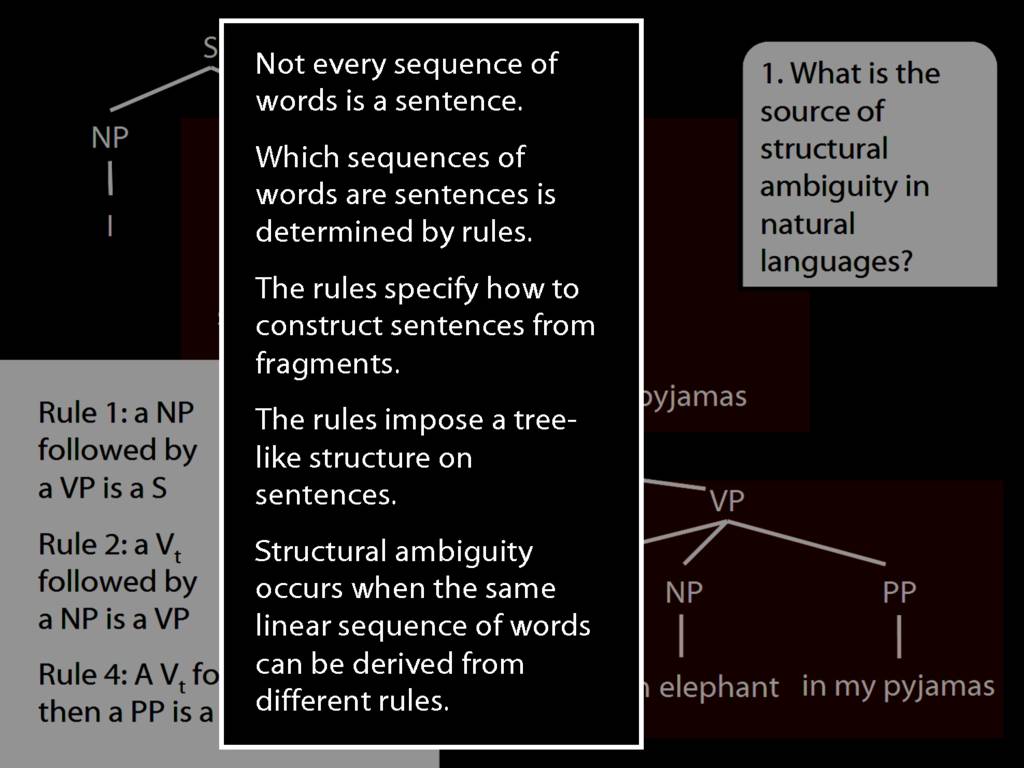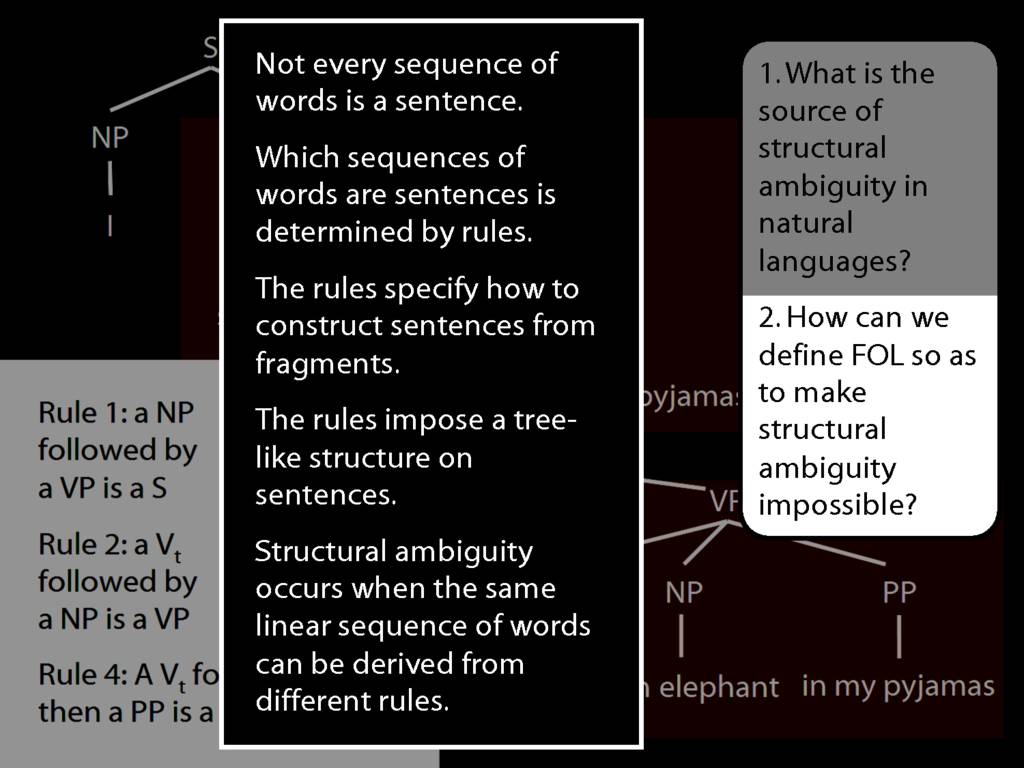Press the right key for the next slide (or swipe left)
also ...
Press the left key to go backwards (or swipe right)
Press n to toggle whether notes are shown (no equivalent if you don't have a keyboard)
Press m or double tap to see a menu of slides
\title {Logic I \\ Lecture 05}
\maketitle

\def \ititle {Logic I}
\def \isubtitle {Lecture 05}
\begin{center}
{\Large
\textbf{\ititle}: \isubtitle
}
\iemail %
\end{center}
Readings refer to sections of the course textbook, \emph{Language, Proof and Logic}.
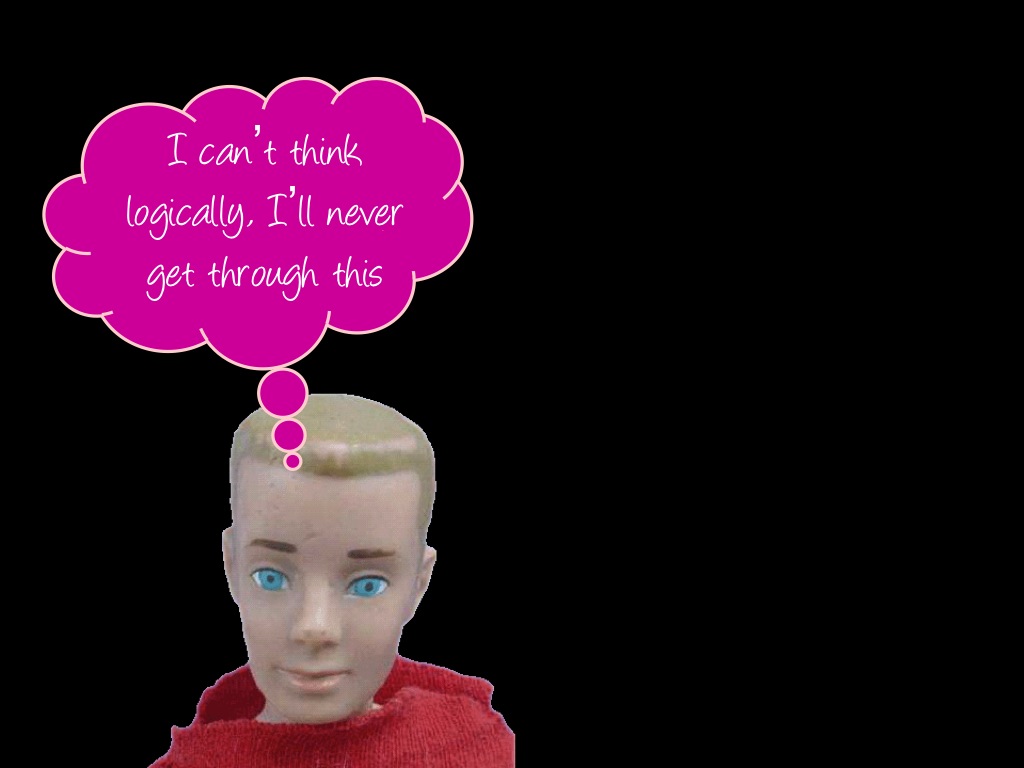
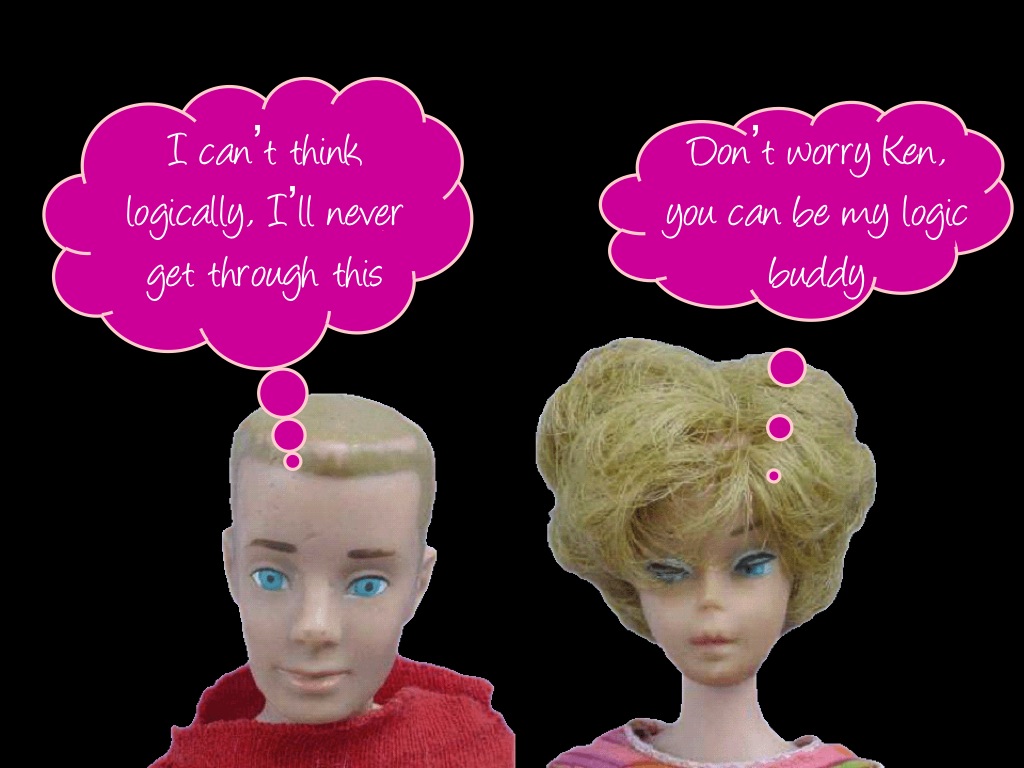

¬, ⊥
\section{¬, ⊥}
\emph{Reading:} §6.3
\section{¬, ⊥}
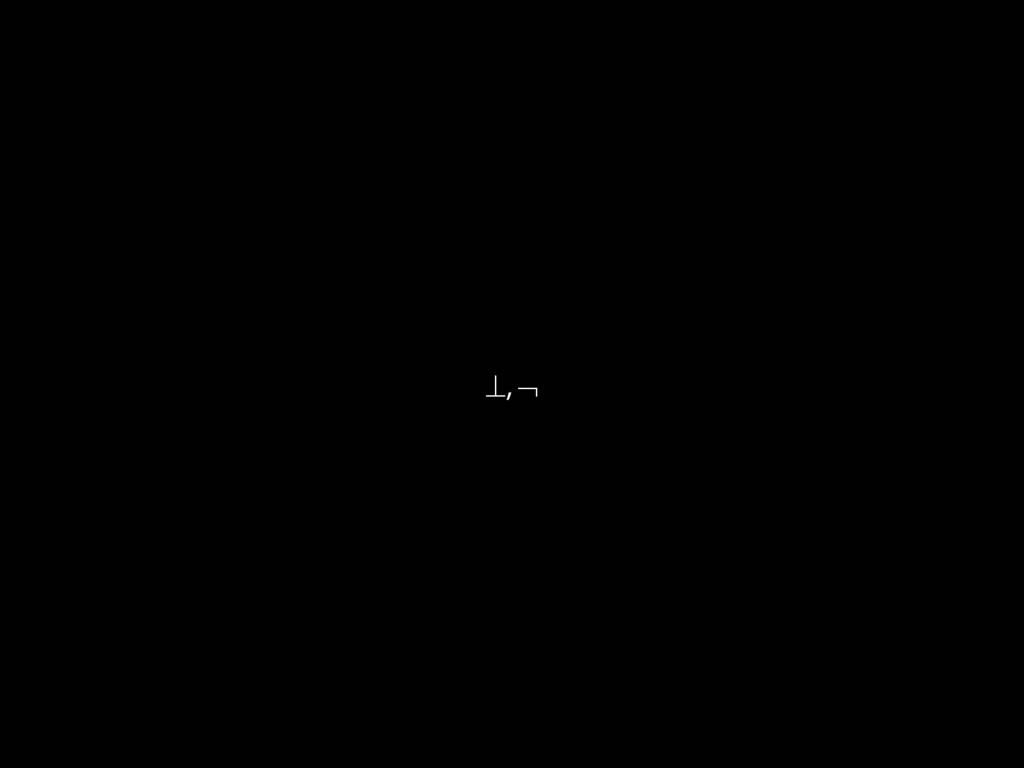
Here are the negation sign and my favourite truth-functional connective, the contradiction sign.
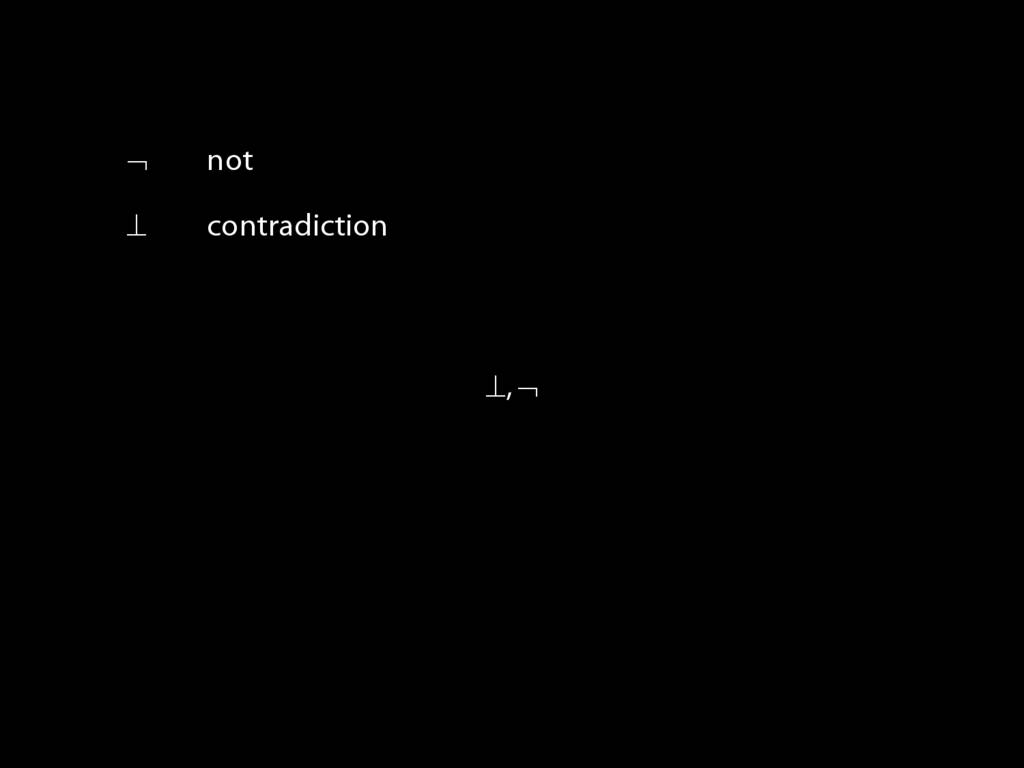
For each of these signs, we want two things: it's truth table and the rules of proof that allow us to exploit it in Fitch proofs.
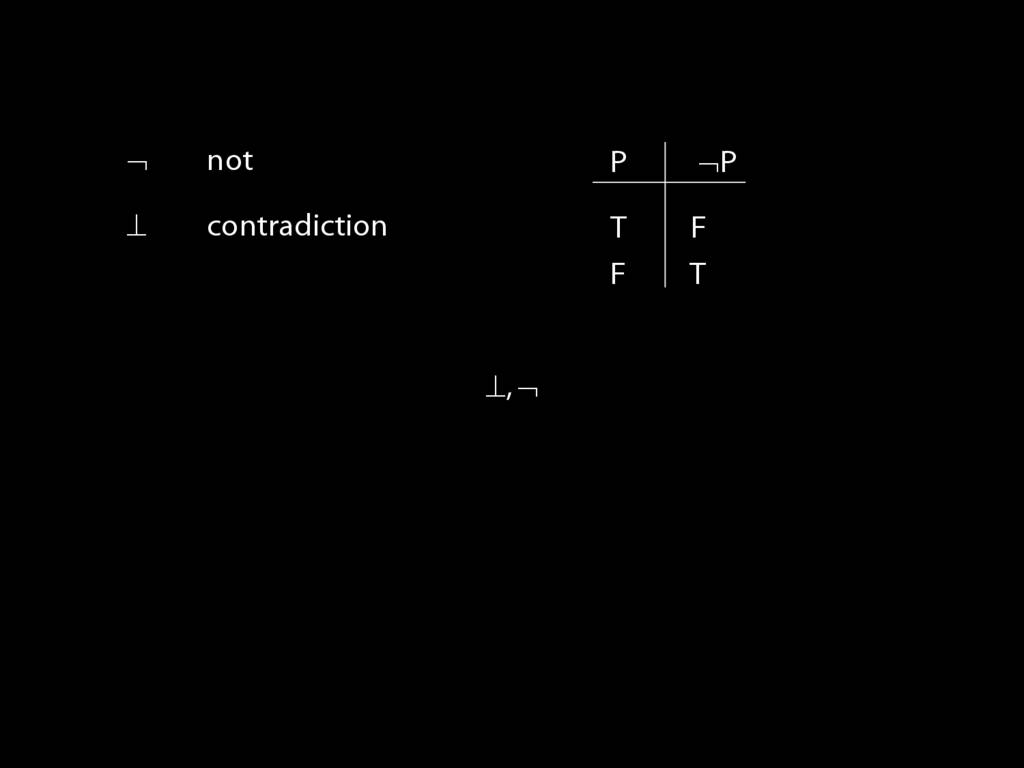
Here's the truth table for negation: it takes true to false and false to true.
This is a sulky attitude to have, but not quite as sulky as the contradiction sign ...
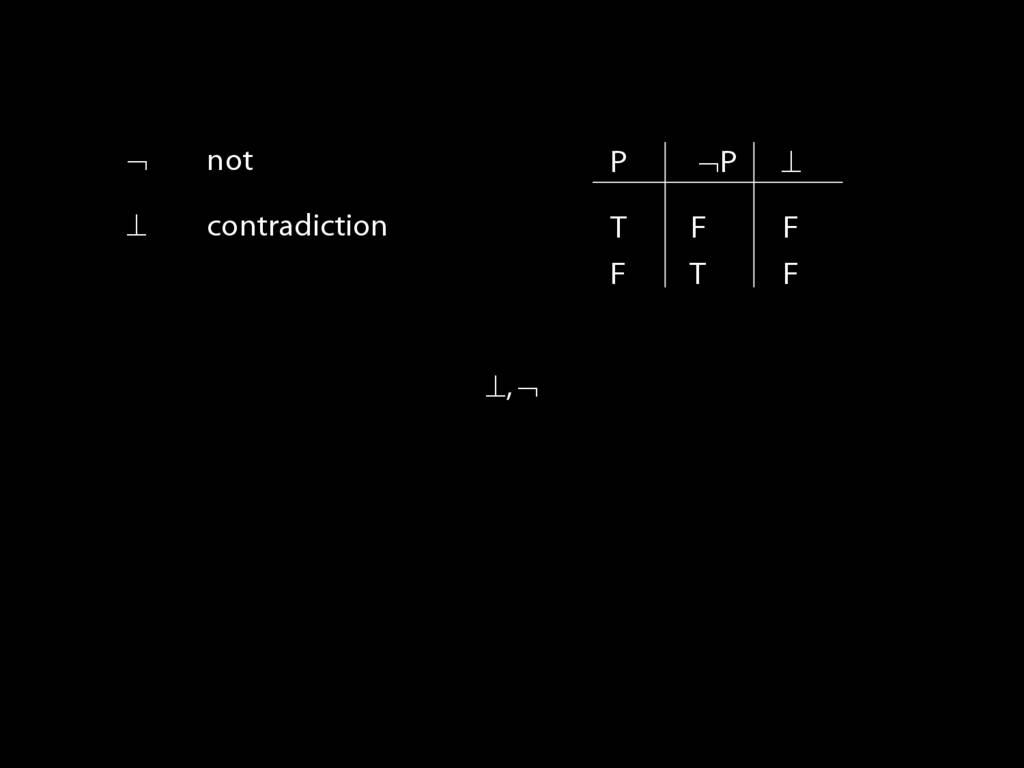
... which just takes everything to false.
(How great is that?)
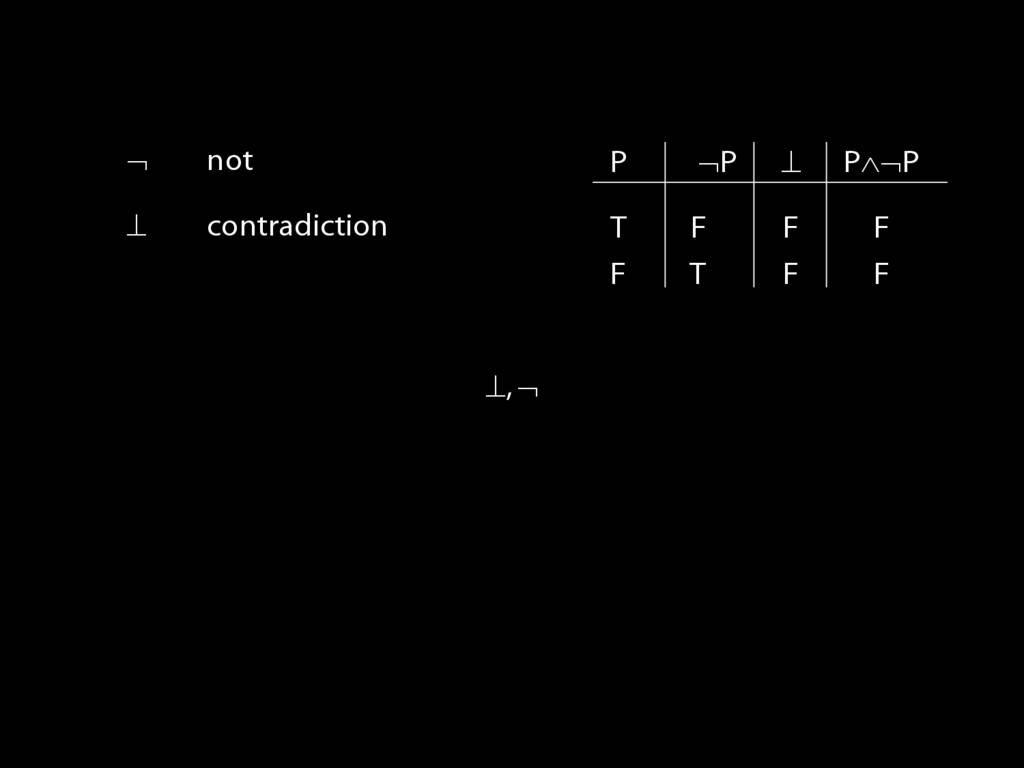
Strictly speaking we don't need the contradiction sign because it has the same truth table as P and not P.
(Well, strictly speaking, we only need one connective, but that is another story.)

Let's do contradiction first.
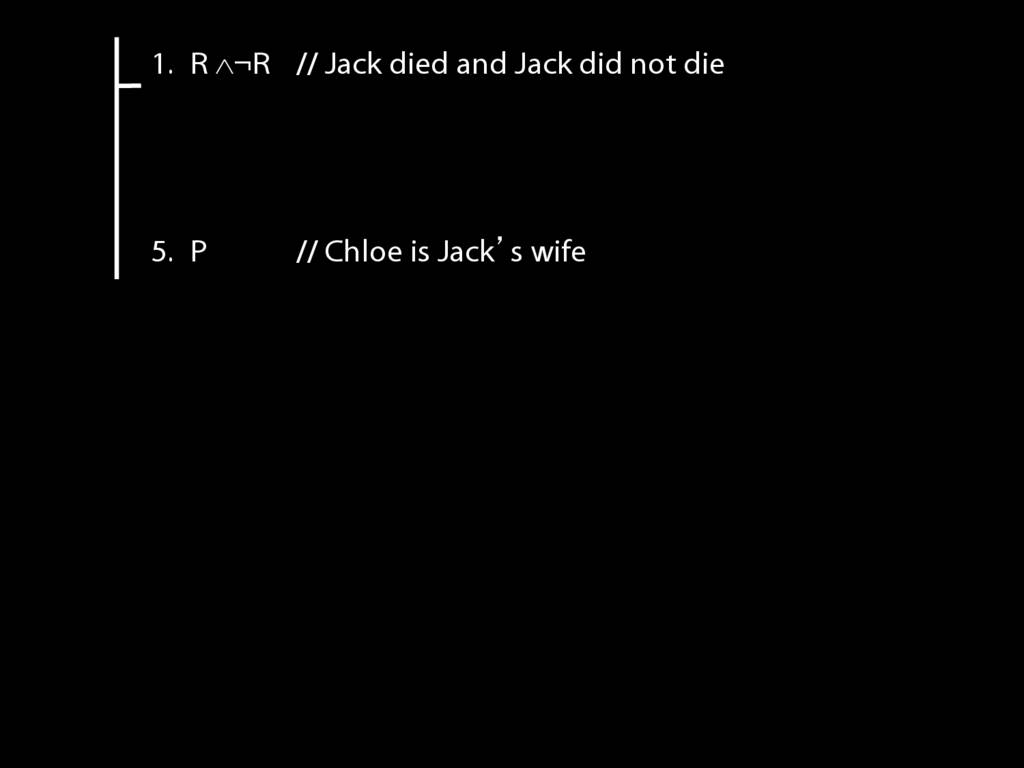
Here is an argument exemplifying the use of the contradiction rules.
We're going to prove it using Fitch, but first, is it valid?
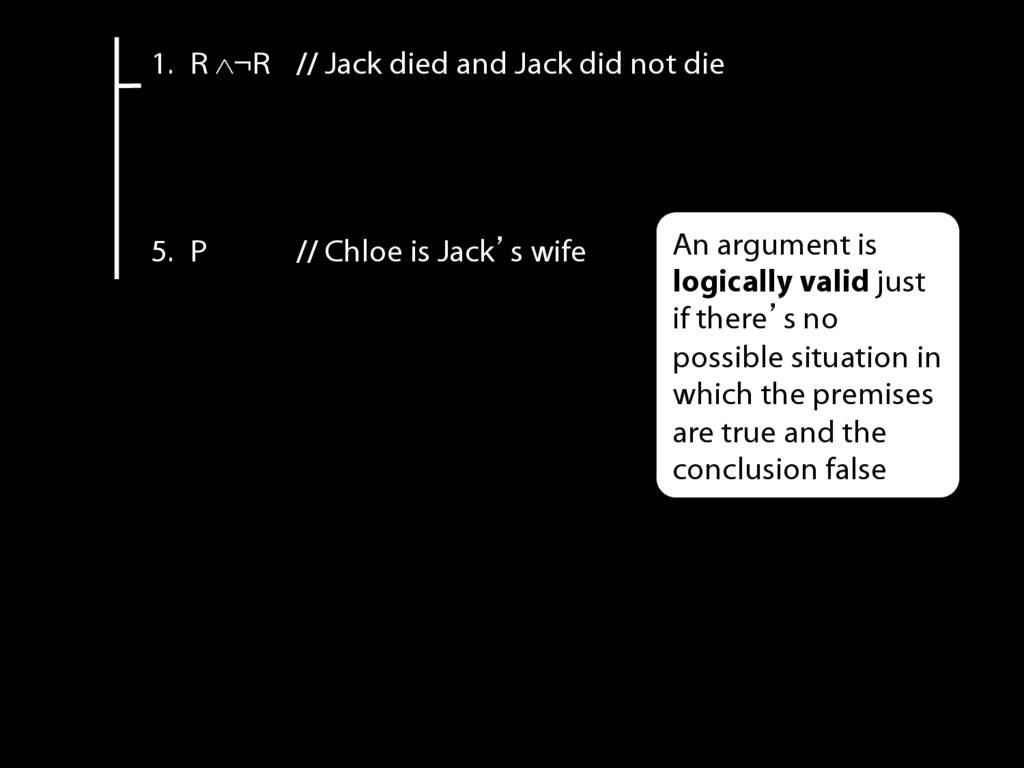
Recall the definition of logical validity.
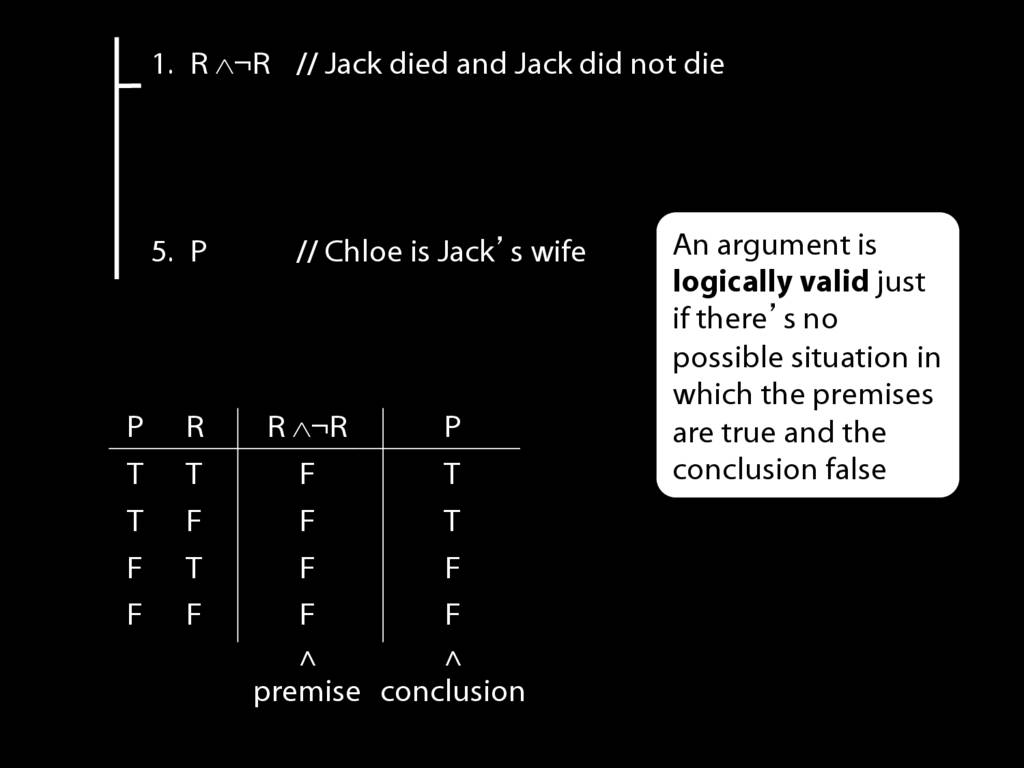
Now looks at the truth-tables for premise and conclusion.
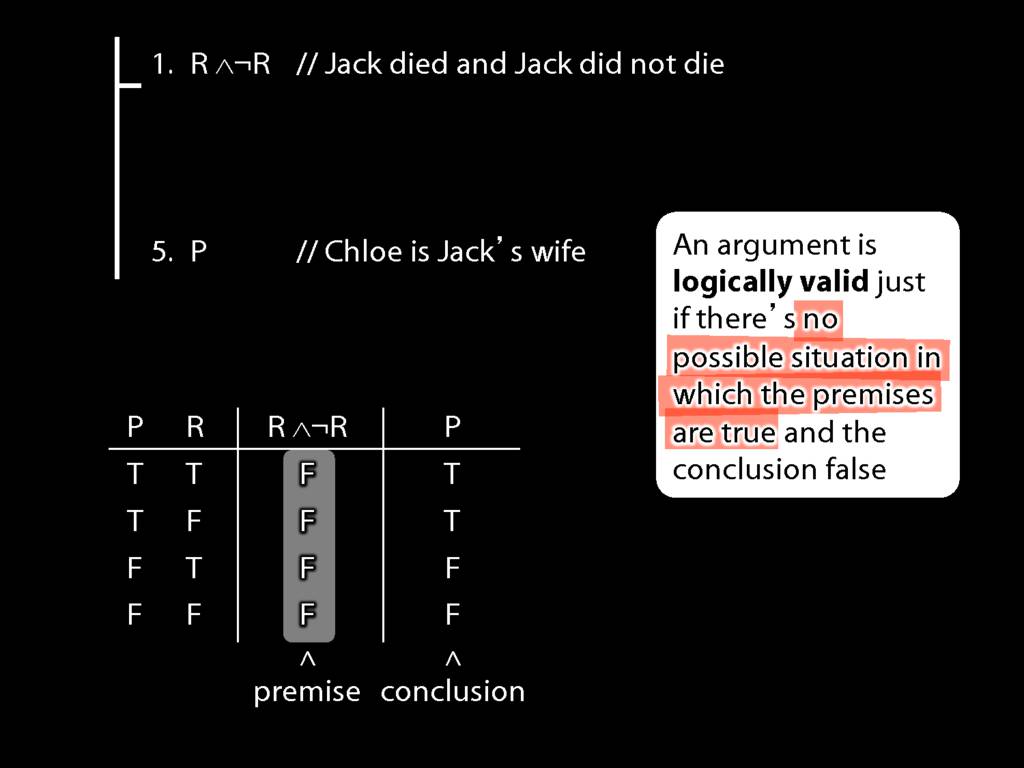
You can see that there's no possible situation in which the premise is true.
So, surely, there can't be a possible situation in which the premise is true AND the conclusion is false.
So the argument is logically valid.
Now let's prove it.

What shall we do first? The premise is a conjunction, so we can apply conjunction elimination.

This gets us R ...
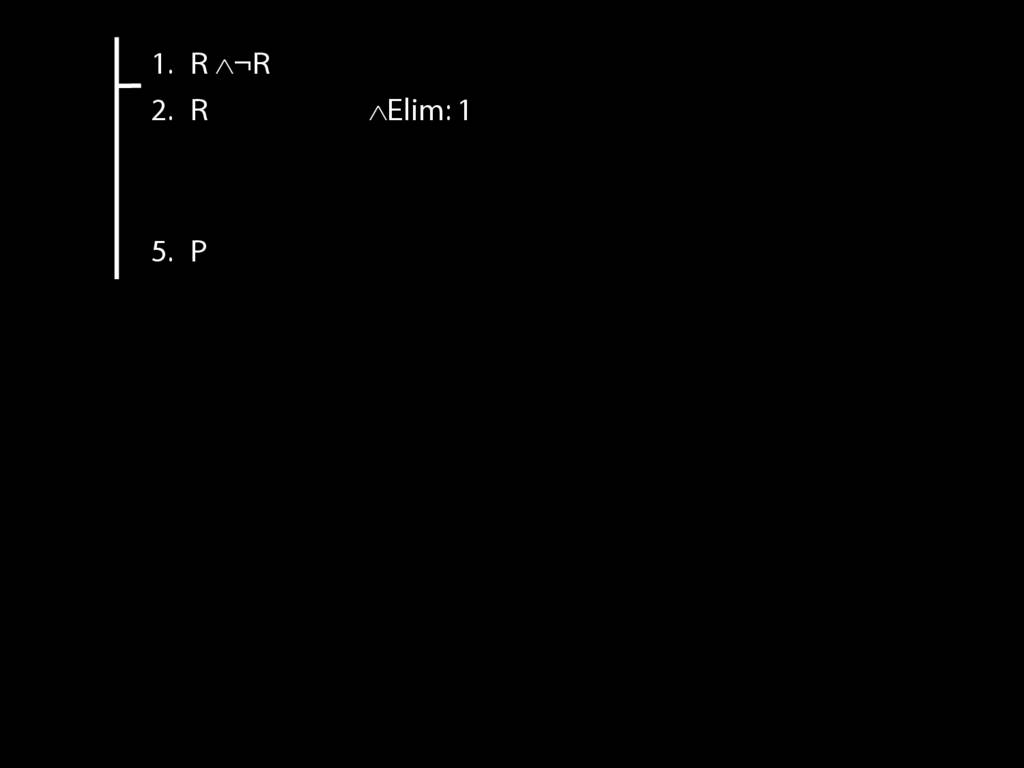
... and we musn't forget to cite the rule and the line number.
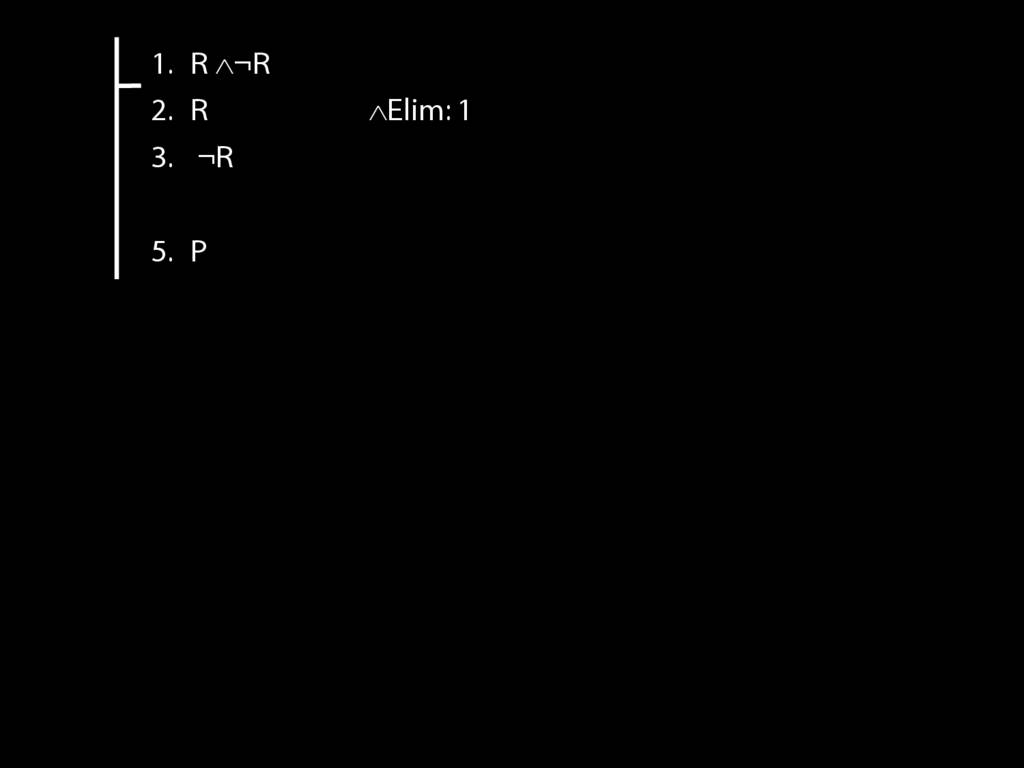
We can also extact not R from the premise ....
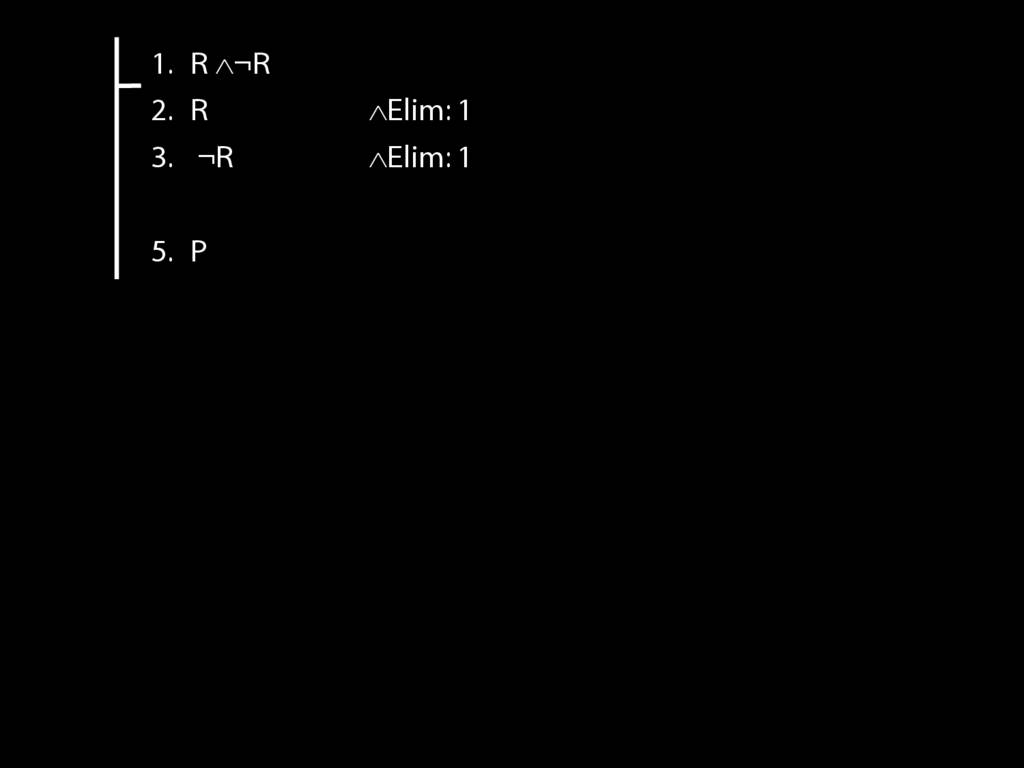
... using the same rule, conjunction elim.
But now what happens?
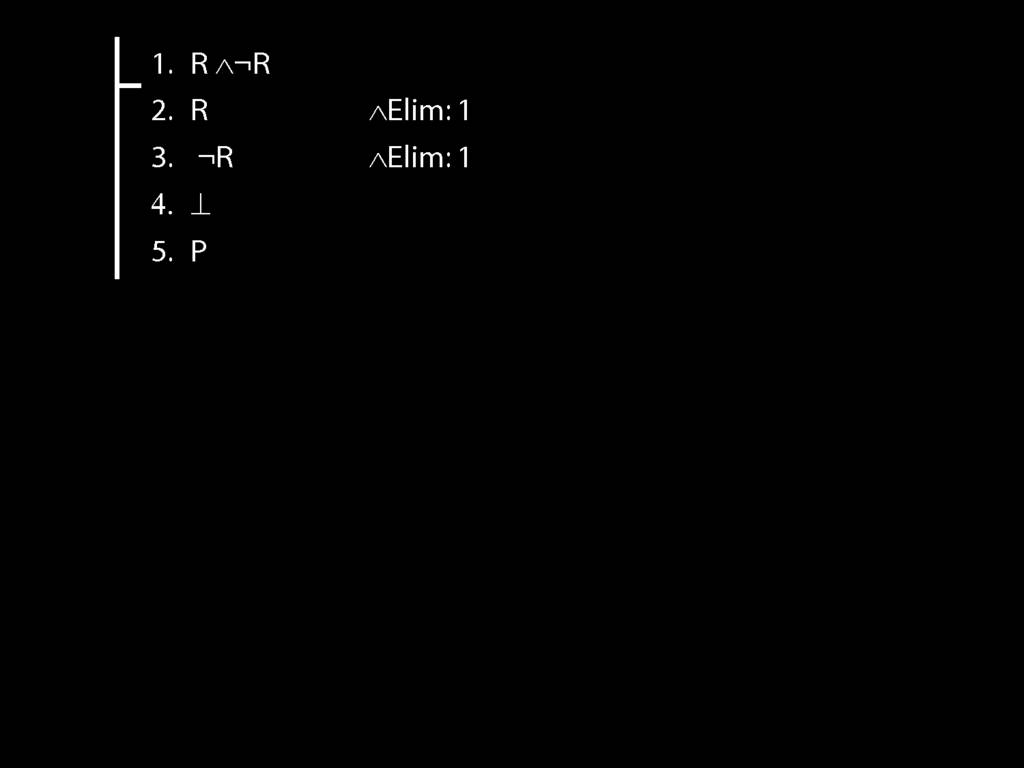
We can introduce a contradiction. Why? What allow us to do this?
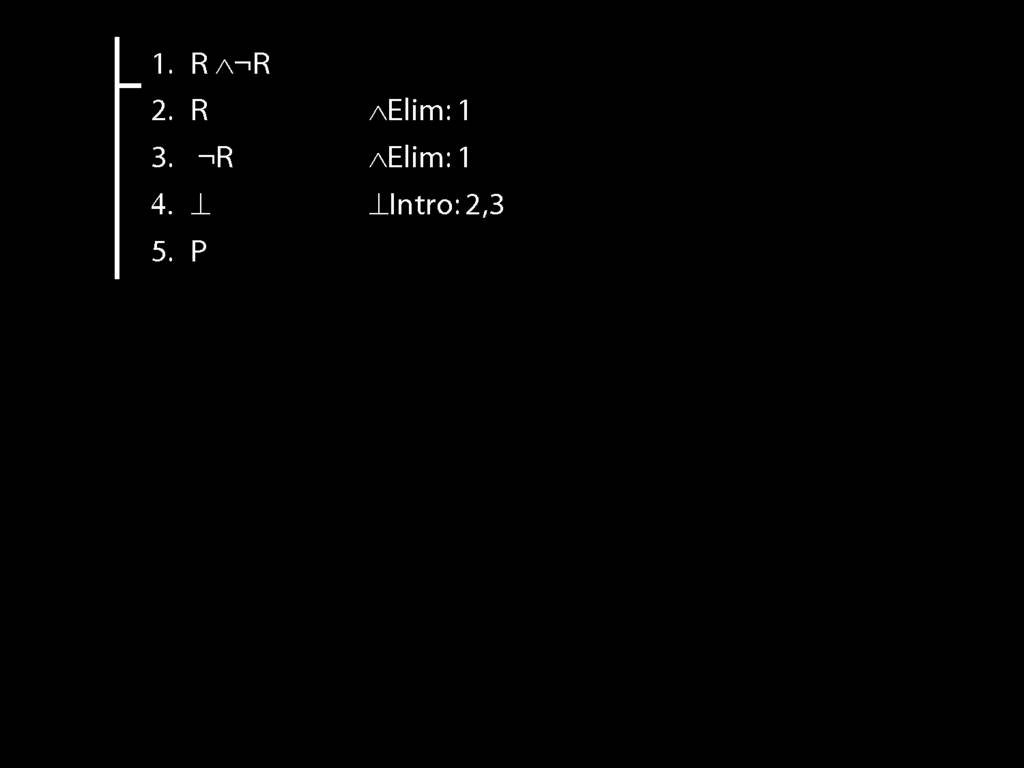
Look at the justification given. This tells us that the rule is contradiction intro ...
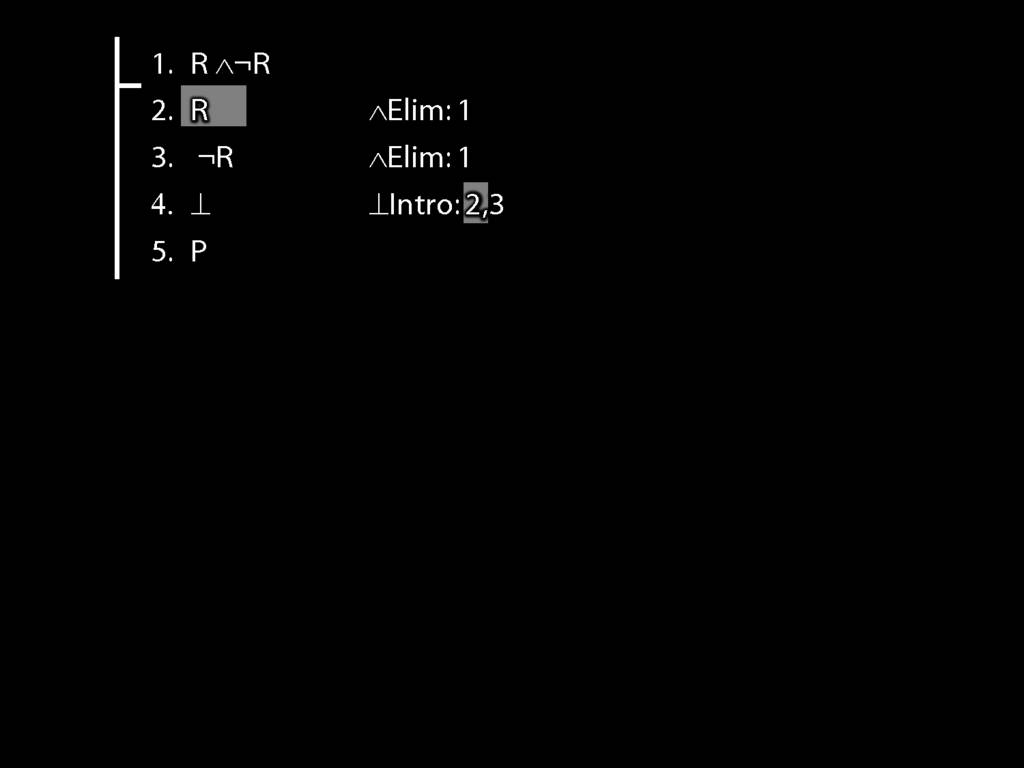
... and it tells us that the lines are 2 ...
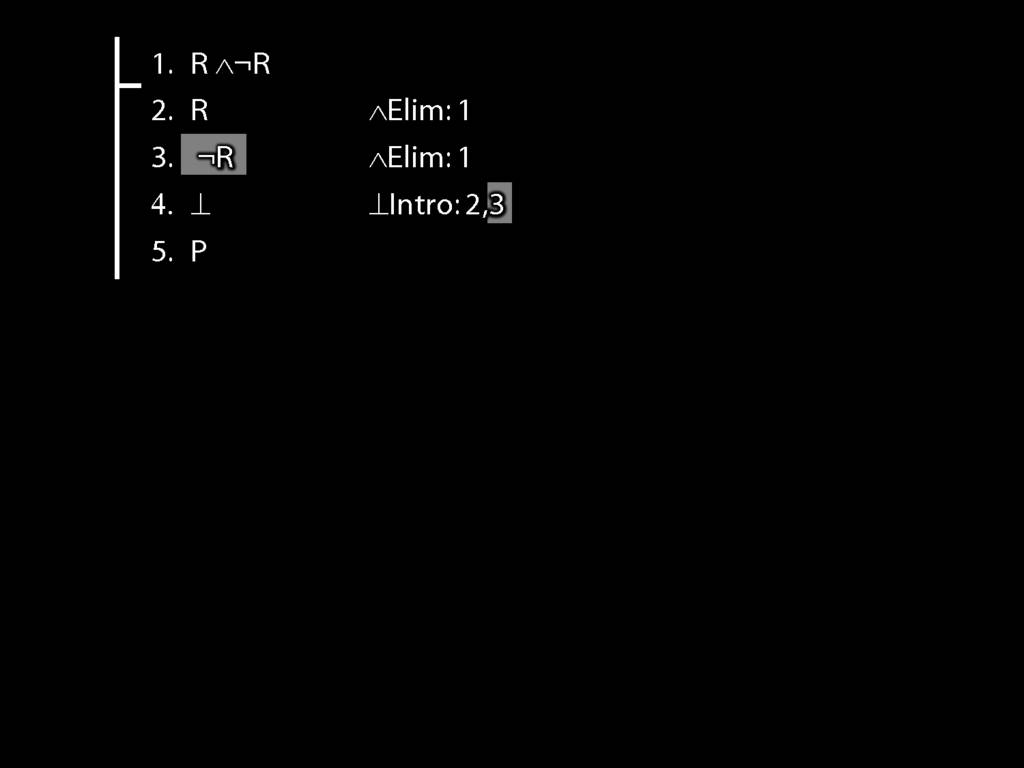
... and 3.
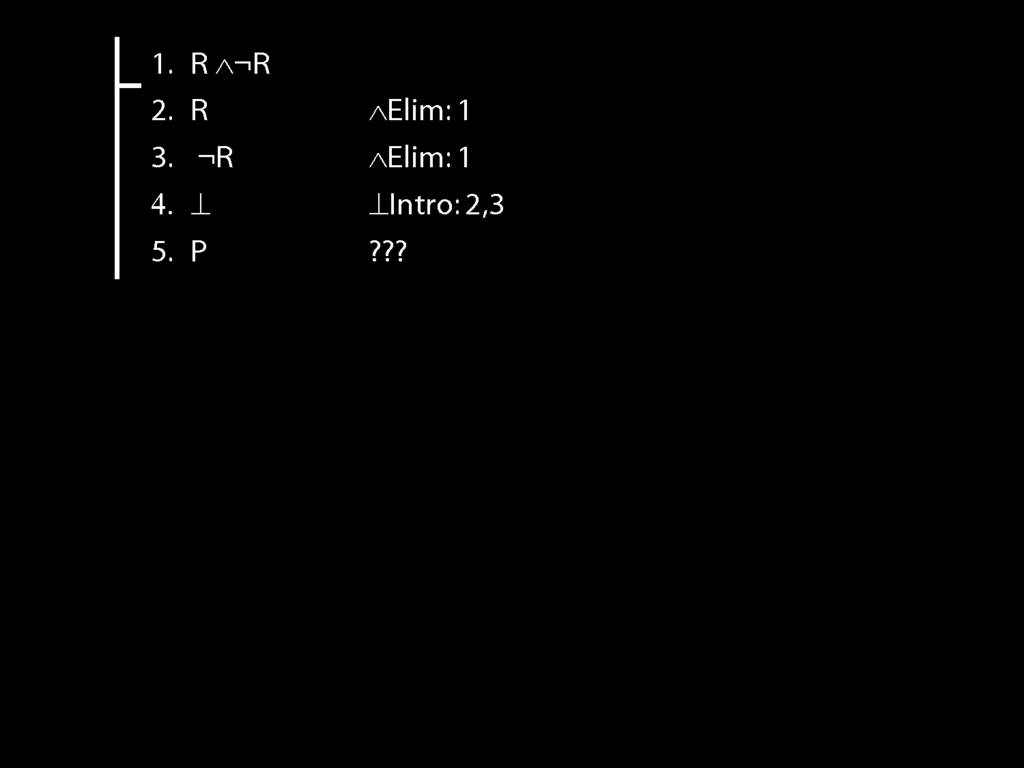
Now how do we get to the conclusion?

Conjunction elimination is made for this purpose.
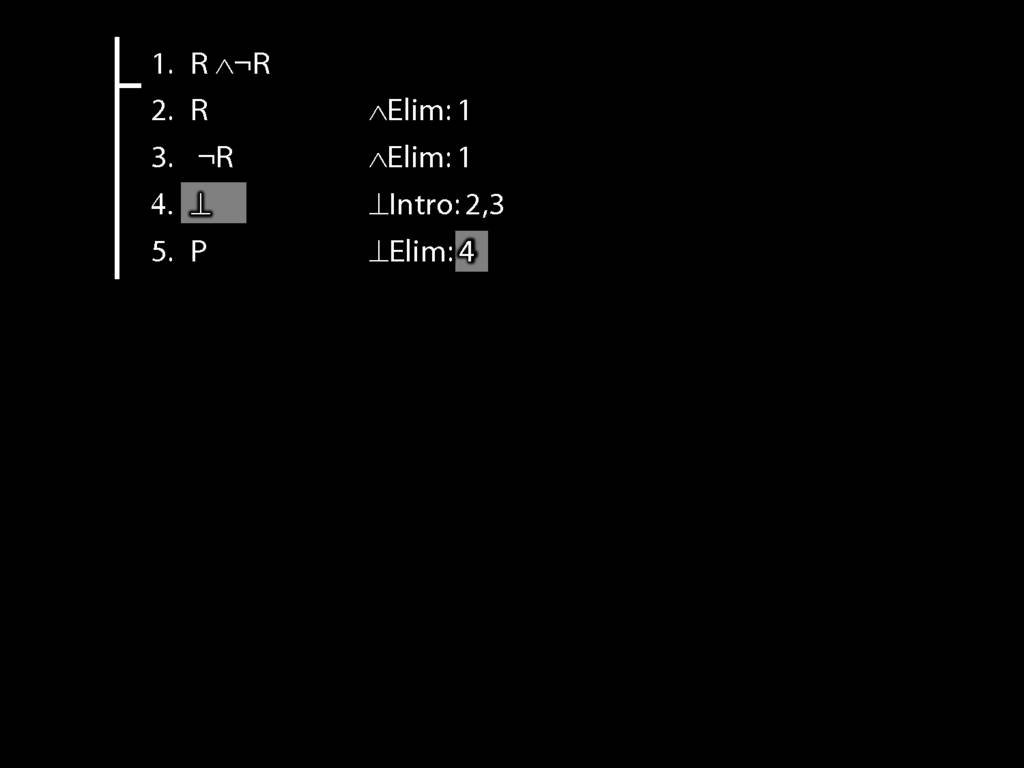
To eliminate the conjuction, we need to cite the line in which it occurs.
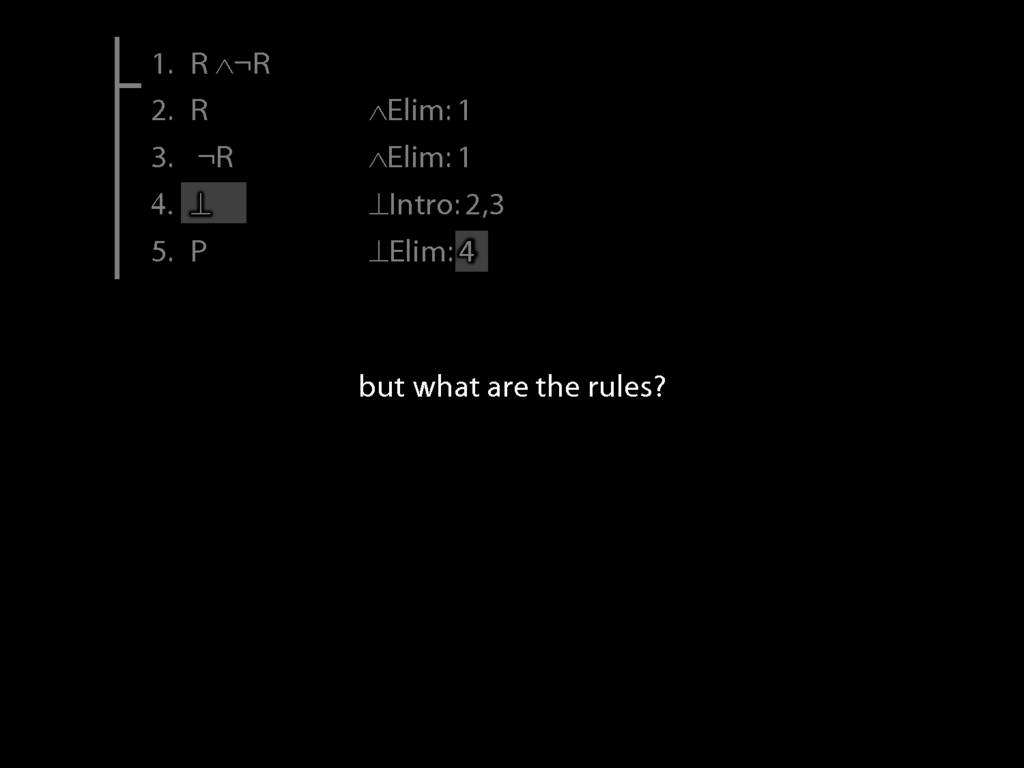
That's good, we've seen the rules contradiction intro and contradiction elim in action. But so far I've not told you what the rules are.
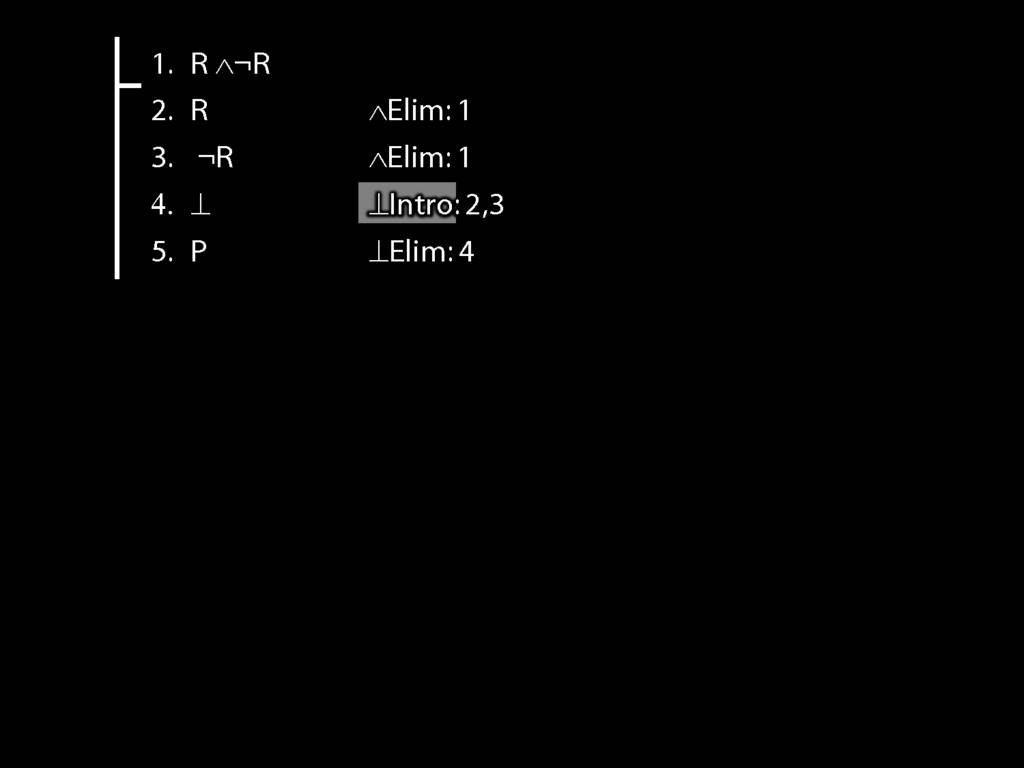
Here's where we used contradiction intro.
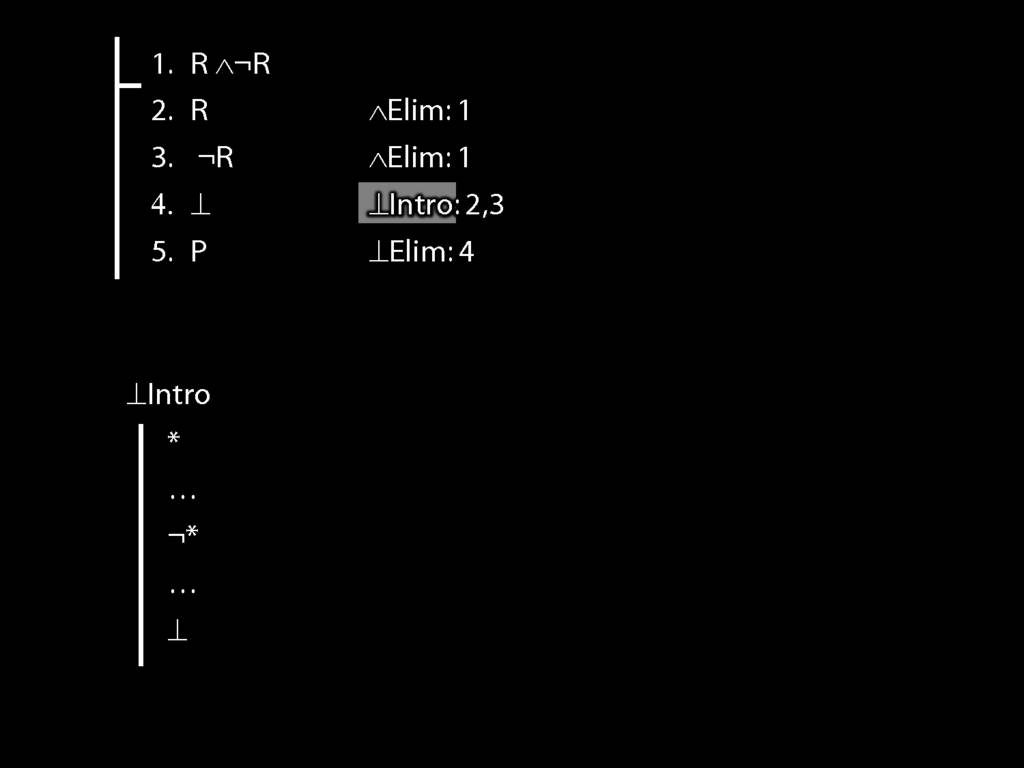
The rule says this ...
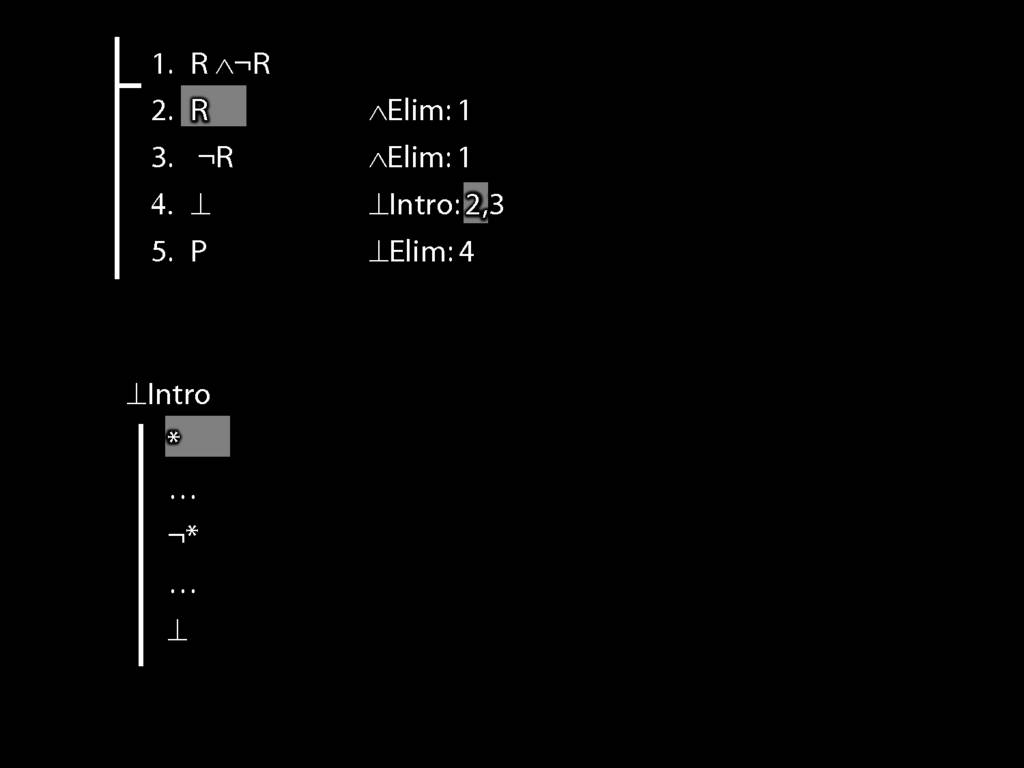
... that if you have a sentence ...

... and also the negation of that same sentence, then ...
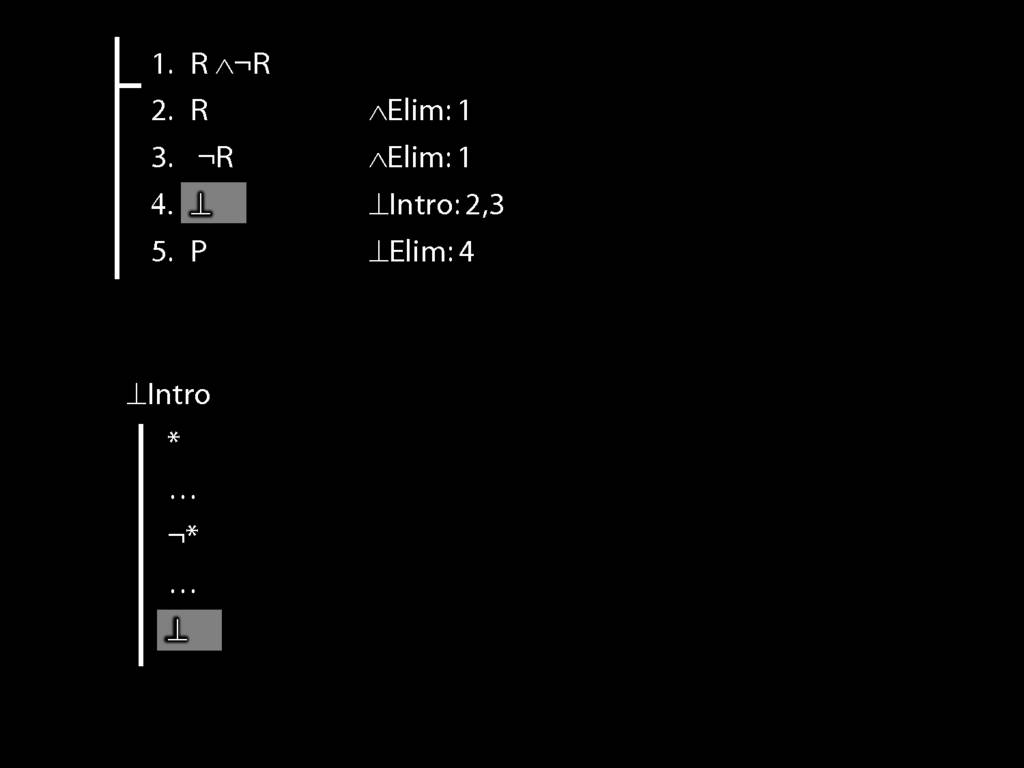
... you can add the contradiction sign in a new line of your proof.
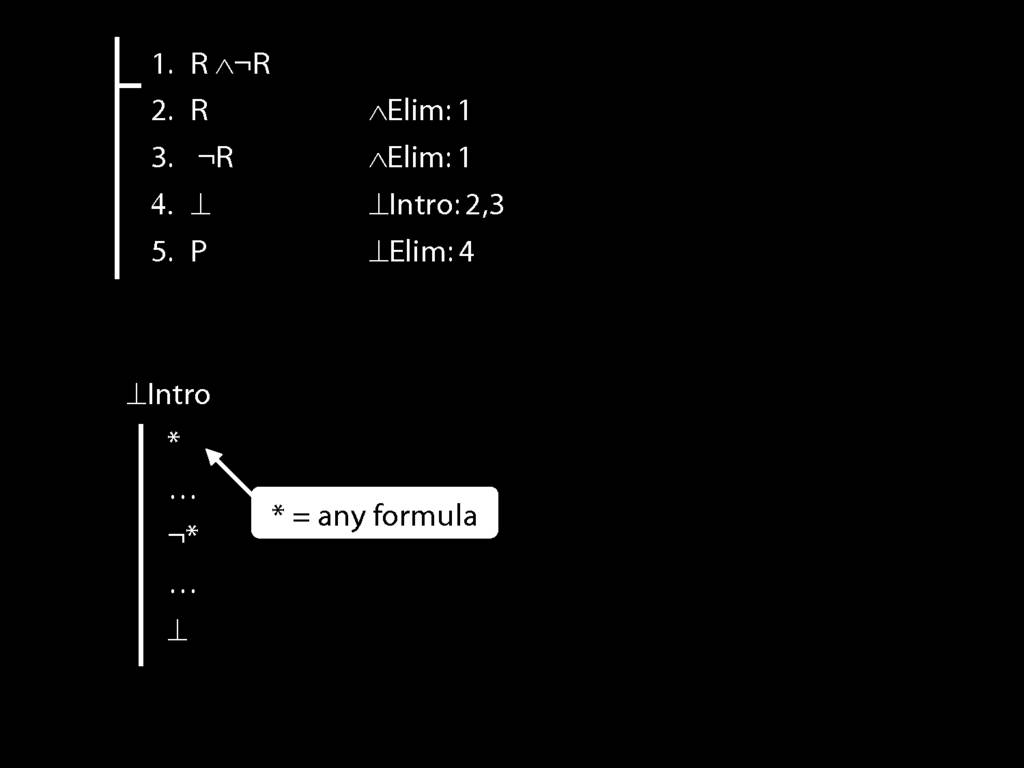
(This works for any sentence, not just sentence letters.)

What about the elim rule, contradiction elim?
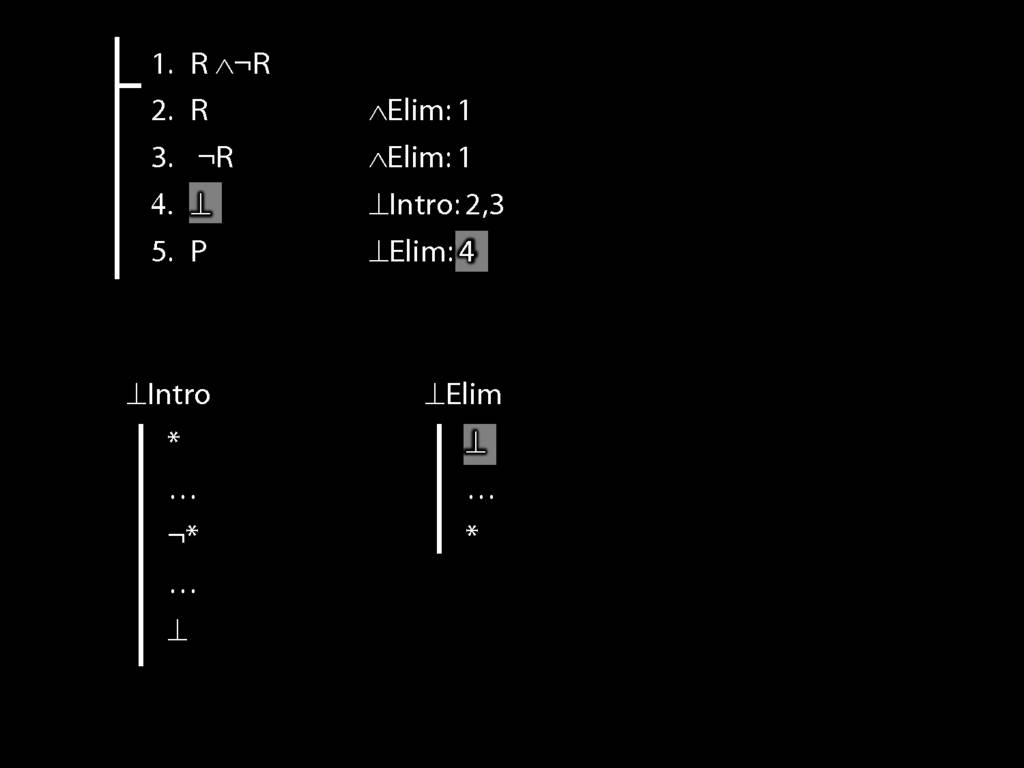
Here's how to use it: you need to have a contradiction in your proof somewhere, ...
... and you cite the contradiction ...
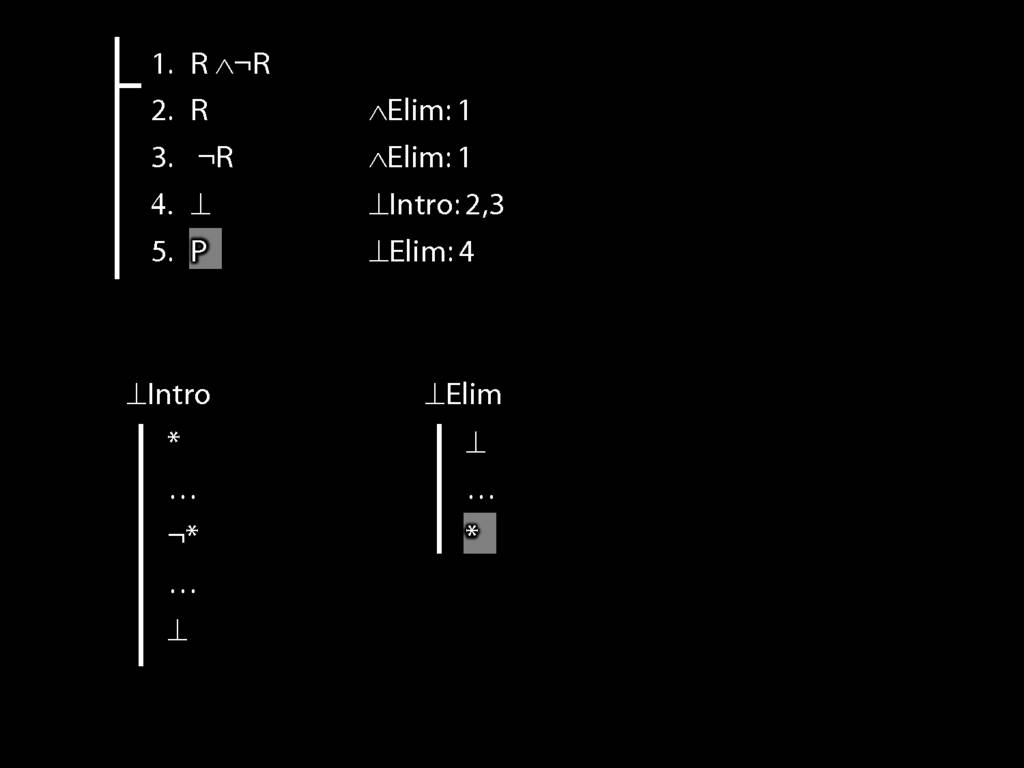
... and you can add whatever you want to your proof.
Contradiction elim is a wonderful rule but it comes with a word of caution.
It's quite rare that you will use contradiction elim.
Most of the time, when you have a contradiction in your proof, the rule you actually want is negation introdction.
So be careful when you feel the urge to eliminate a contardiction: always ask yourself whether you shouldn't be introducing negation yet.
(We'll see how to introduce negation later.)
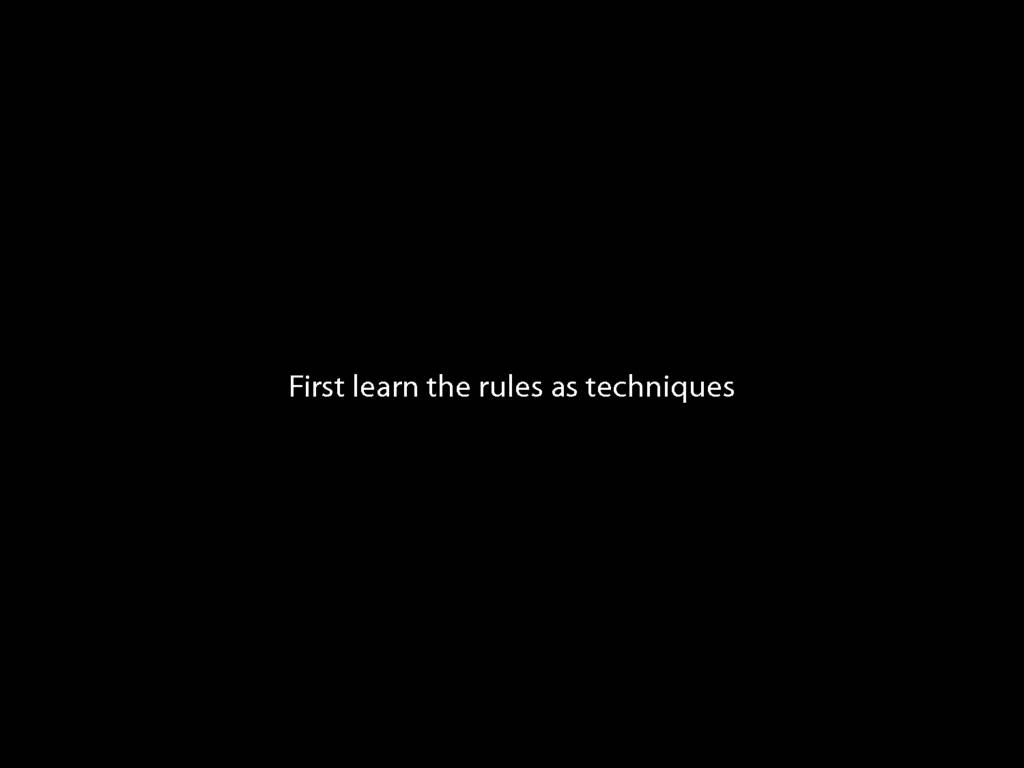
I haven't explain anything about why the rules should work as they do.
My suggestion is that you first learn the rules without thinking about their meaning,
and later we'll discuss how the rules relate to logical validity.
(This is a bit different from the textbook which wants you to think about why the rules are good before you use them.)

→Intro, →Elim
\section{→Intro, →Elim}
\emph{Reading:} §8.1, §8.2
\section{→Intro, →Elim}
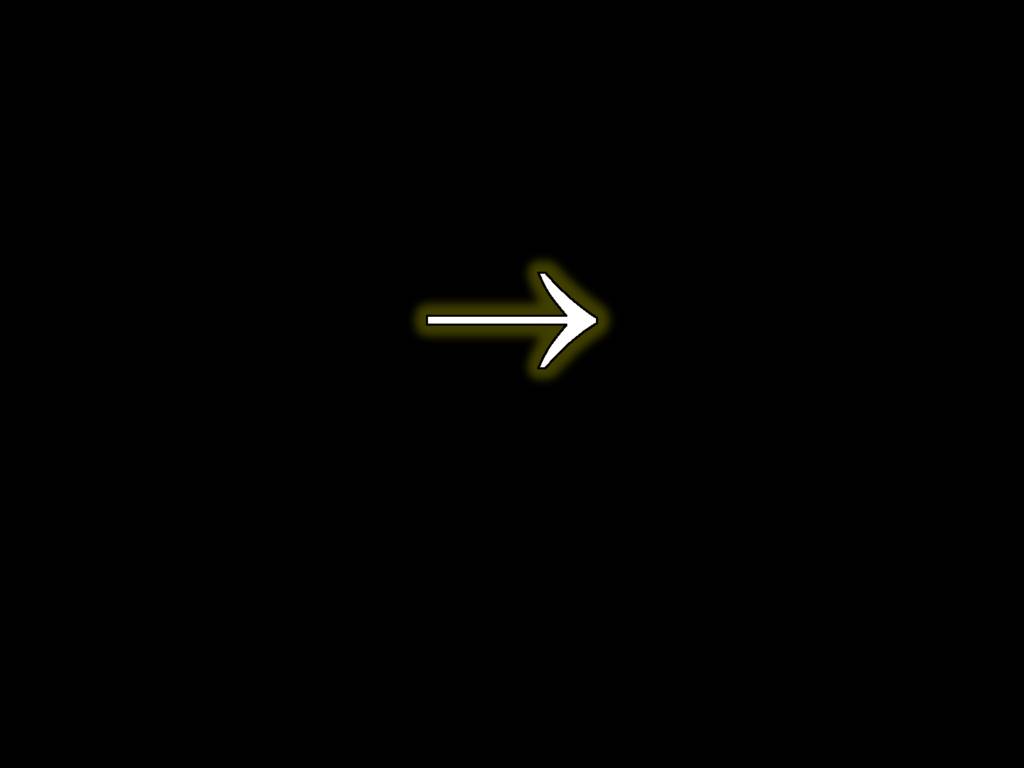
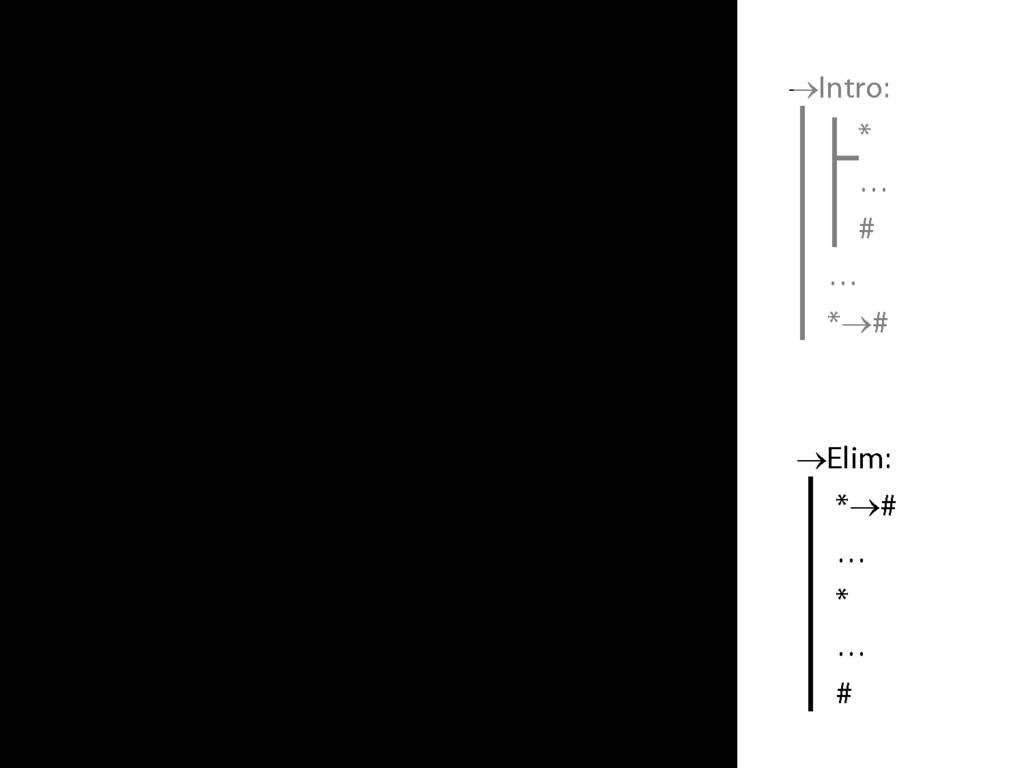
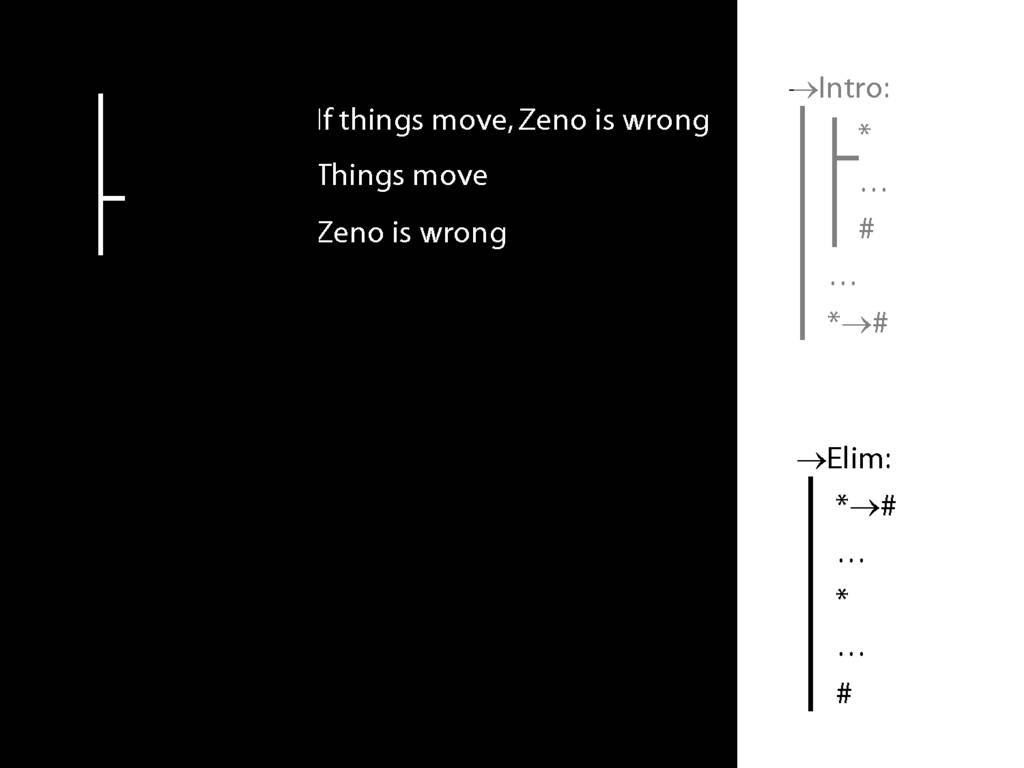
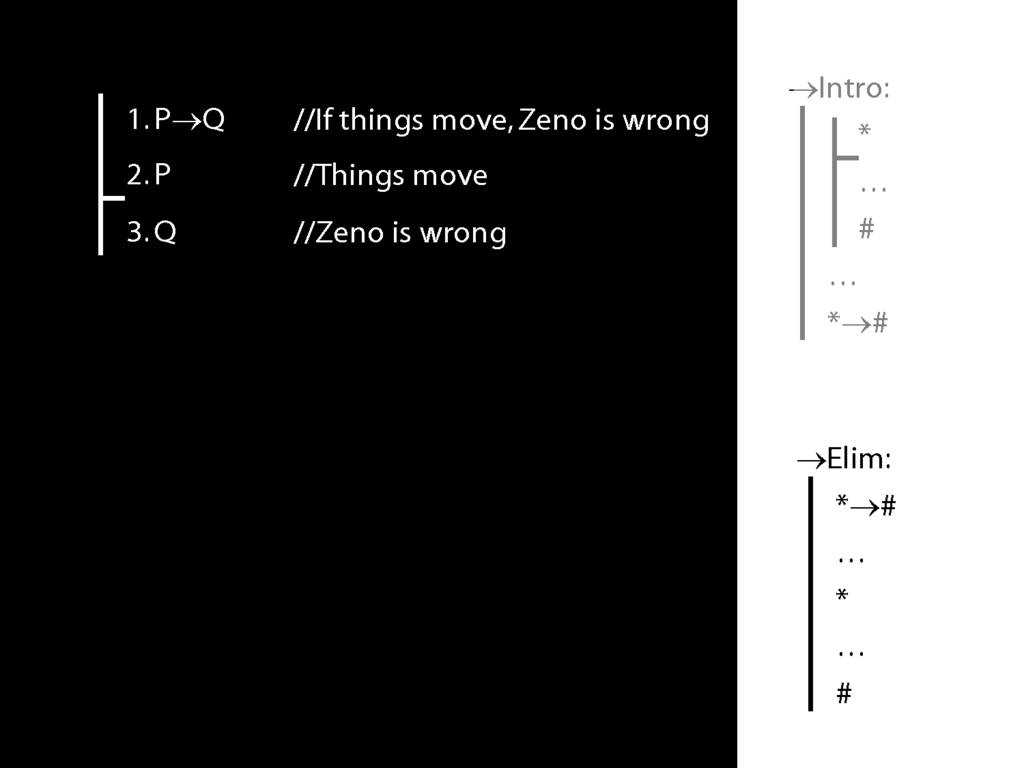
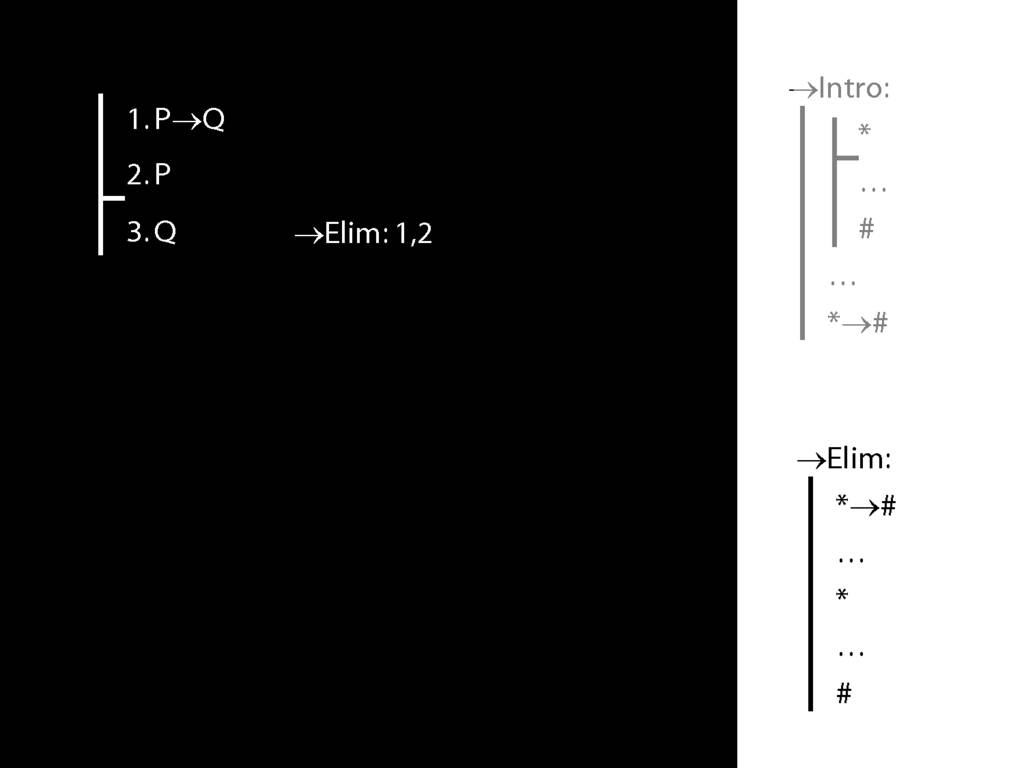
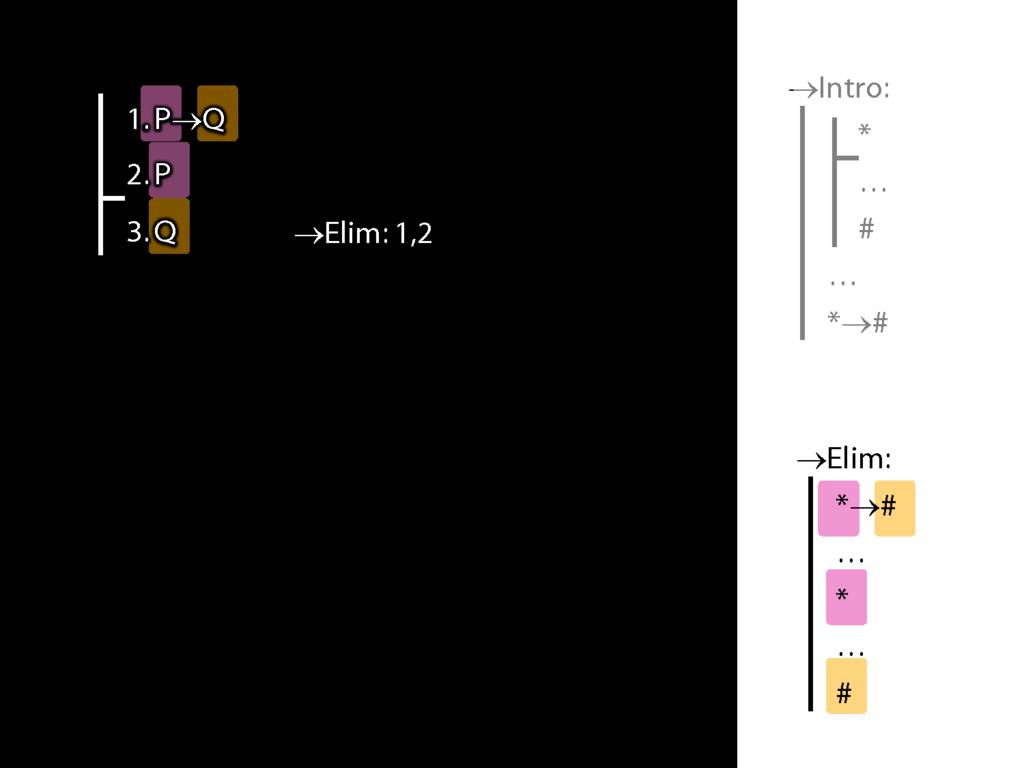
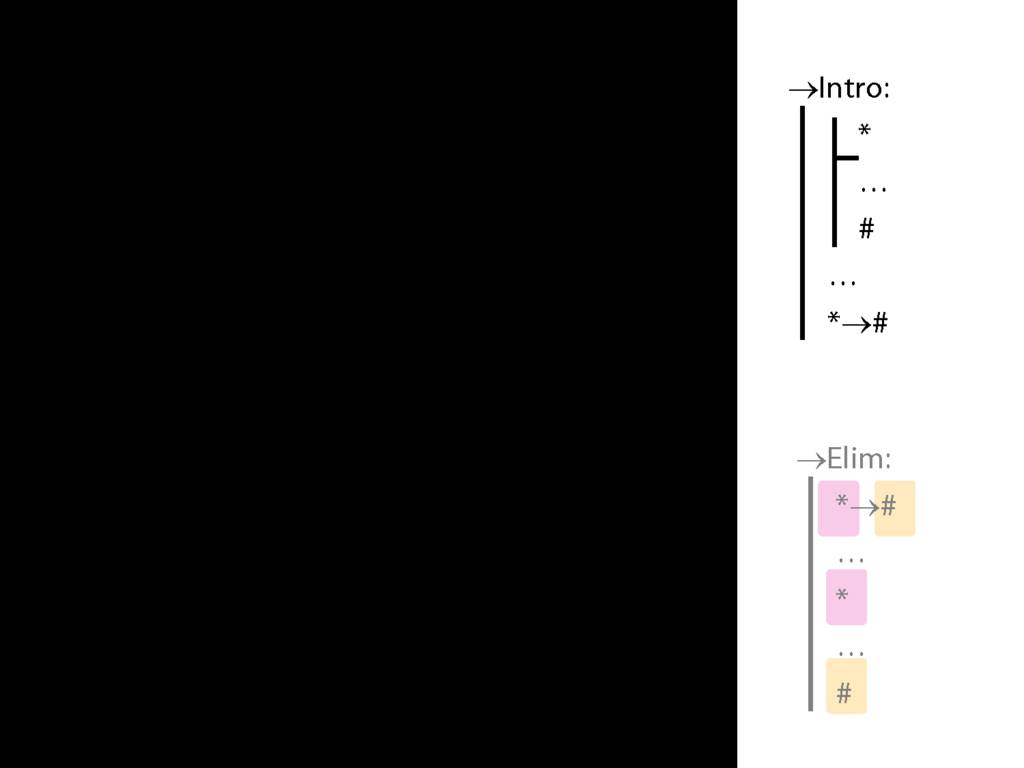


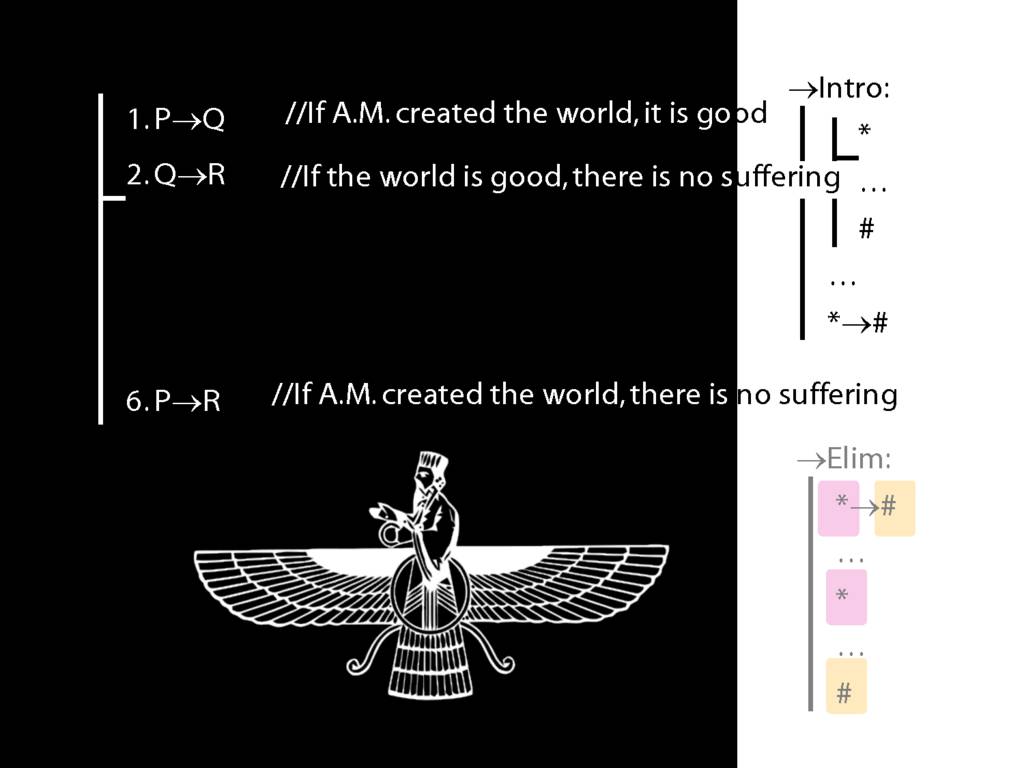
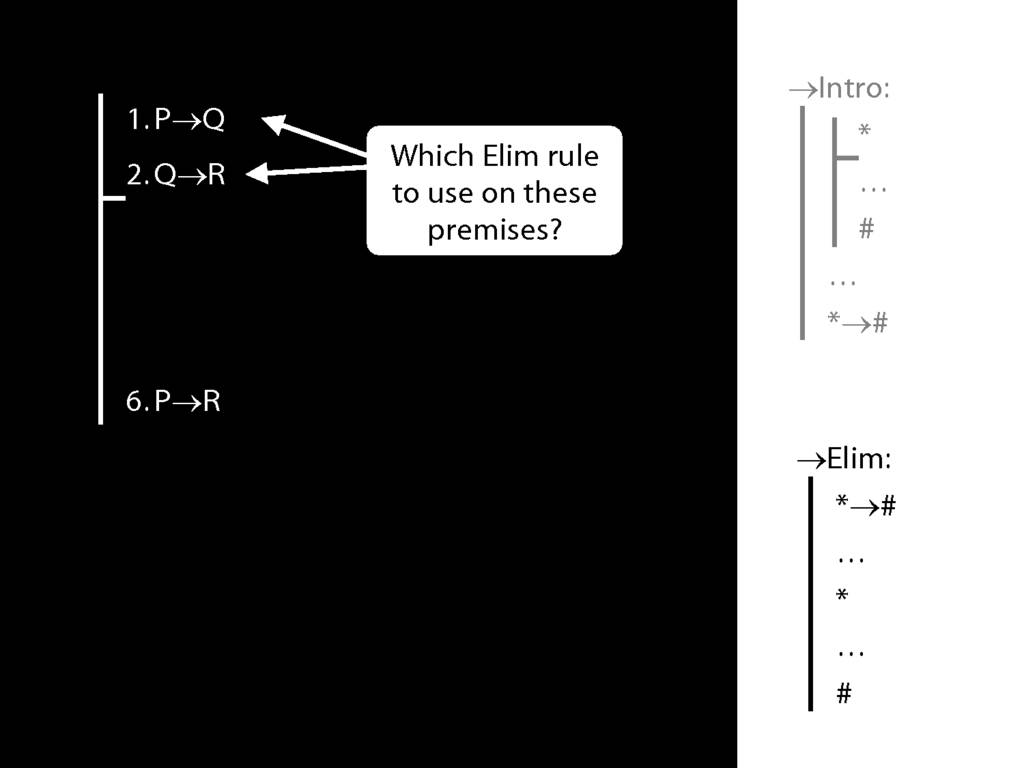
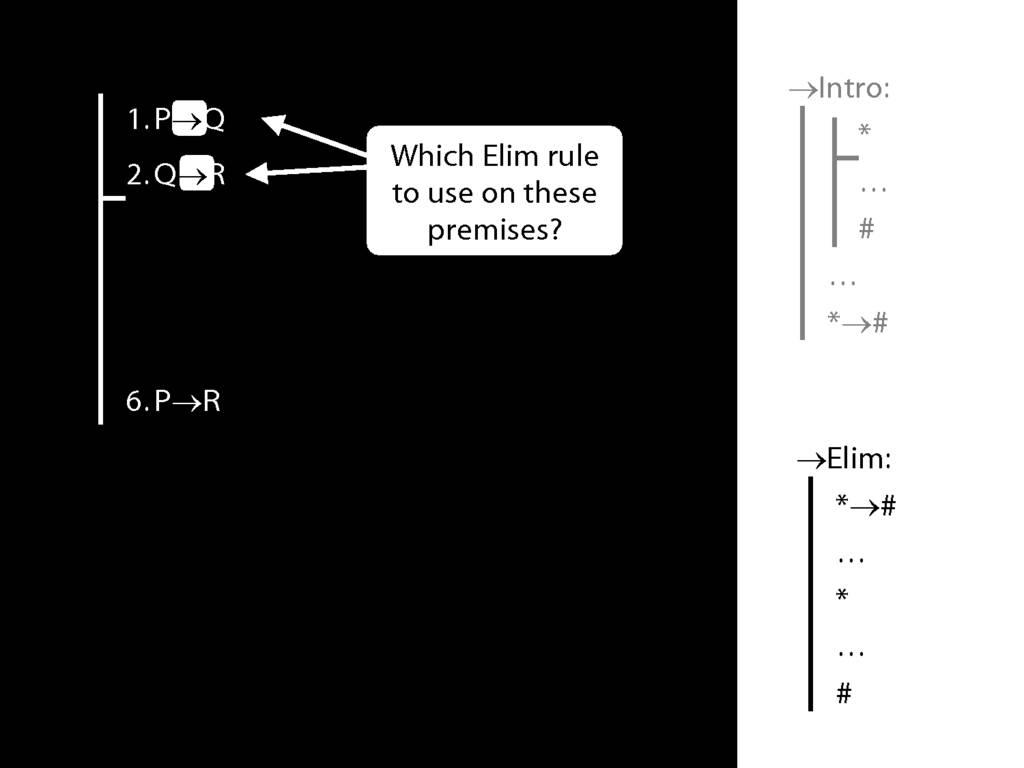
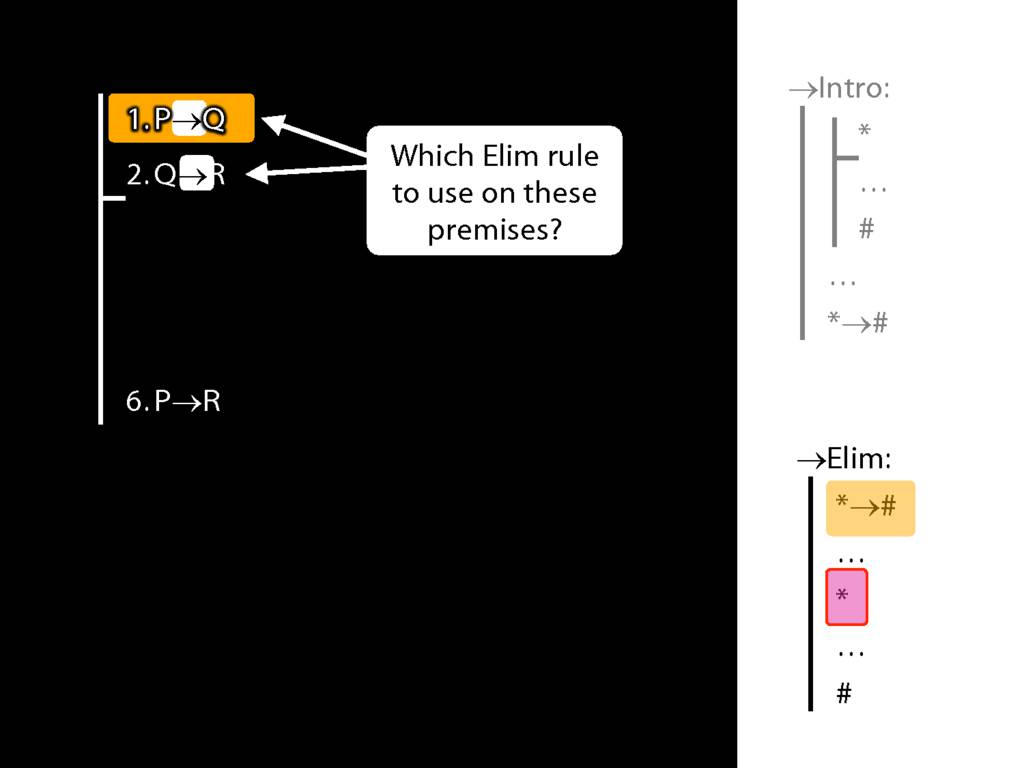
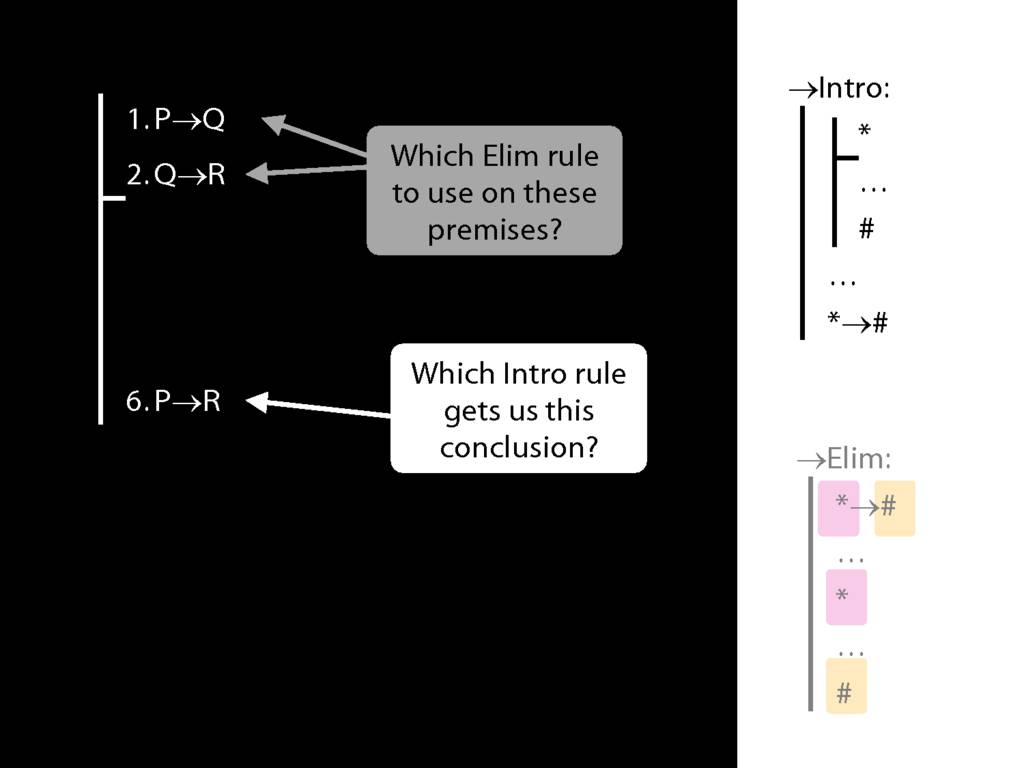
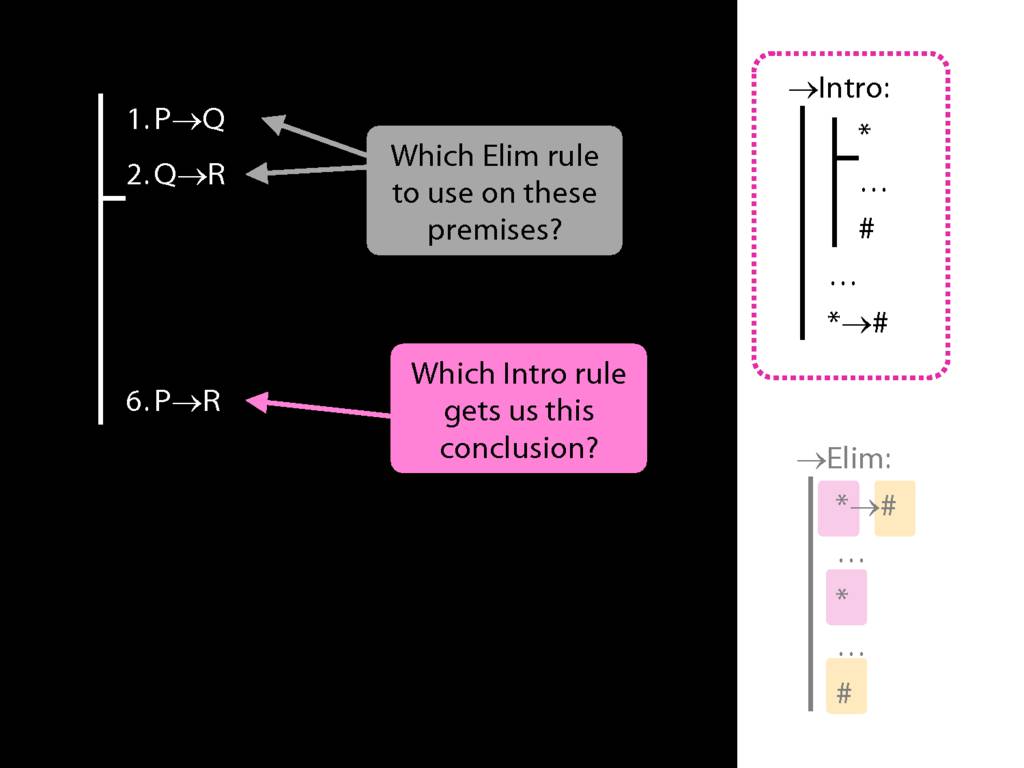
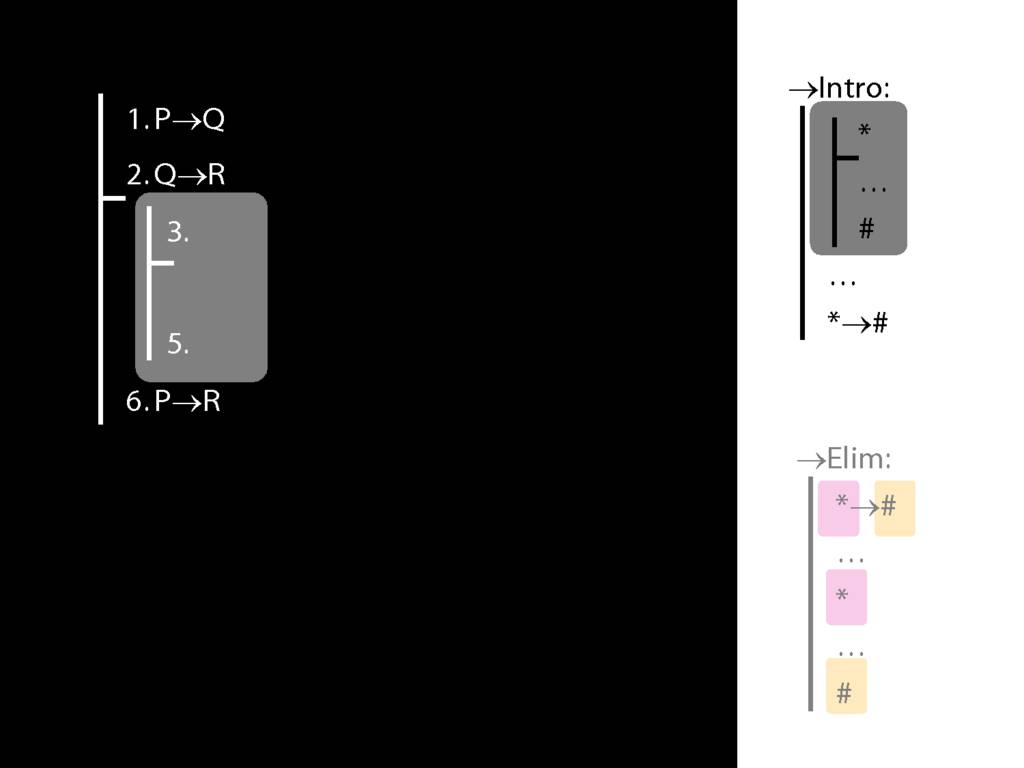
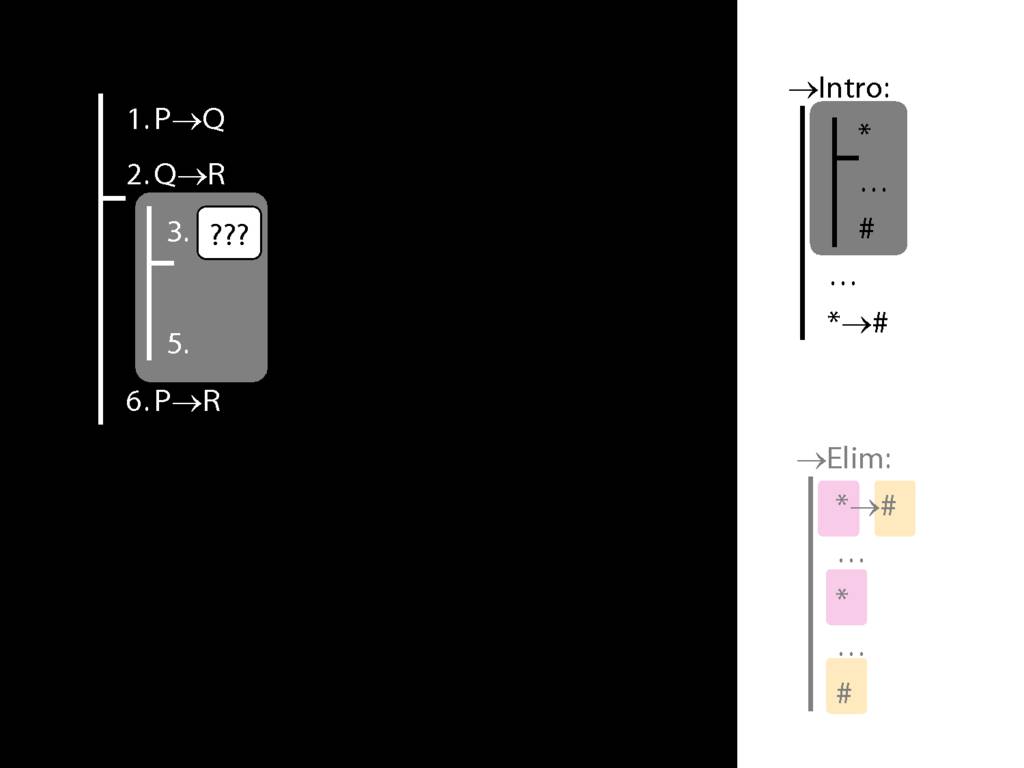
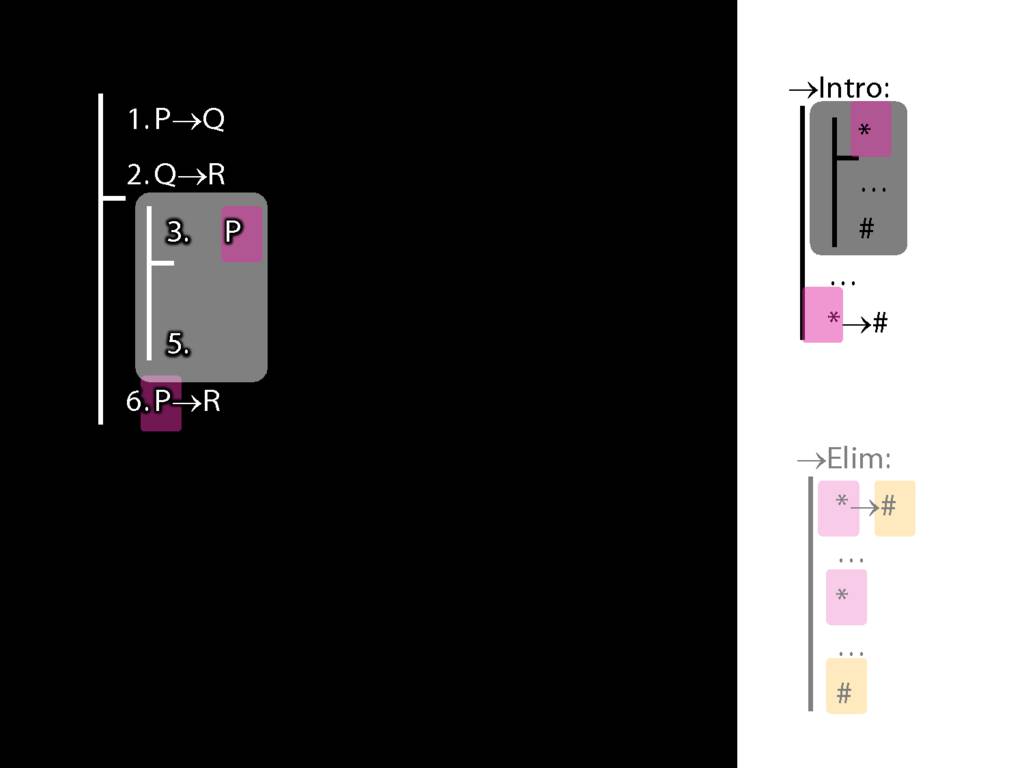
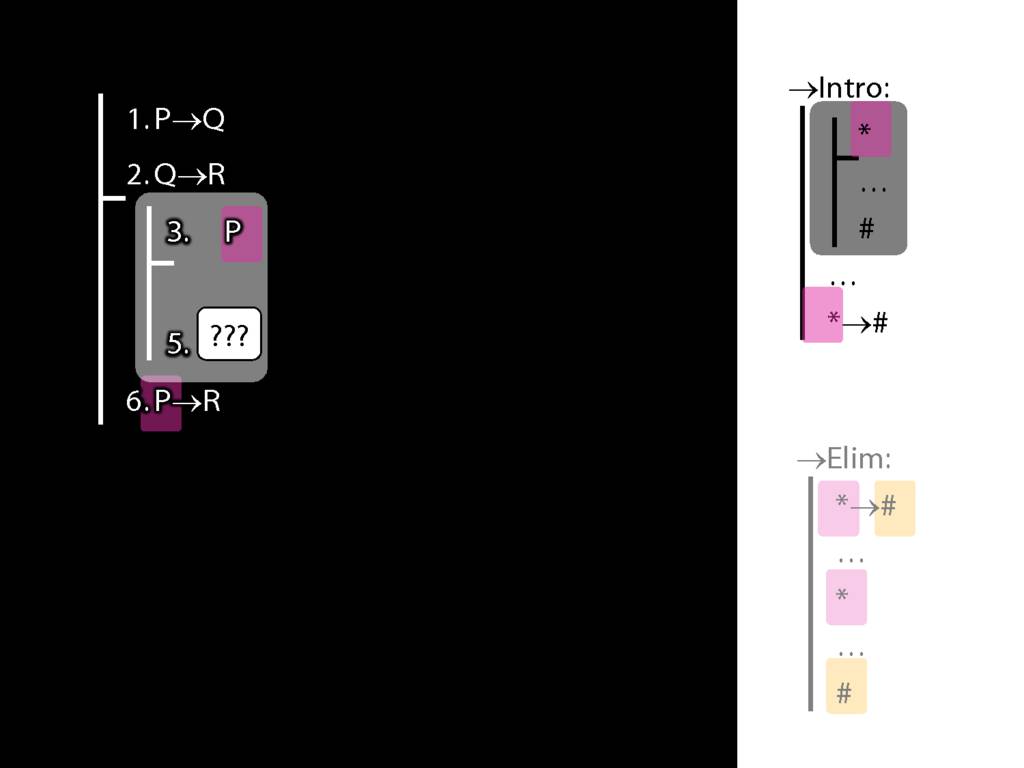
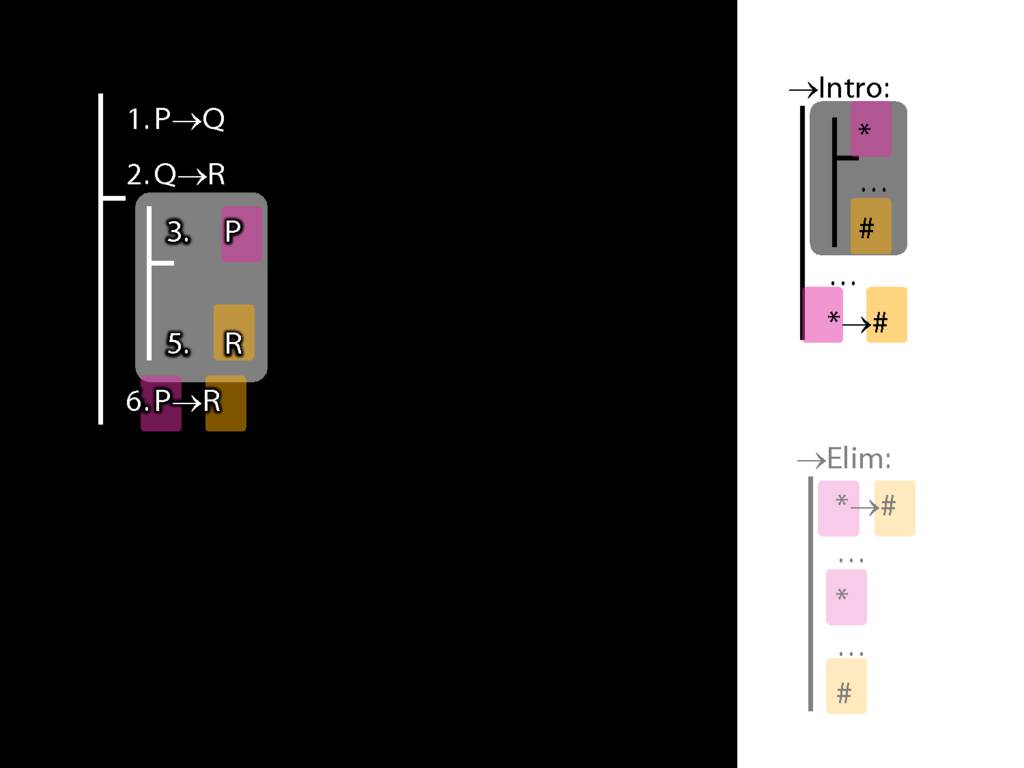
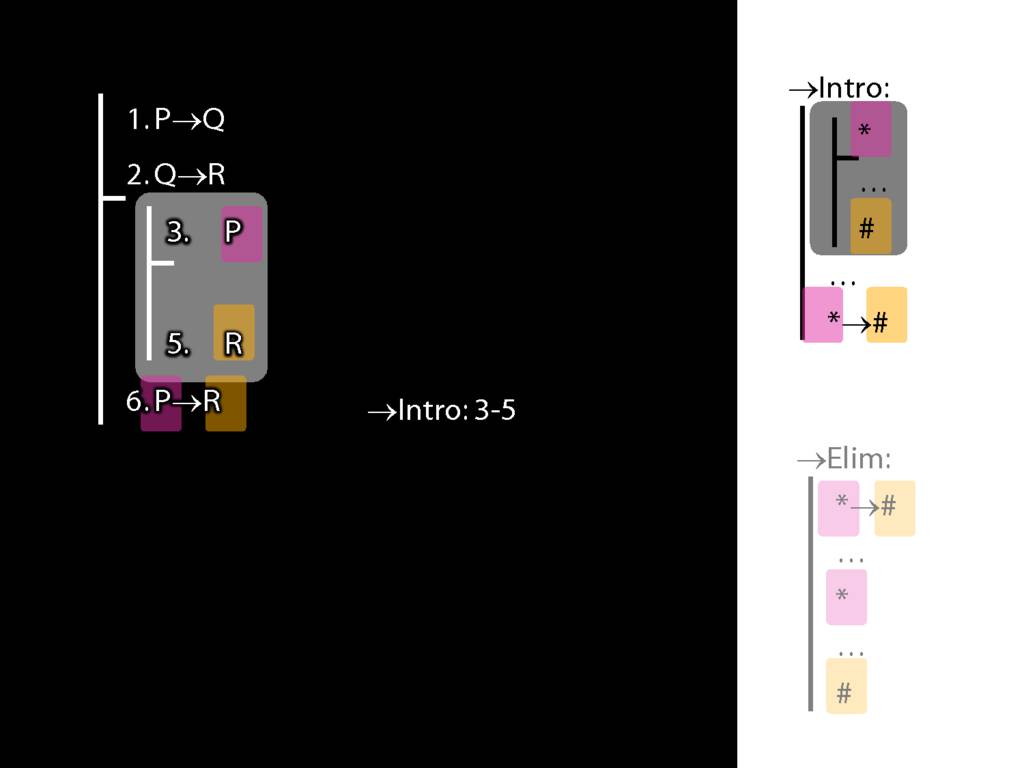
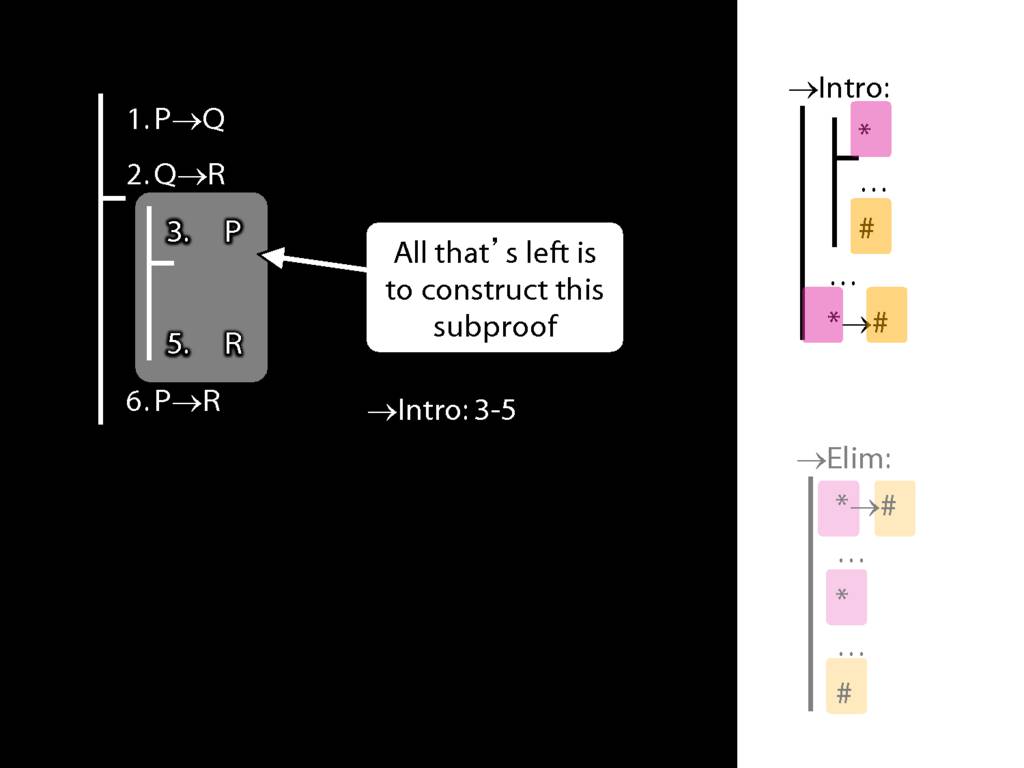
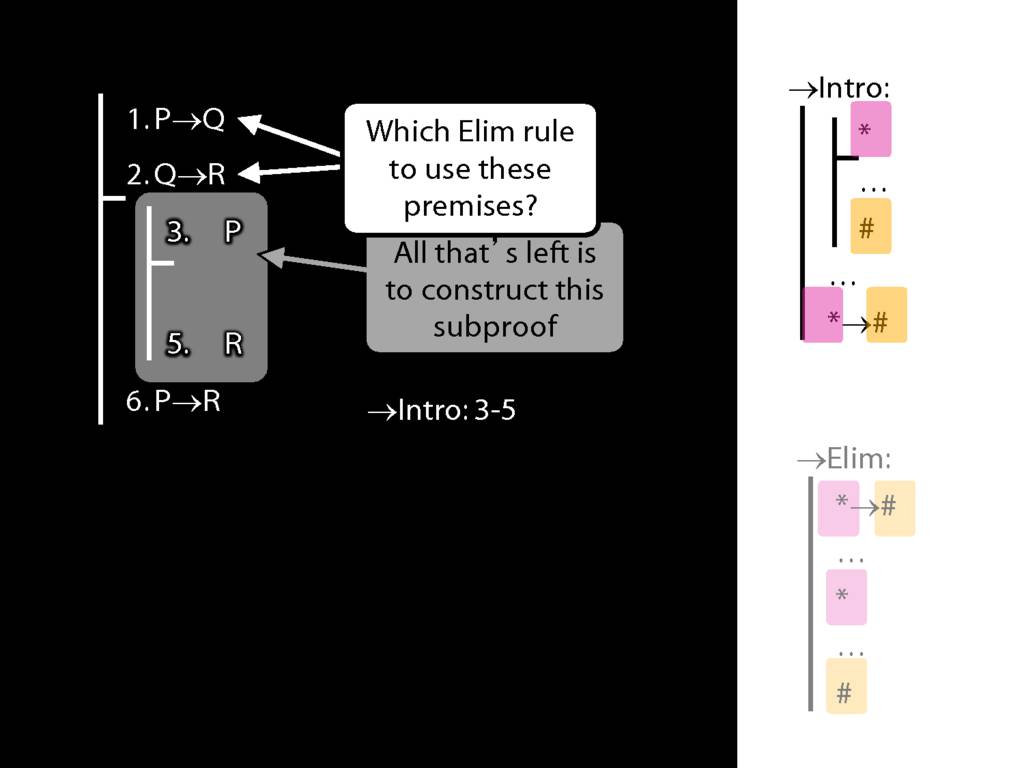



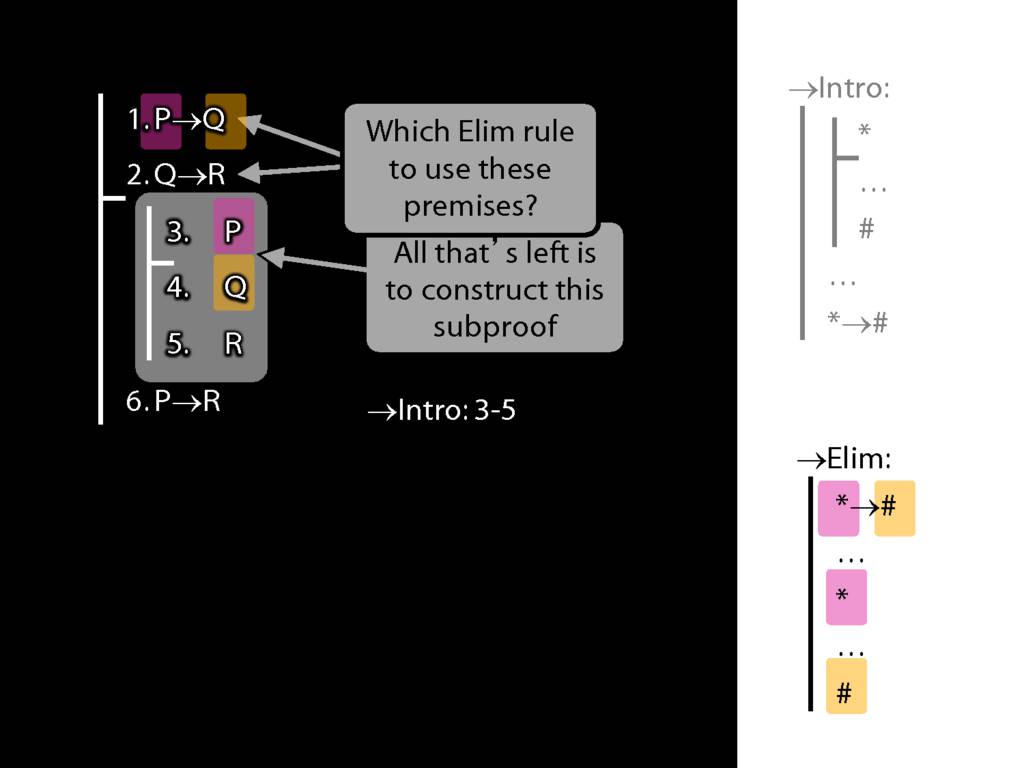
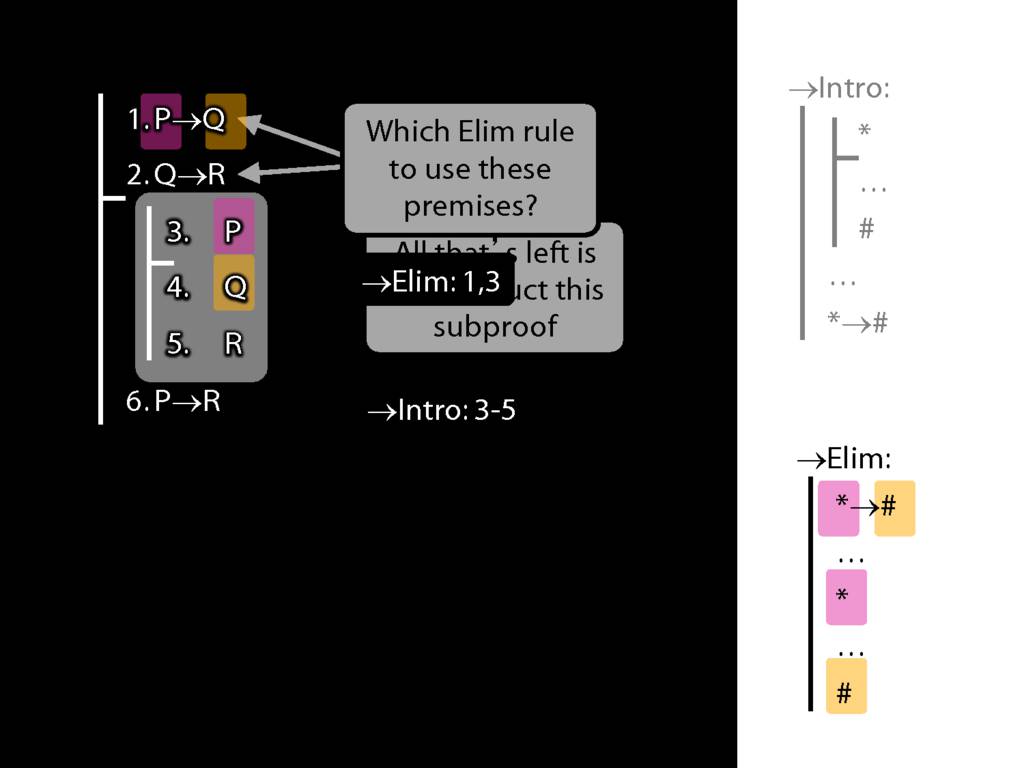
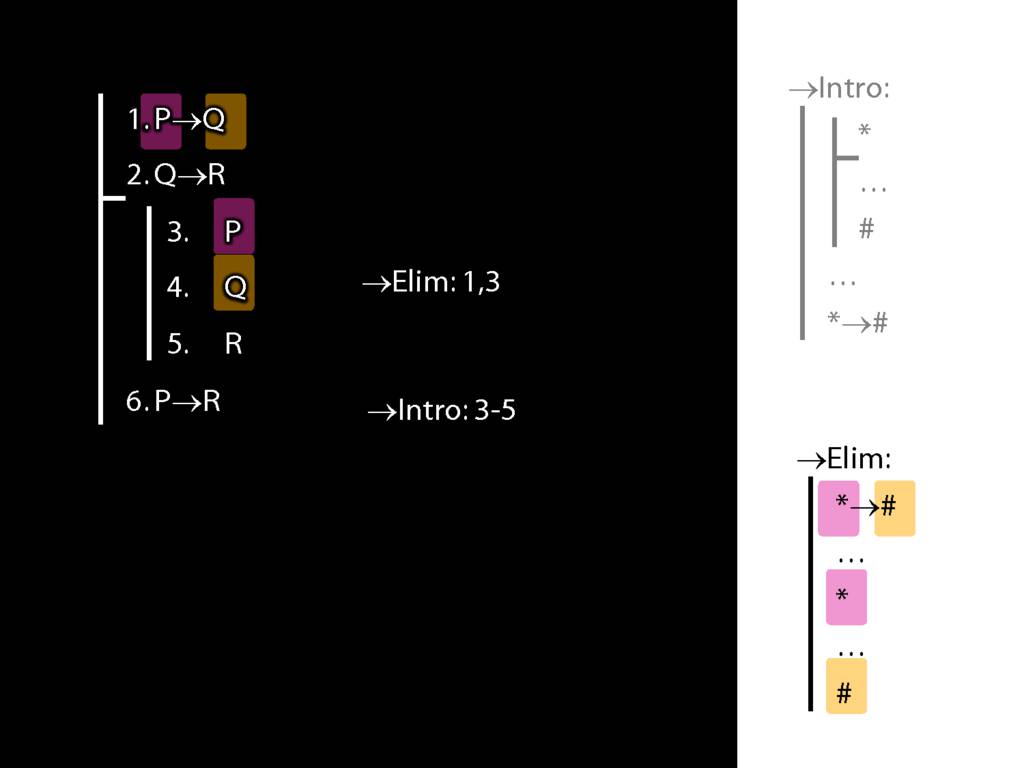
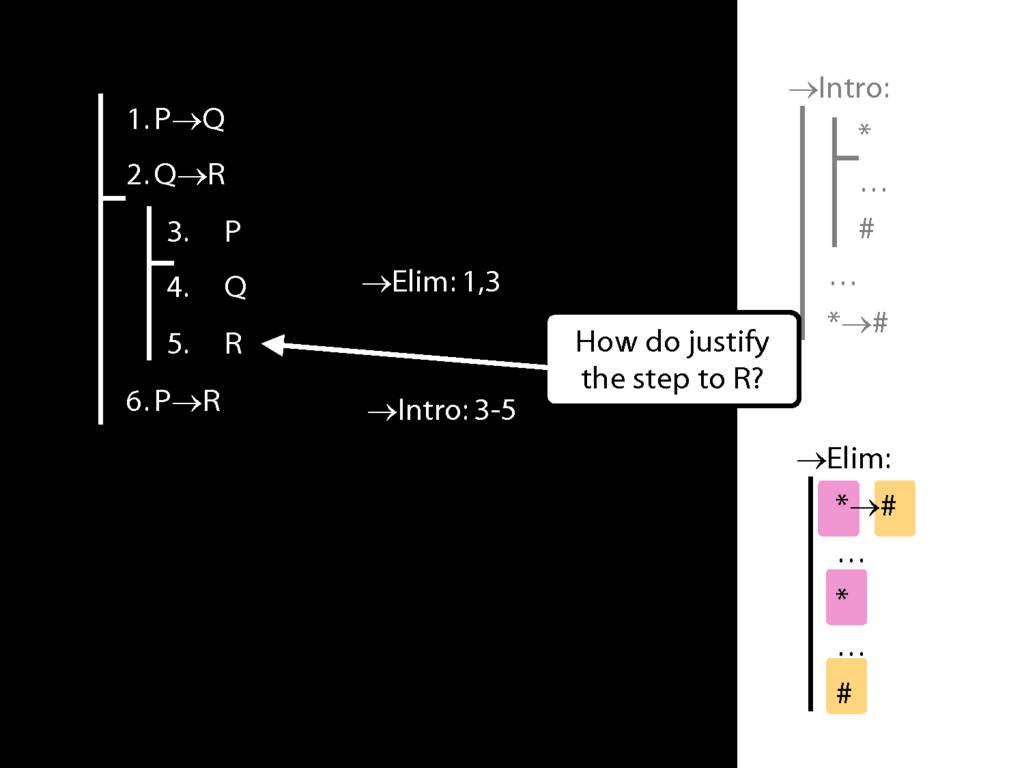
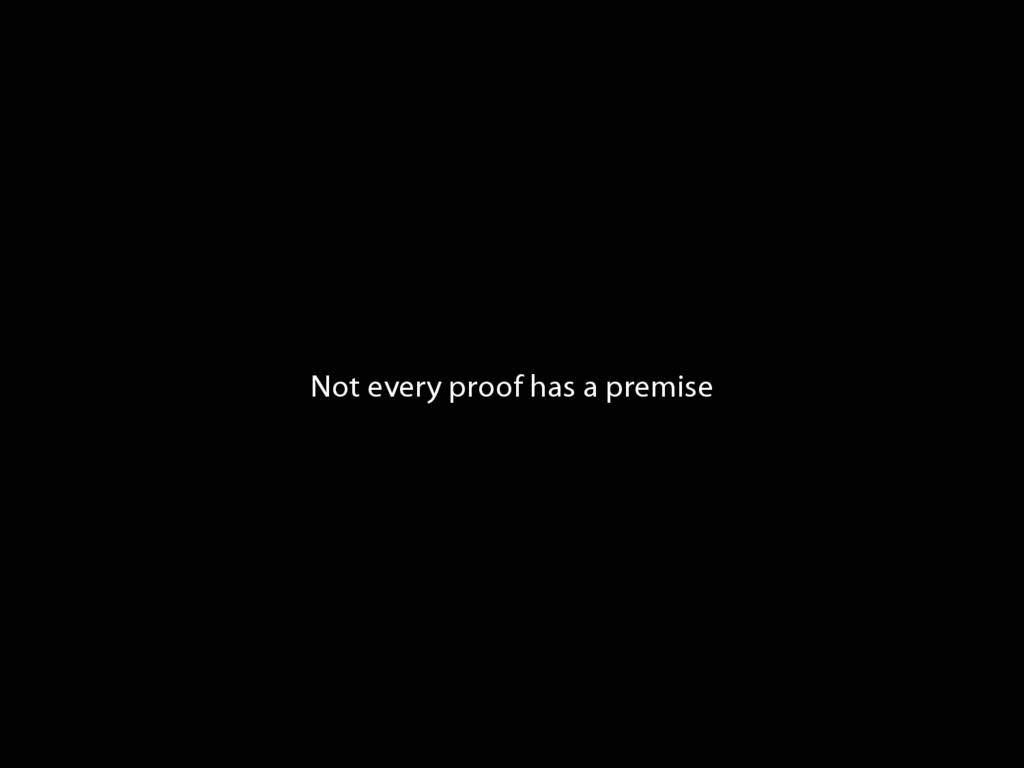
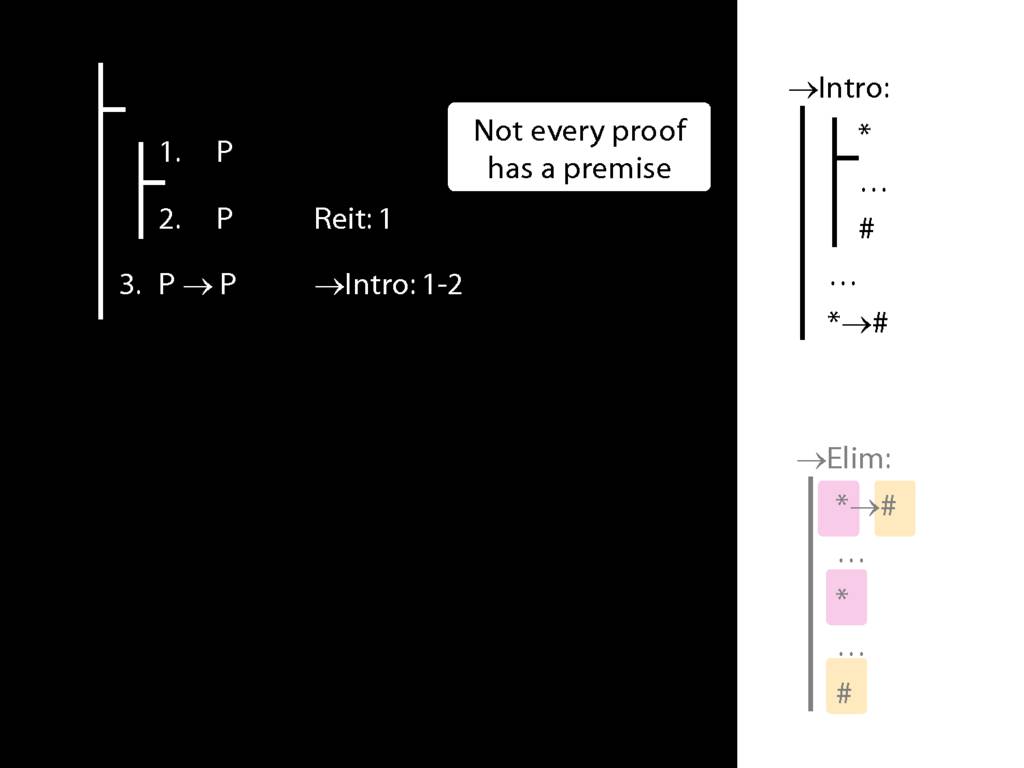
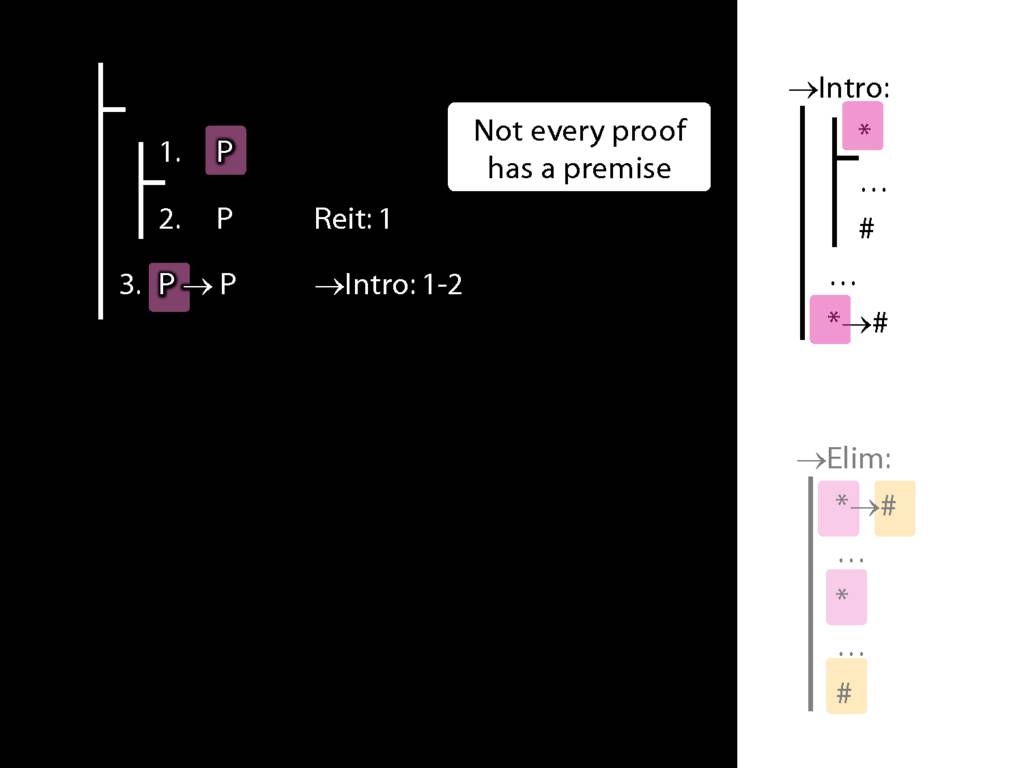
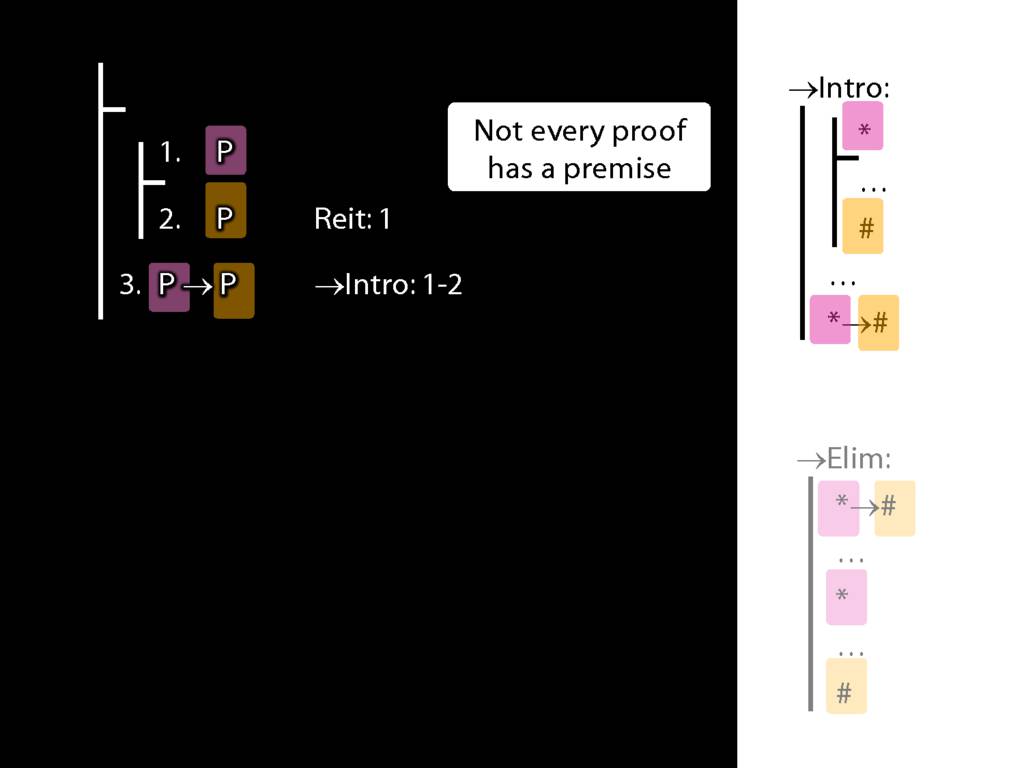
8.20--8.25

Subproofs with zoxiy
\section{Subproofs with zoxiy}
\emph{Reading:} §8.1, §8.2
\section{Subproofs with zoxiy}
https://logic-ex.butterfill.com/ex/proof/from/A arrow B|B arrow C/to/A arrow C
Let’s see how to create proofs with subproofs in this in logic-ex.

Here we’re asked to write a proof that will
require a subproof. (If you’ve been following the
lectures, you’ve already seen this proof.)
We’re going to create a subproof in order to use the rule arrow intro.
If you don’t already know the rule, please take a look at the rule now
so you can follow what we’re doing.
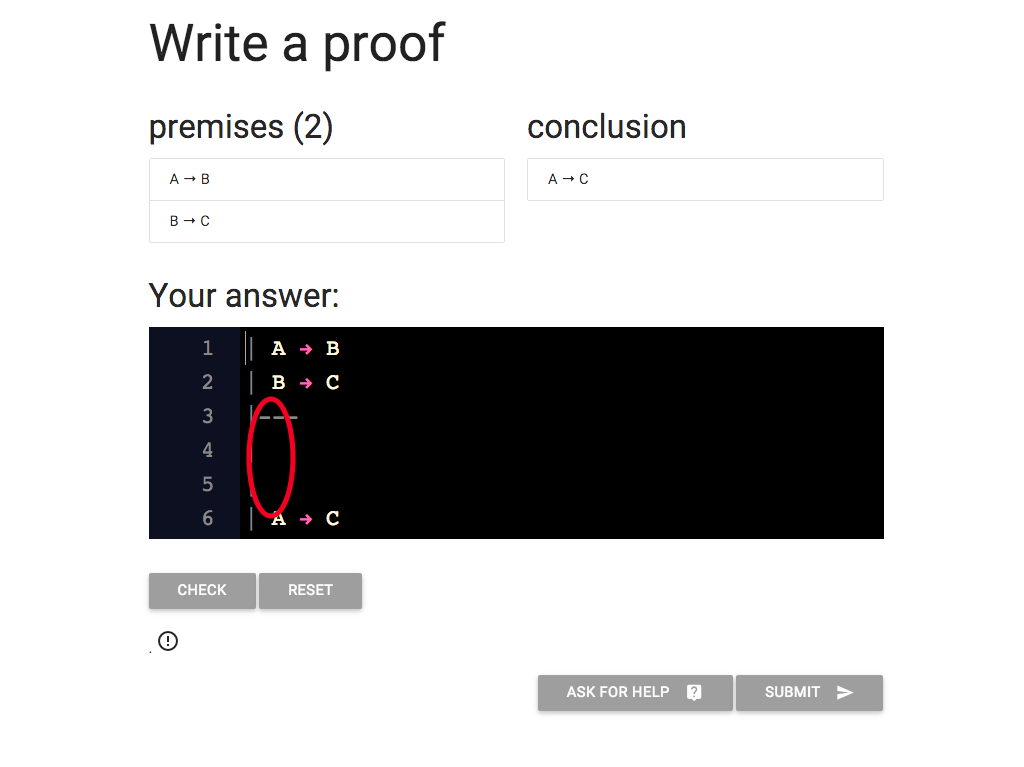
The first thing we need is a bit more space
for our subproof.
Remember that the proof is just a bit of text, and the black box here
is just a text editor.
So to make new lines I just use the enter key.

Here I’ve added new lines to the proof.
Each line starts with a vertical bar, ‘|’.
(If you can’t find the vertical bar on your keyboard you
might have to copy and paste it.)

OK, let’s make a subproof.
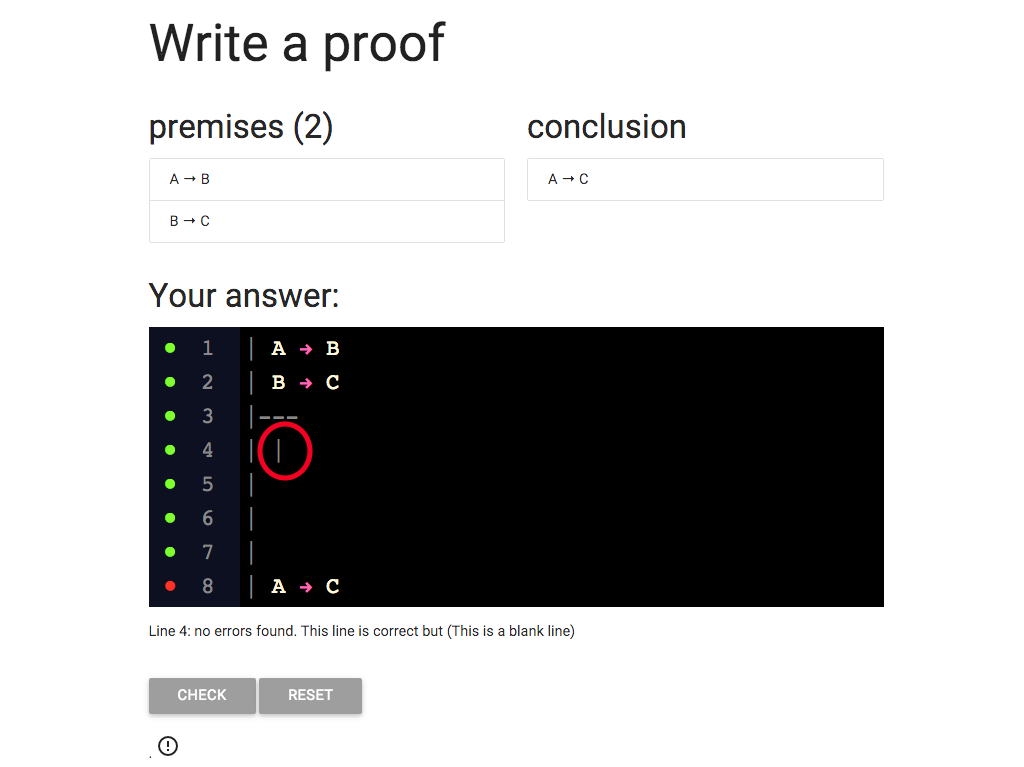
On each line, I need to add a new vertical bar like this one.

So now, as you can see, there are two vertical bars at the start of line 4.
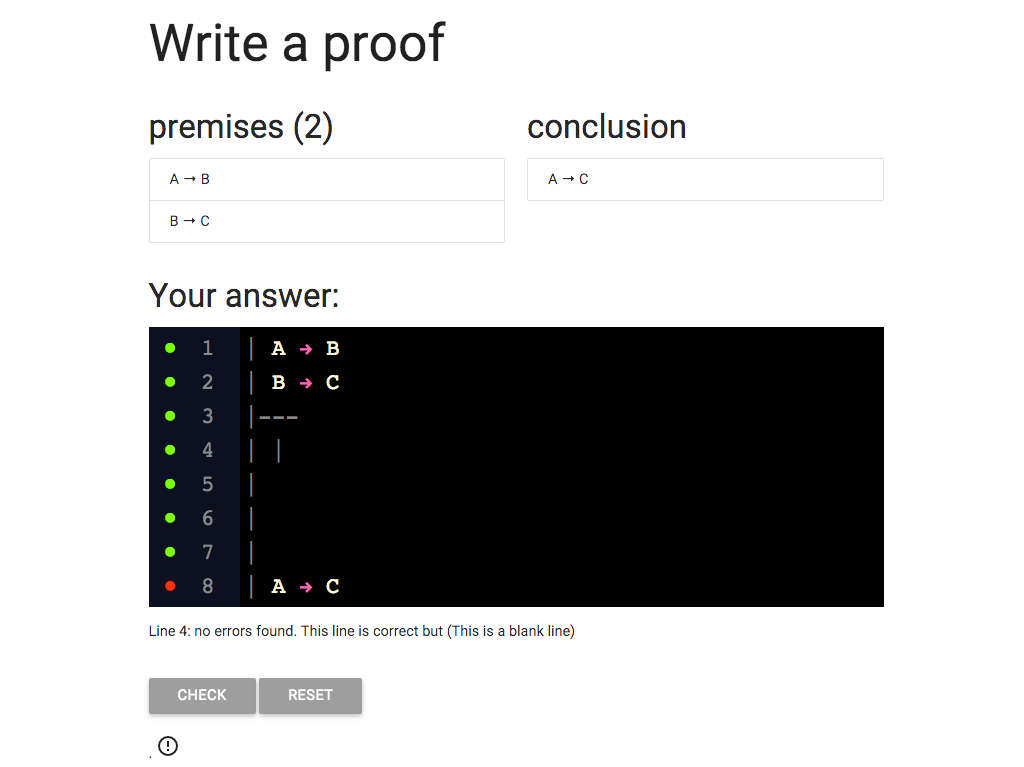
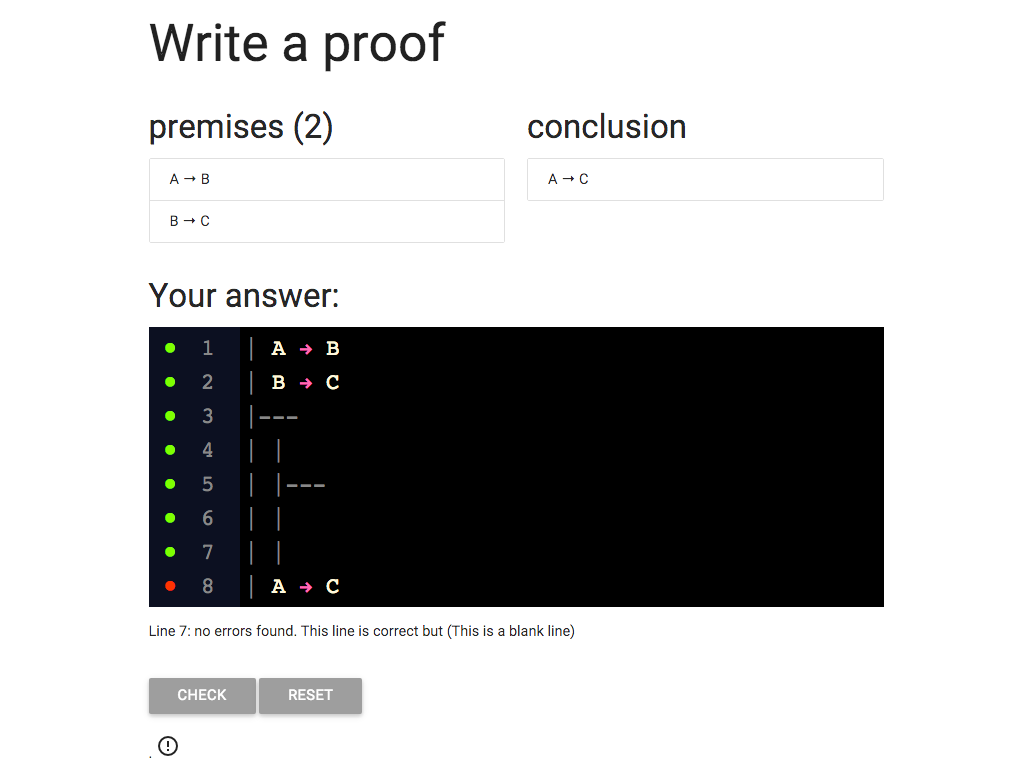
I keep going with adding the extra vertical lines,
and I add the horizontal line as three dashes, ‘-’.
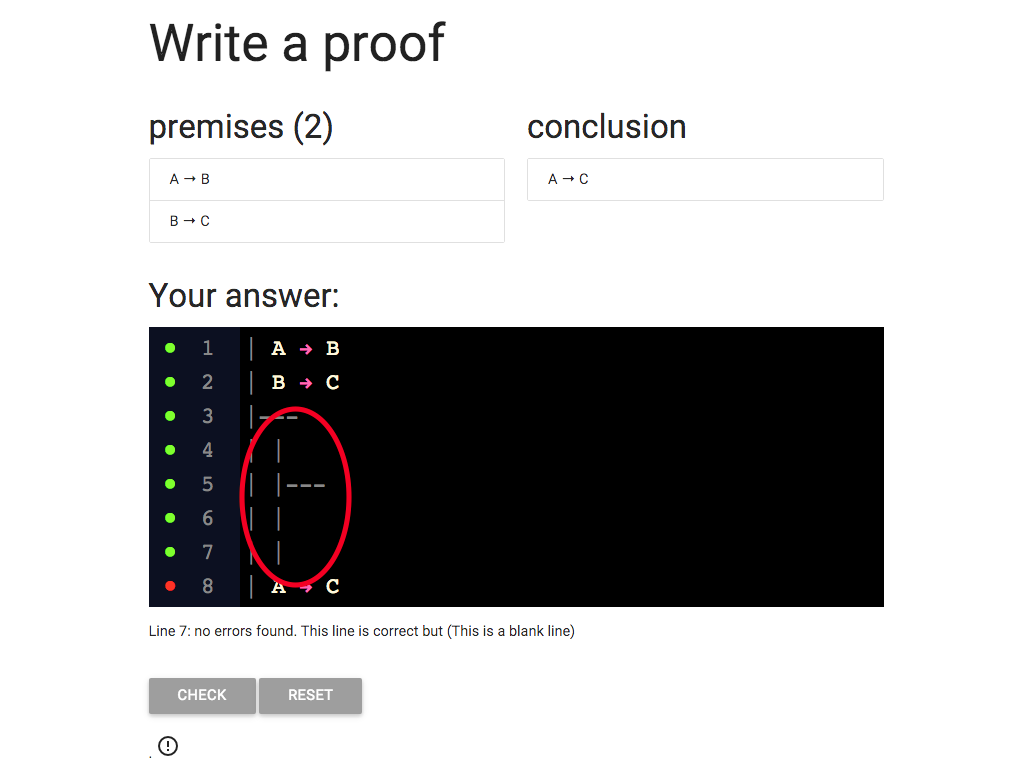
So this is a subproof. It’s just lie the outer proof:
each line that is part of it starts with a vertical bar,
and the premise is seperated from the rest with a horizontal
line comprising three dashses.
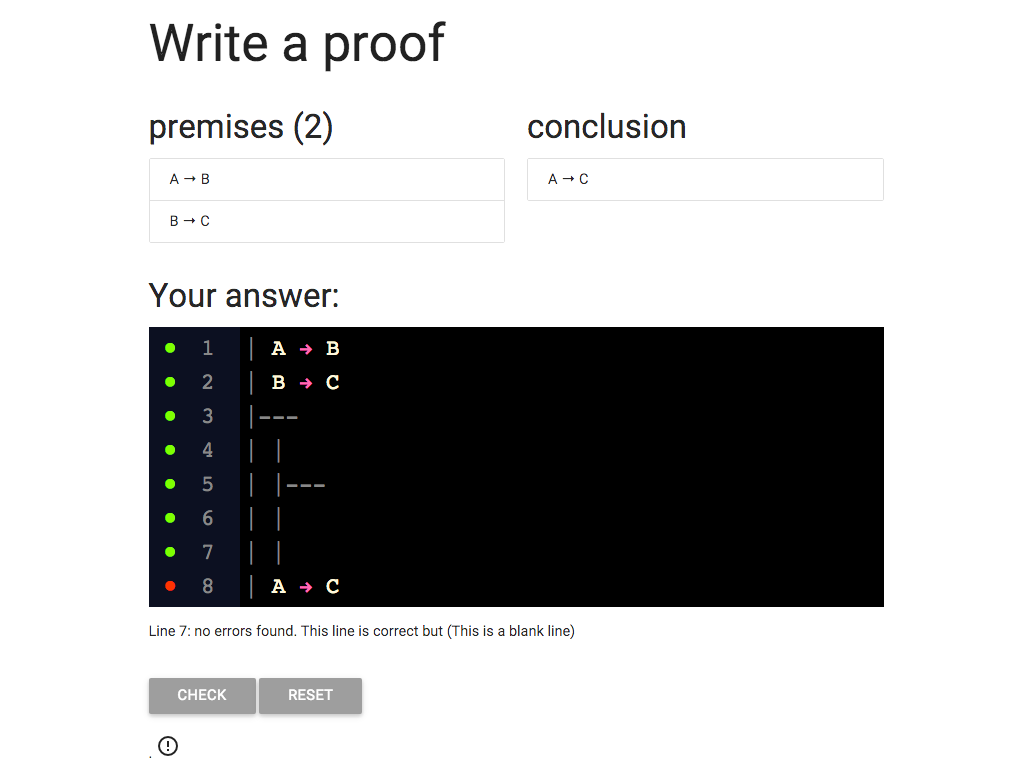
What next?
When I’m doing a proof I like to put the premise
and conclusion of the subproof in first.
After all, we already know what these are from the rule
of proof we are using, whereas we will have
to think about what goes in the middle.
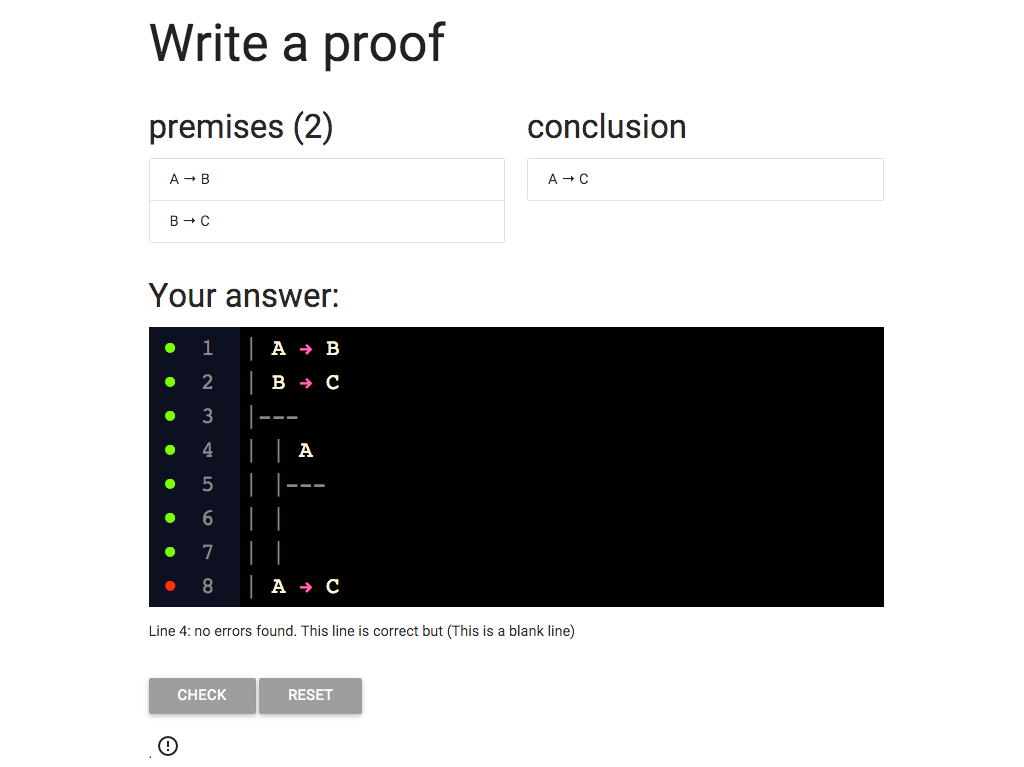
The premise of the subproof is A.
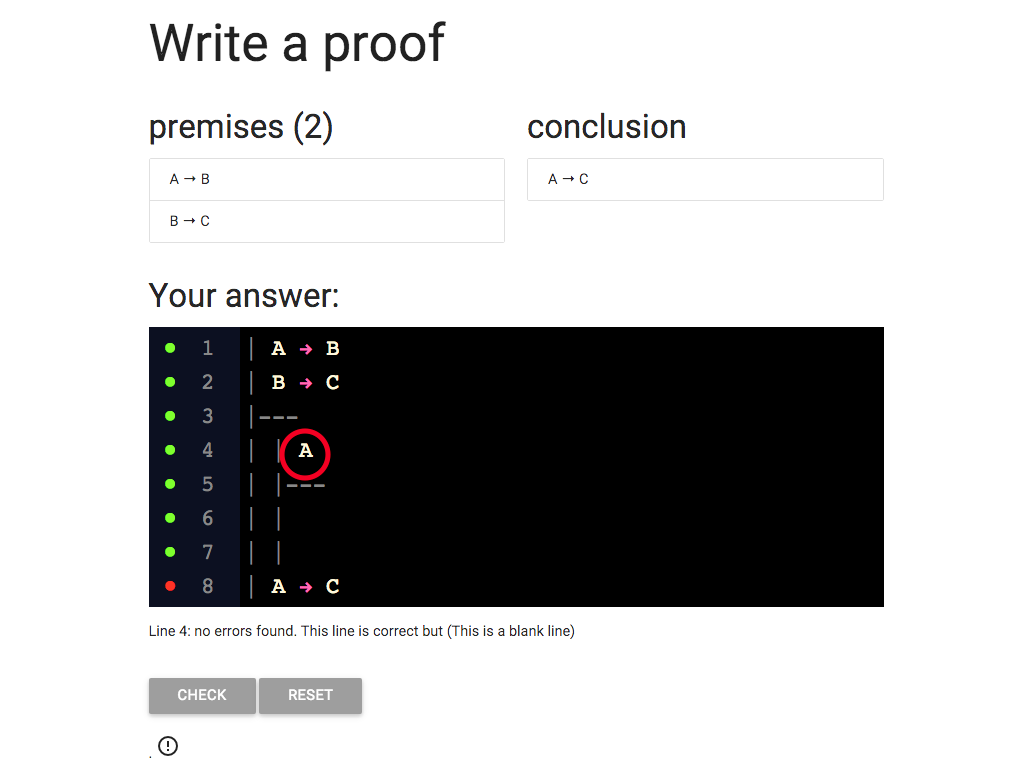
But why is it A?
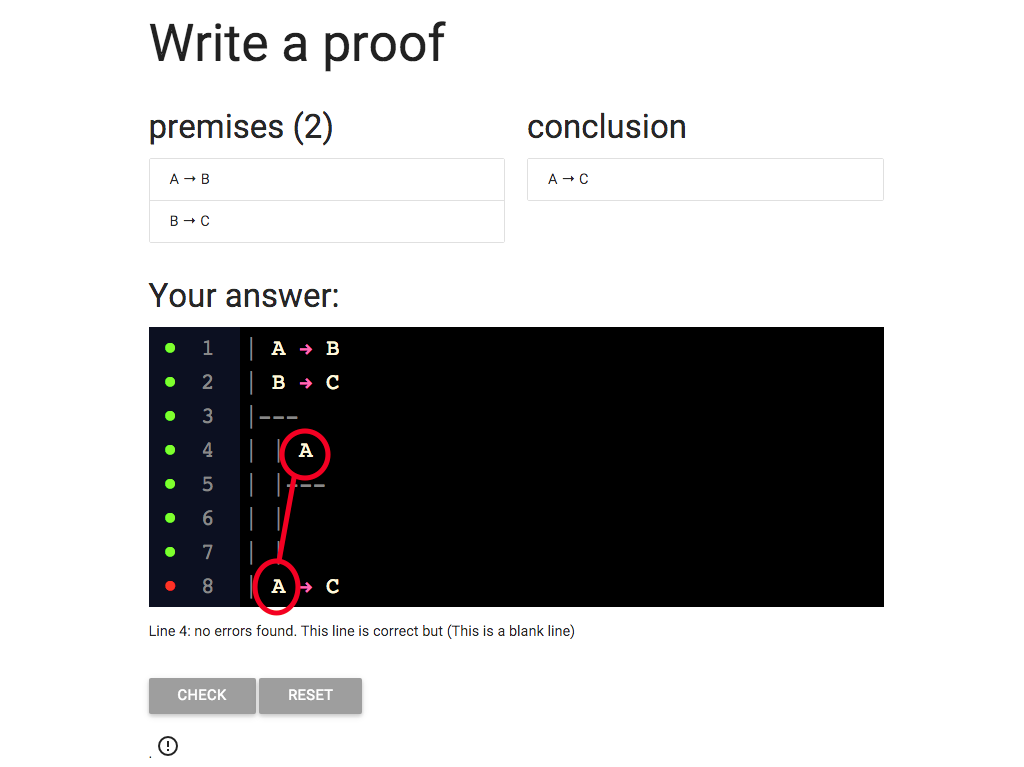
Well A is the thing on the left of the condition.
It’s the *antecedent* of the conditional.
And if you look at the rule for arrow intro, it tells you
that the subproof has to start with the antecdent of the
conditional you want to introduce.
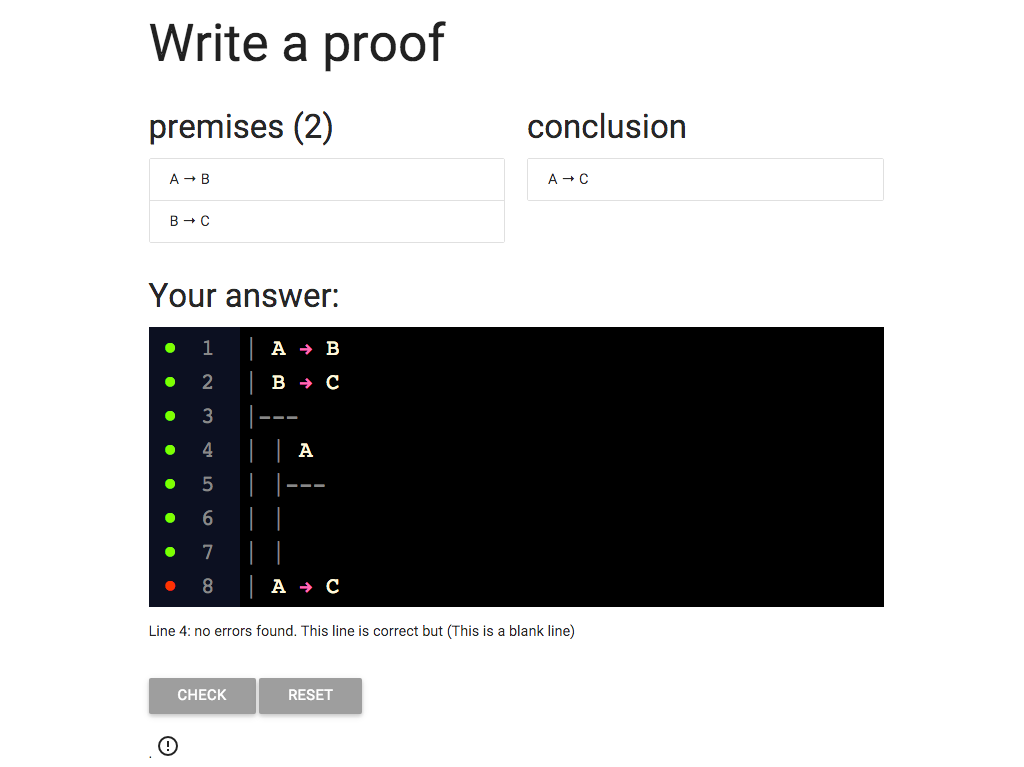
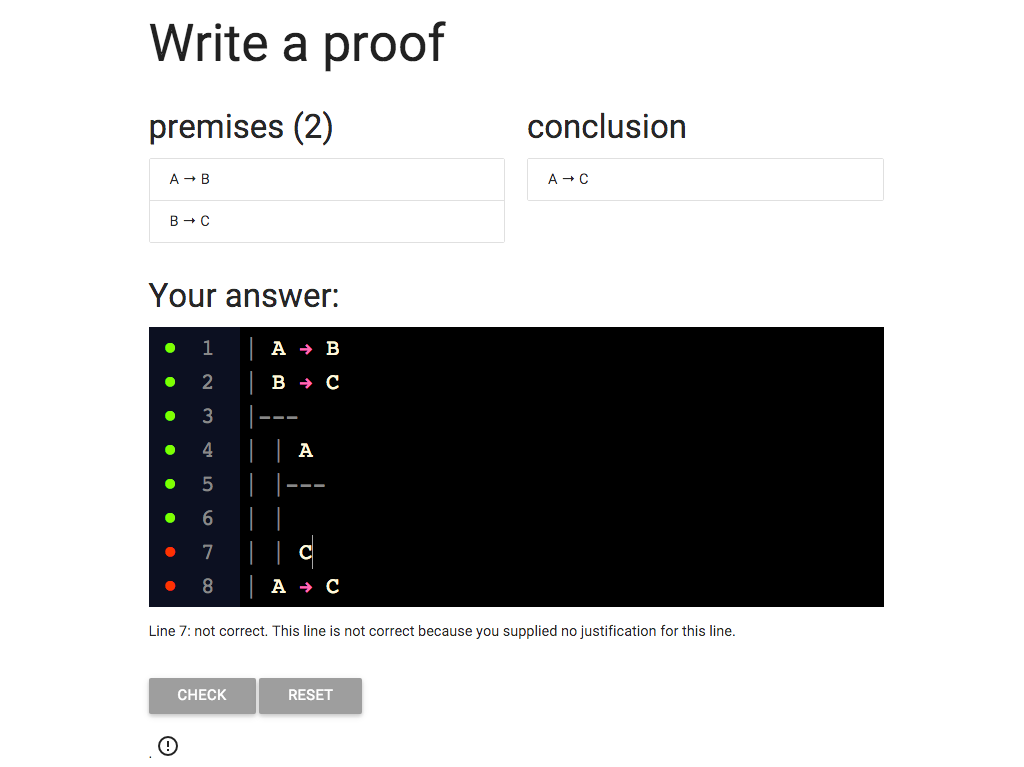
Now for the conclusion of the subproof.
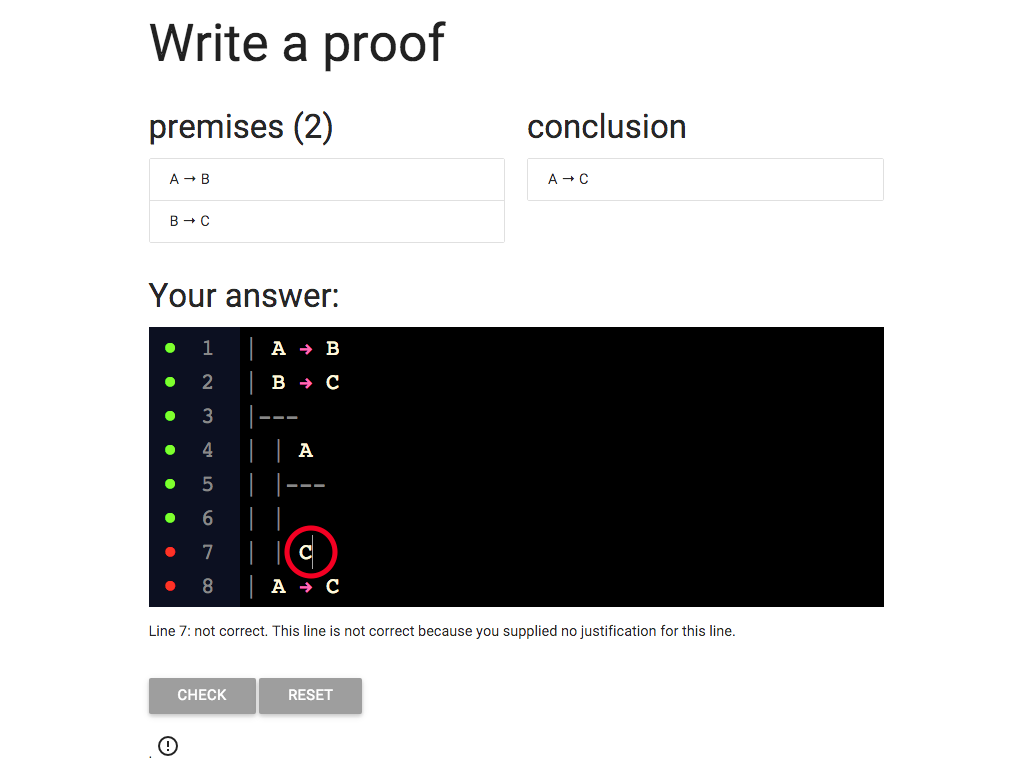
Here I’ve written C.
But why have I written C?
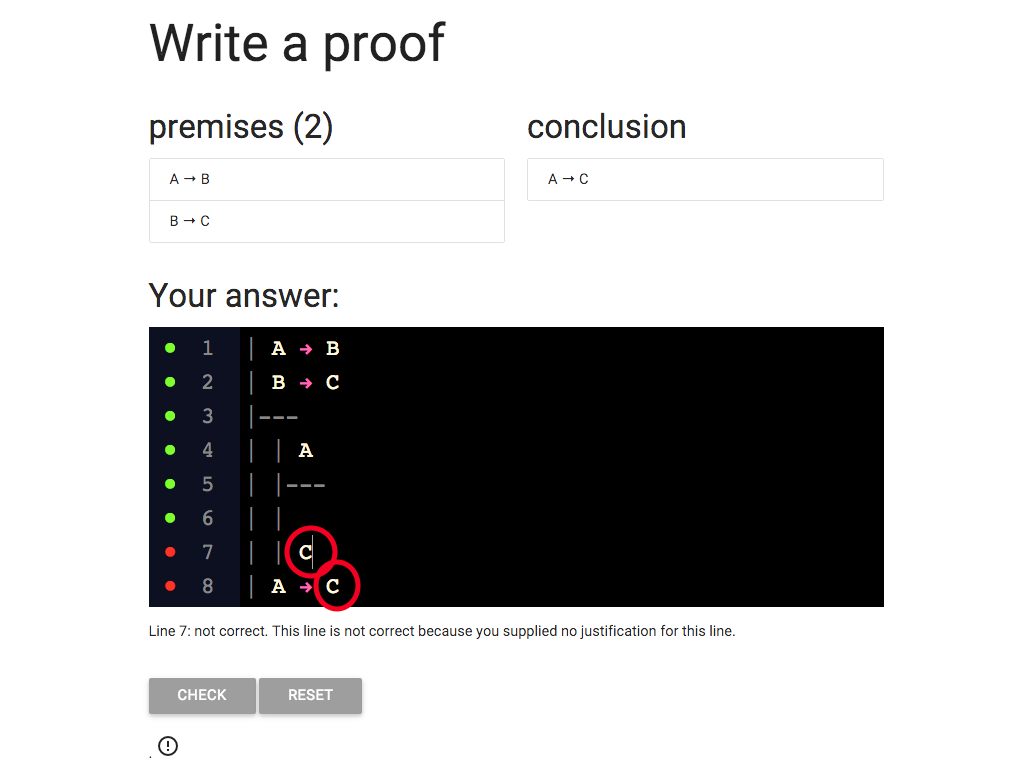
Because C is the thing on the right of the conditional
we are trying to introduce.
It is the *antecdent* of 'A → C '
And the rule for arrow intro tells us that we need a subproof
whose conclusion is the antecdent of the conditional we are
trying to introduce.
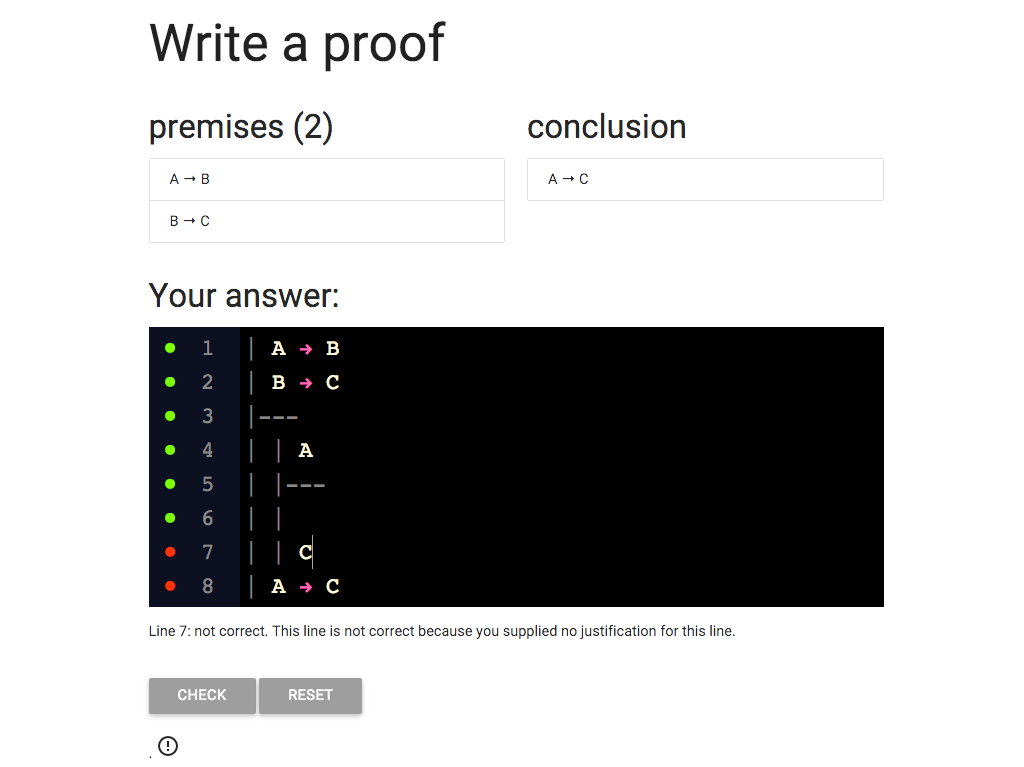
So there’s no choice about what to put for the premise and
conclusion of the subproof, we just have to do what the rule tells
us to do.
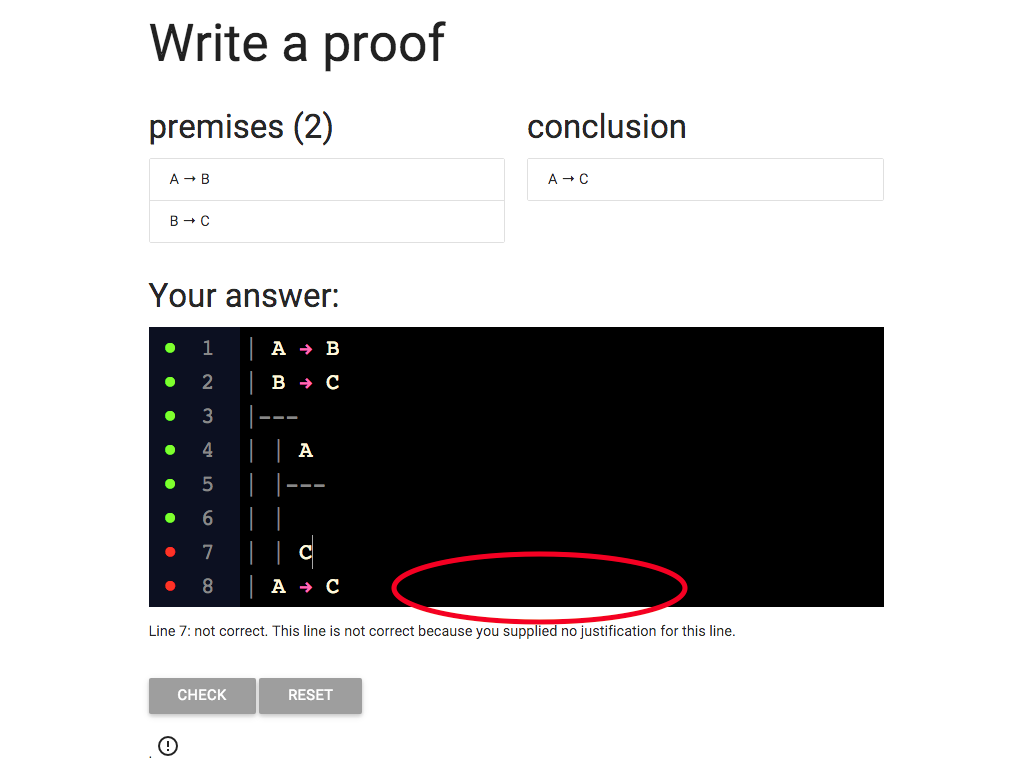
We’re not done with the rule arrow intro yet.
To use the rule it’s not enough to have a subproof: we also neeed
to provide the justification.
What goes here?
As always the rule tells us exactly what to write.

So I’ve filled in the justification.
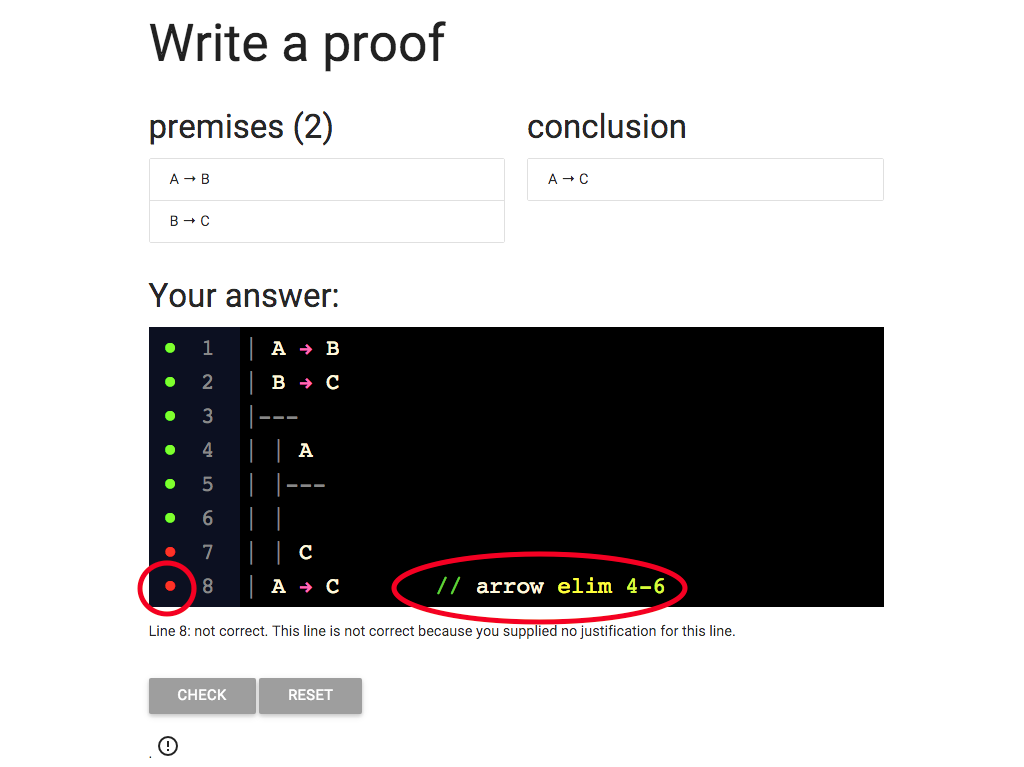
But wait a minute: the red dot means the line is not correct.
Why is it wrong?
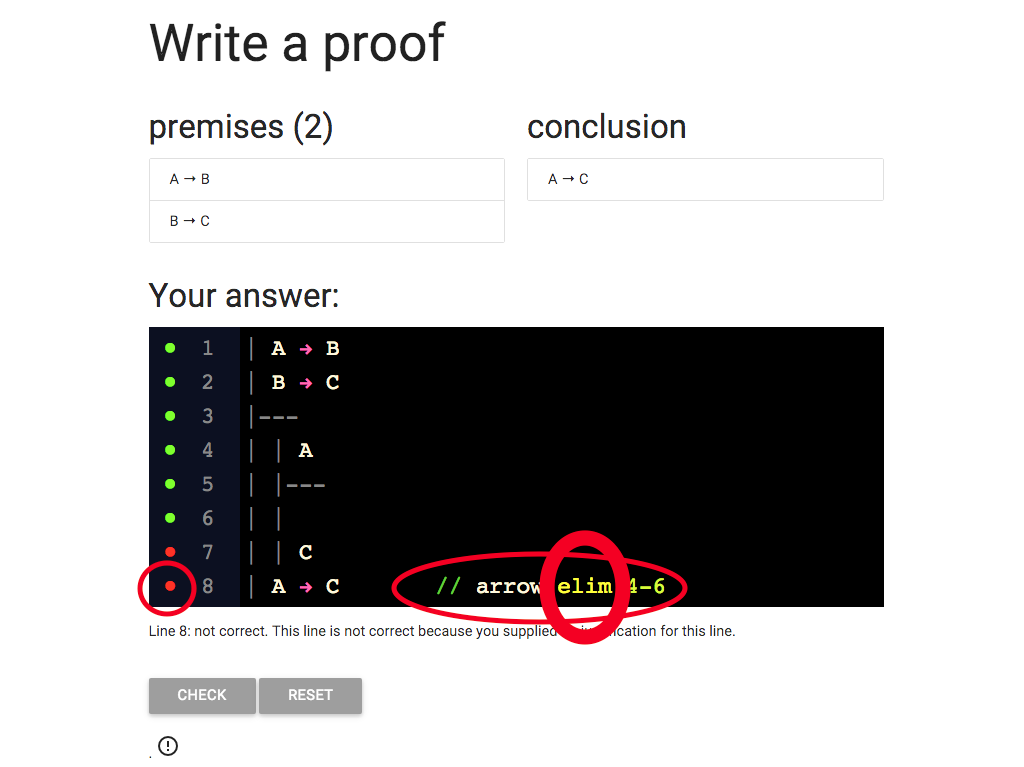
Oops, I wrote arrow elim when I should have written arrow intro.
You might think this doesn’t really matter; I got the ‘arrow’ part write,
I just confused intro and elim, which I do all the time (sorry).
But if you’re a machine, or a logican, it matters.
The software doesn’t do marks for effort, it just cares where what
you’ve written is a proof or not. And if you’ve got a red dot,
you havent’t written a proof.
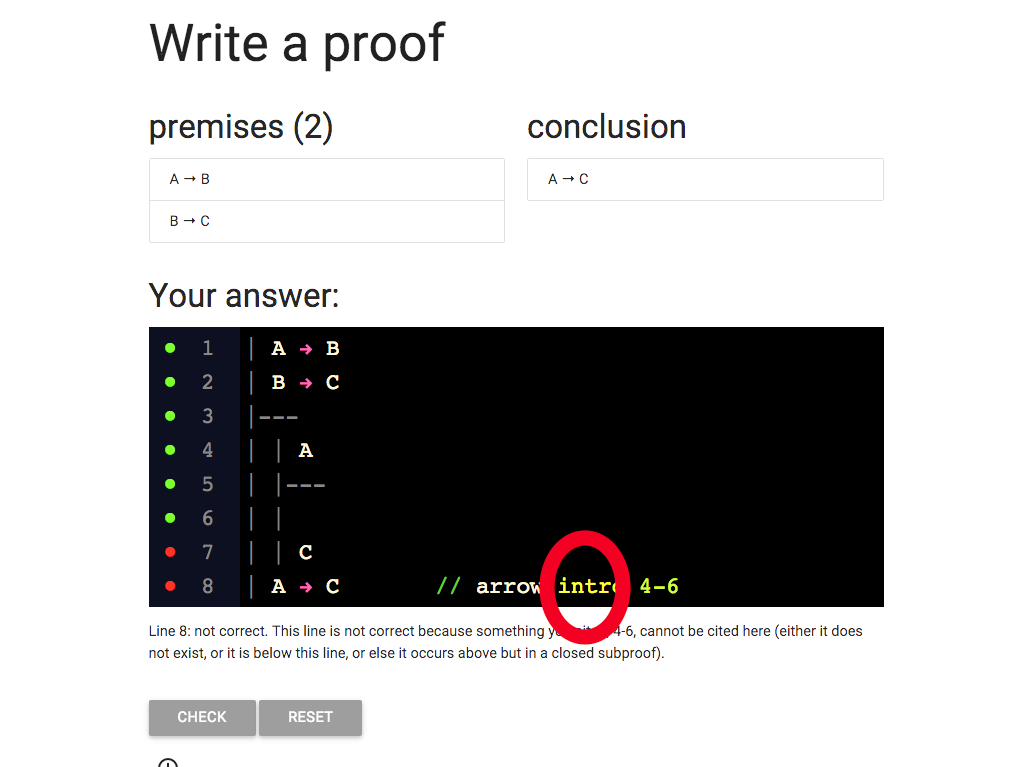
So I’ve changed elim to intro.
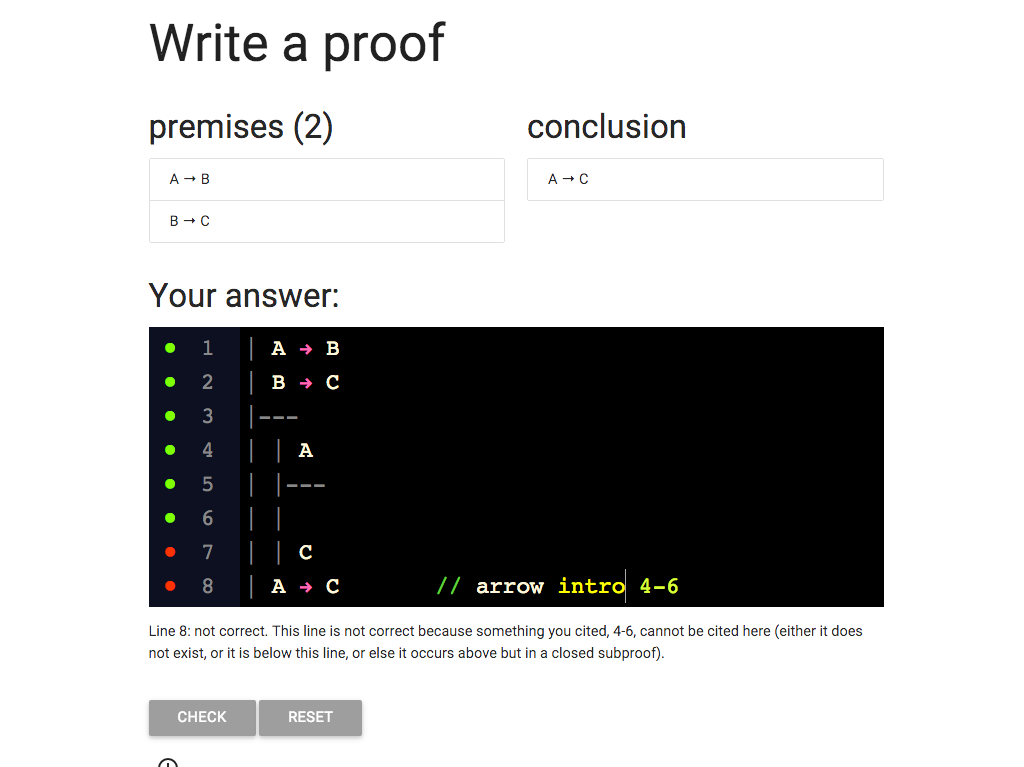
Now I’m citing the right rule ...
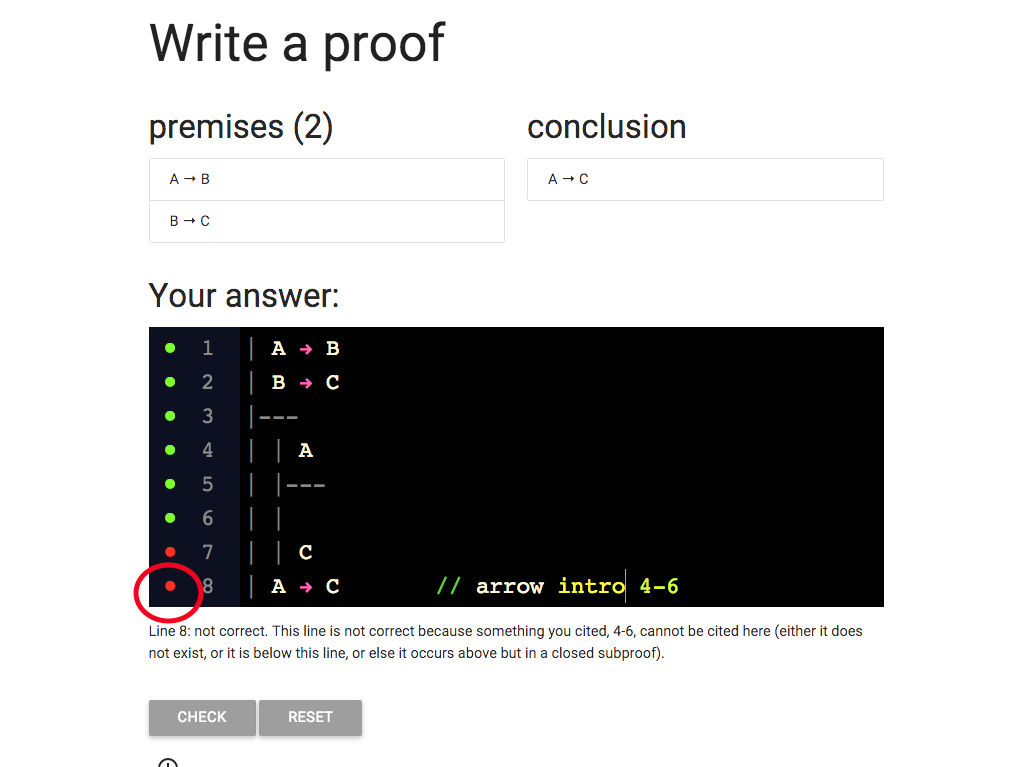
... but I still have that red dot.
What is wrong?
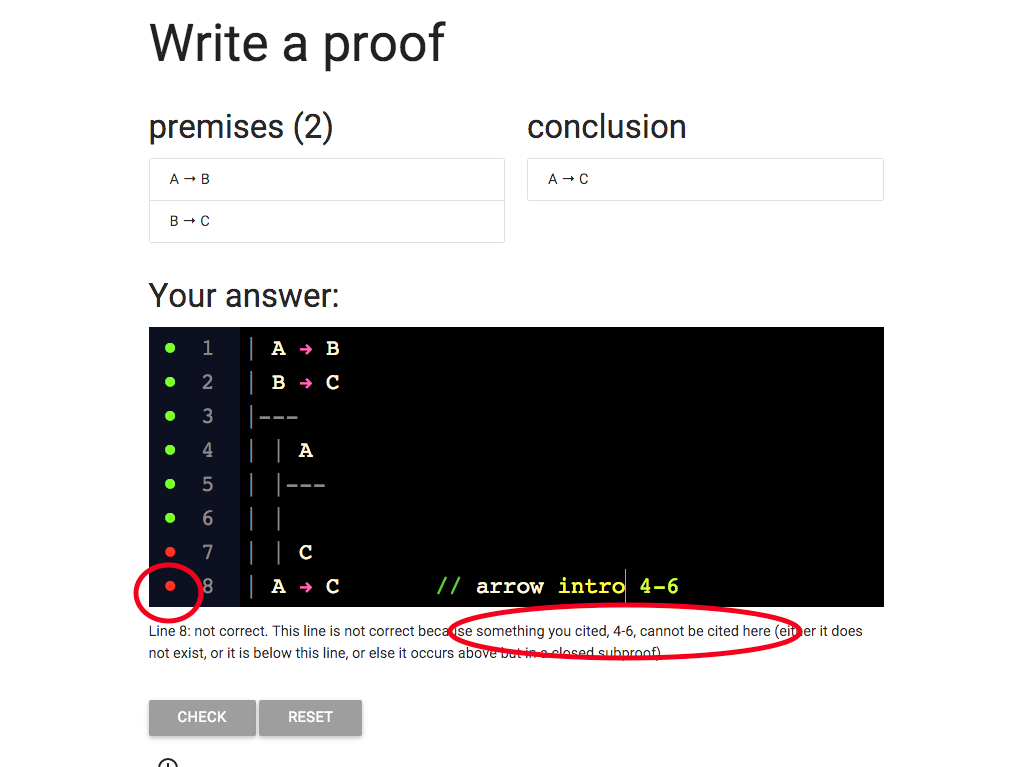
Take a look at the error message.
It tells me that lines 4-6 can’t be cited here.
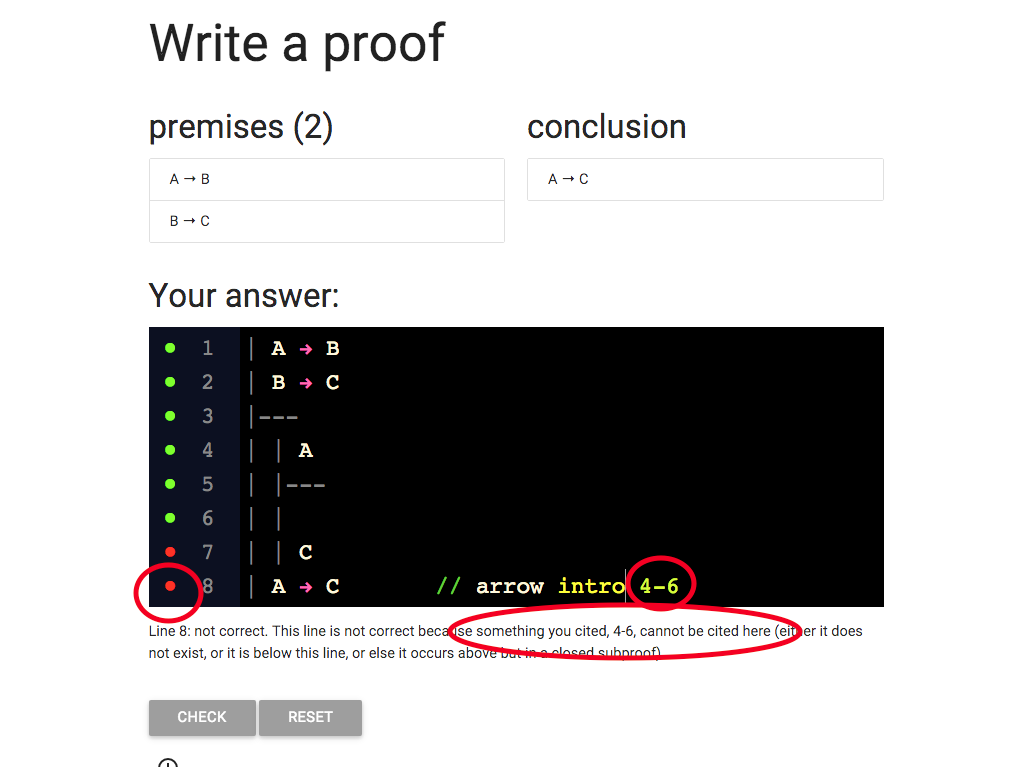
And I am citing lines 4-6, so the message is relevant.
But why can’t I cite them?
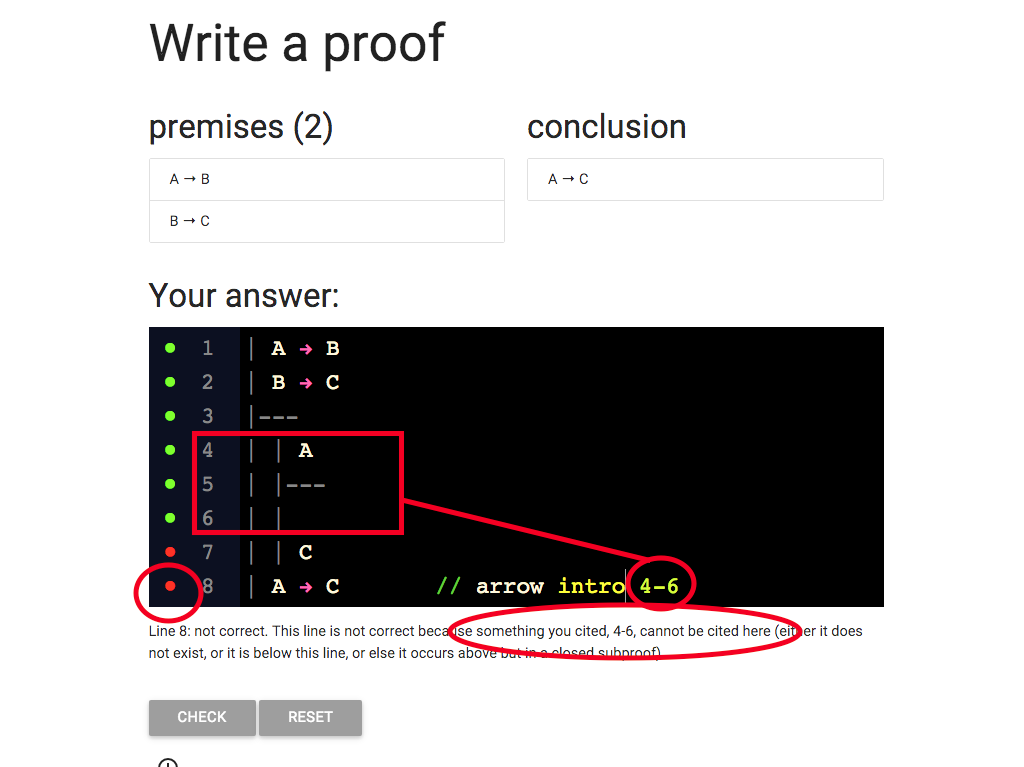
Wait a minute, lines 4-6 are only part of the subproof.
This is a mistake.
I wanted to cite the whole subproof.
And in fact the rules of proof only allow me to cite whole
subproofs.
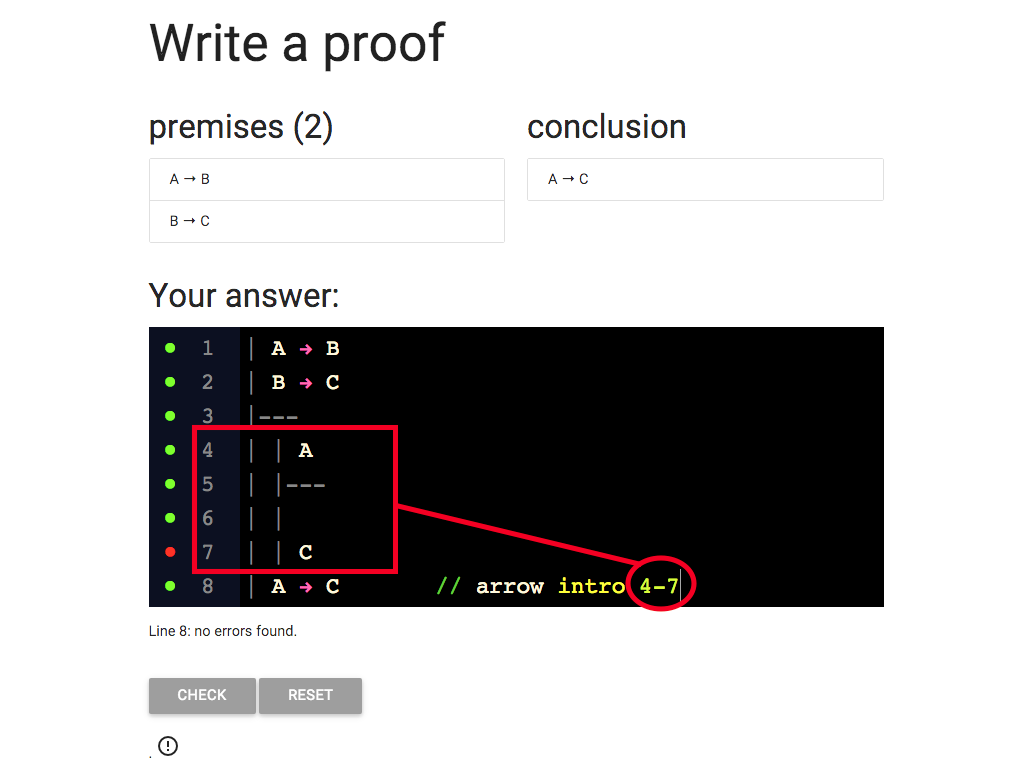
Let’s update so that the justification cites the whole subproof.
That is, it cites lines 4-7

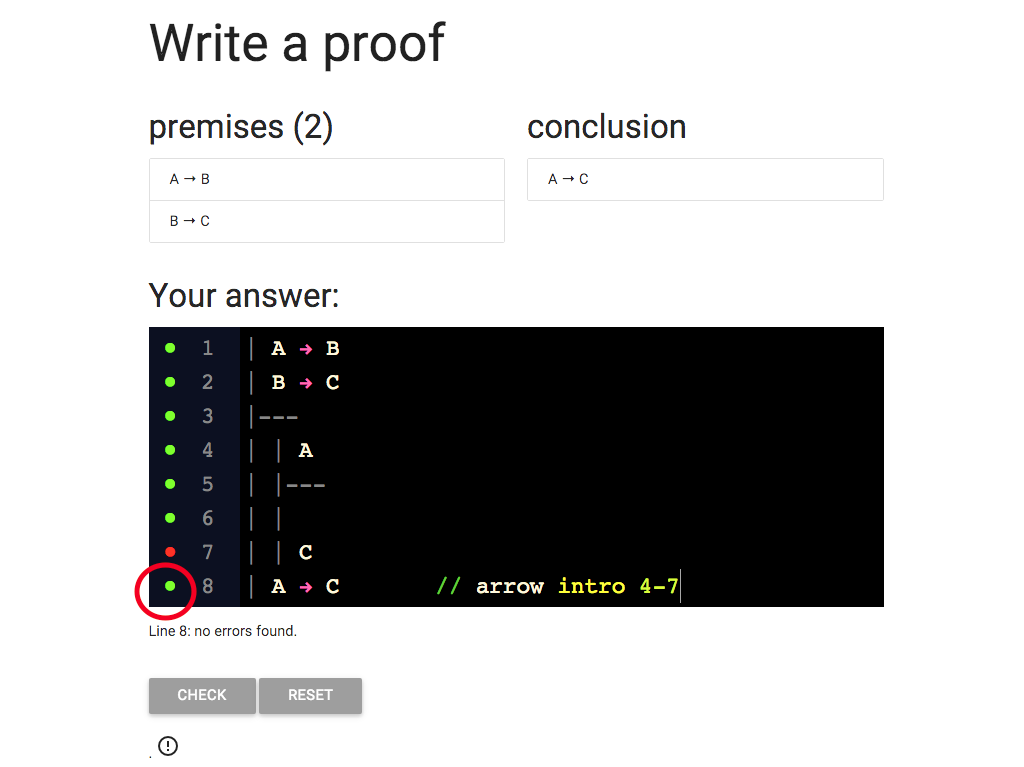
Now I’ve got the grren dot, at last.

Am I done?
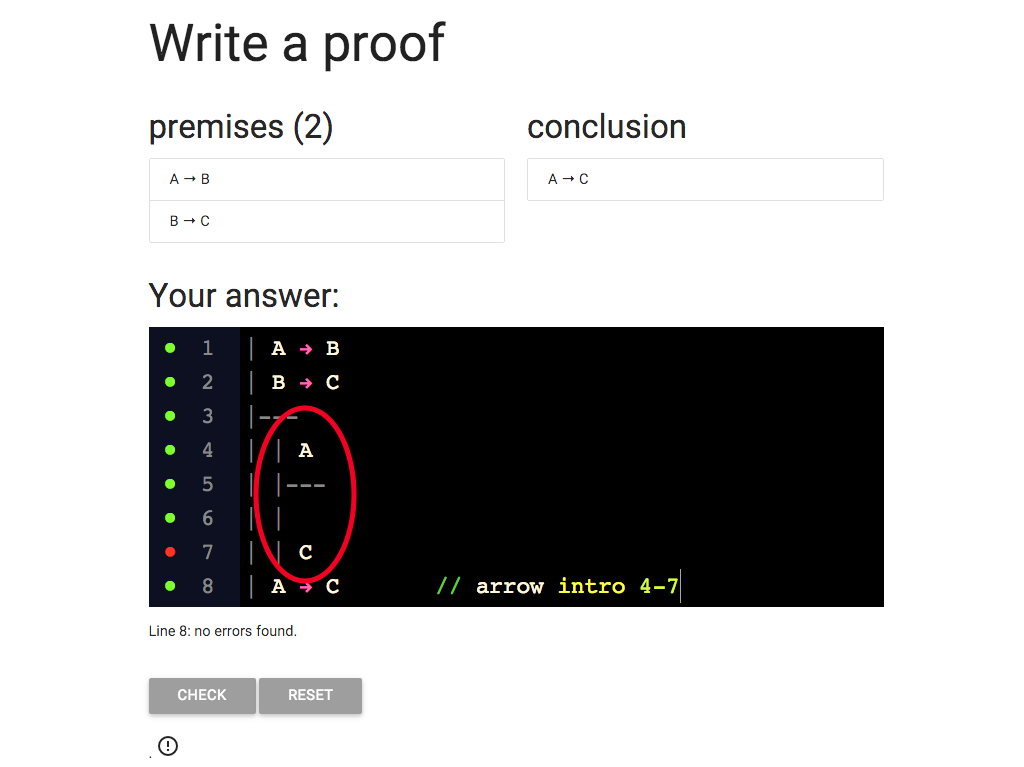
Not quite, I still need to complete the subproof.
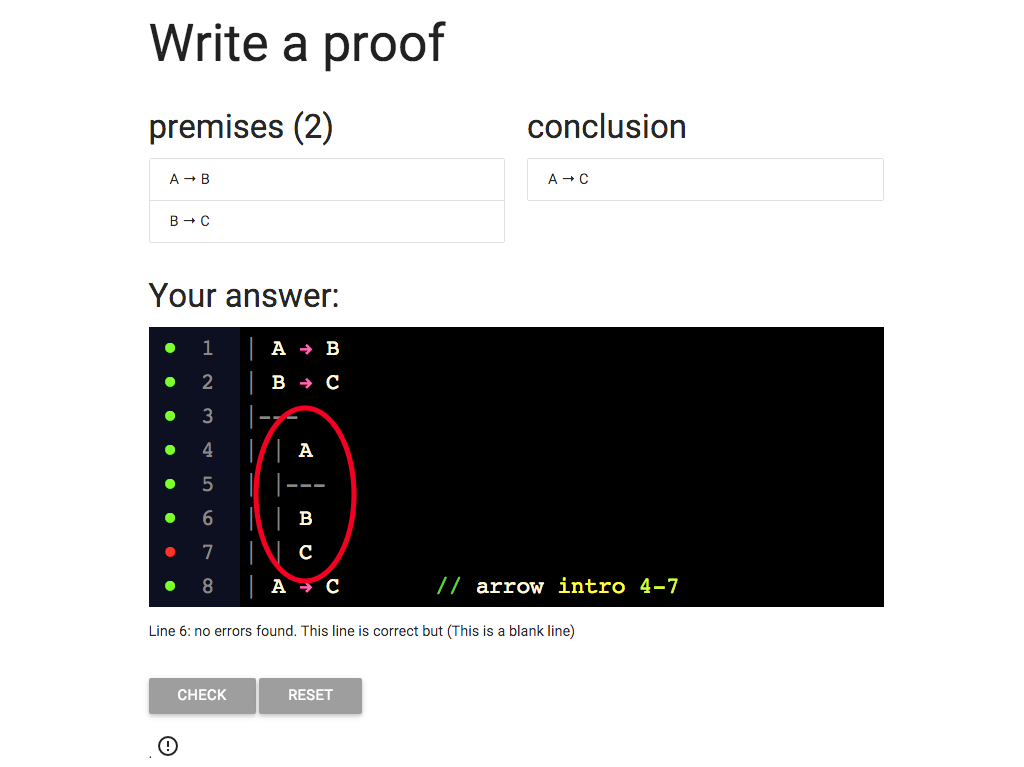
I know that I can get B from
A at line 4 and the conditional ‘A → B’ at line 1.
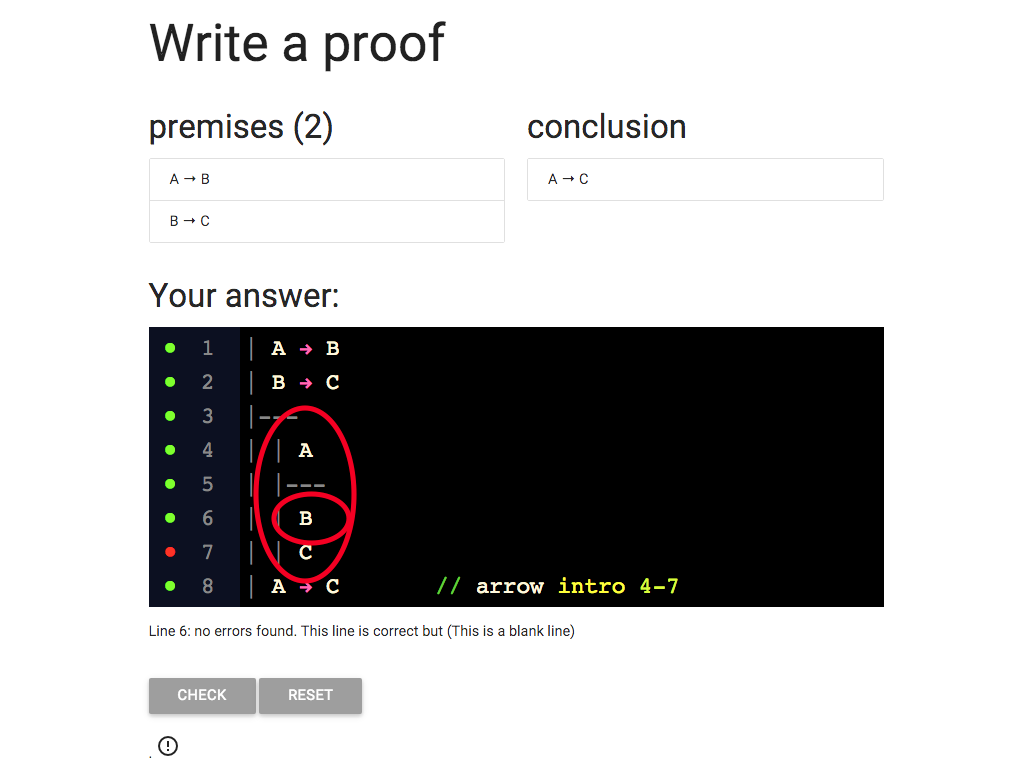
So I’ve added B at line 6.
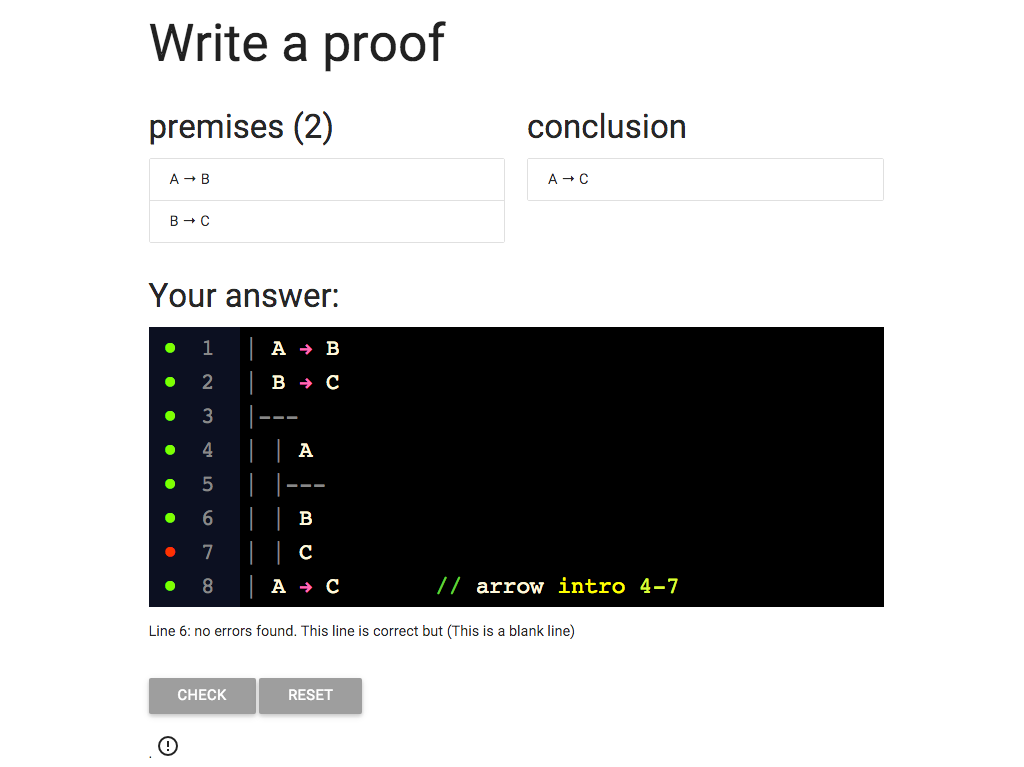

Now I need to give some justification for this line.
What will the justification be?
I’m eliminating the arrow from a conditional sentence, A → B, from line 1, and I have the
antecedent of the conditional at line 4.
So what should I write for the justification?

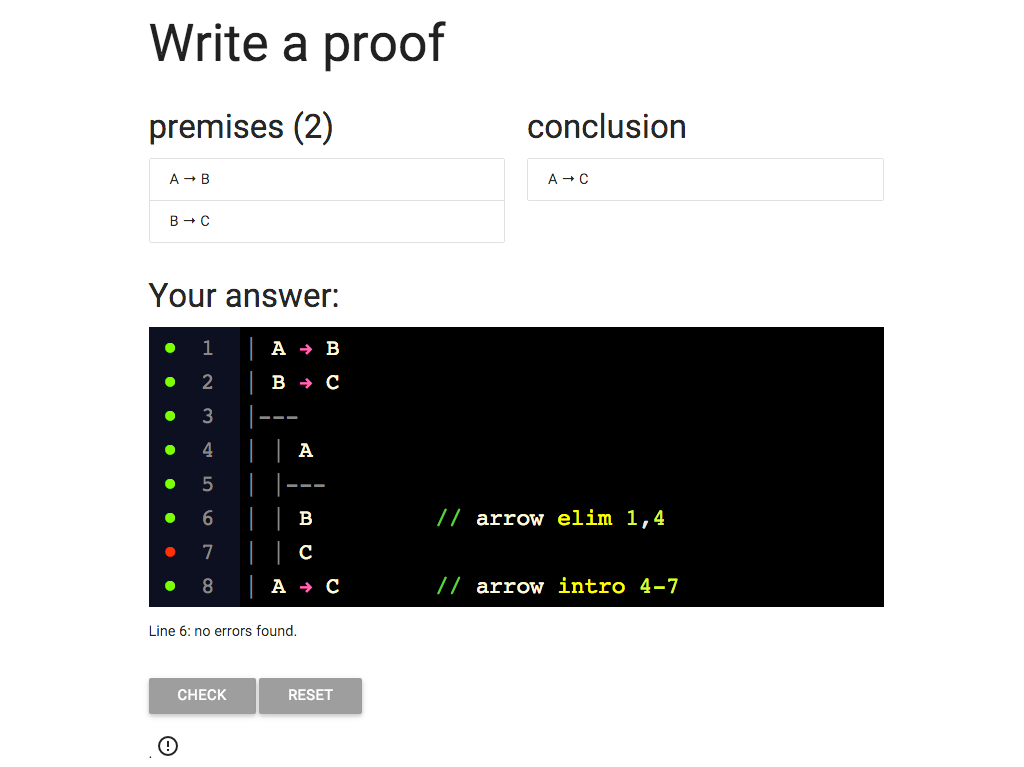
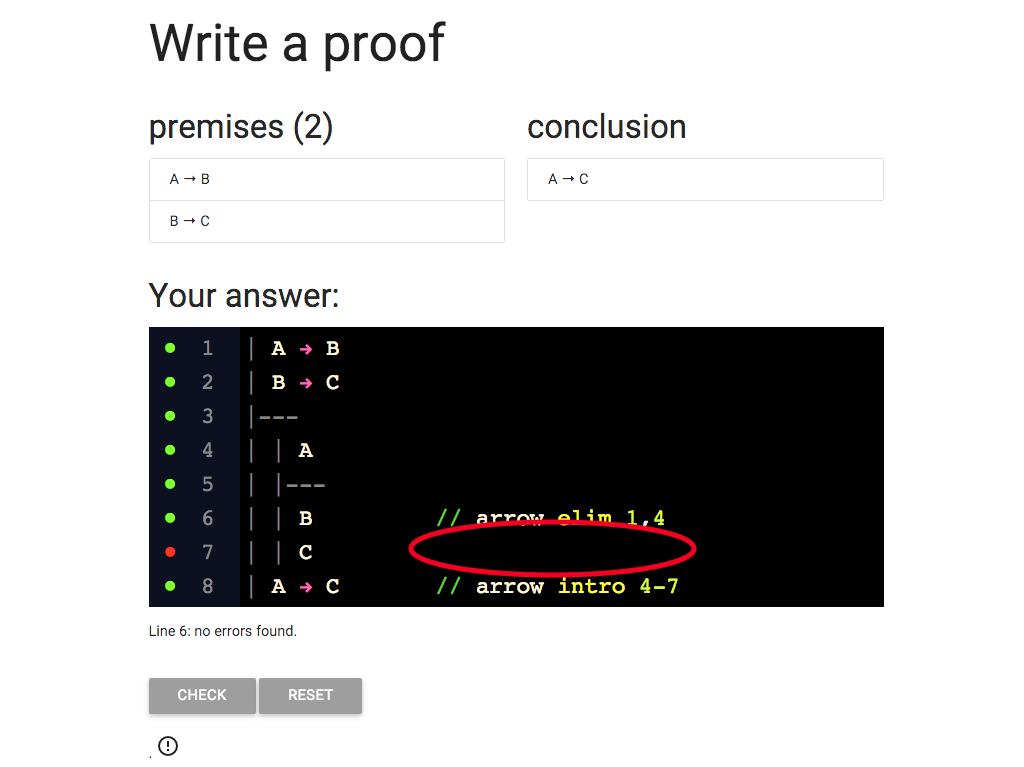
The last thing I need is the justification for the C at line 7.
Where does this come from?

I’m eliminating the arrow from B → C (line 2) and I can do this because
I also have the antecedent, B, at line 6.
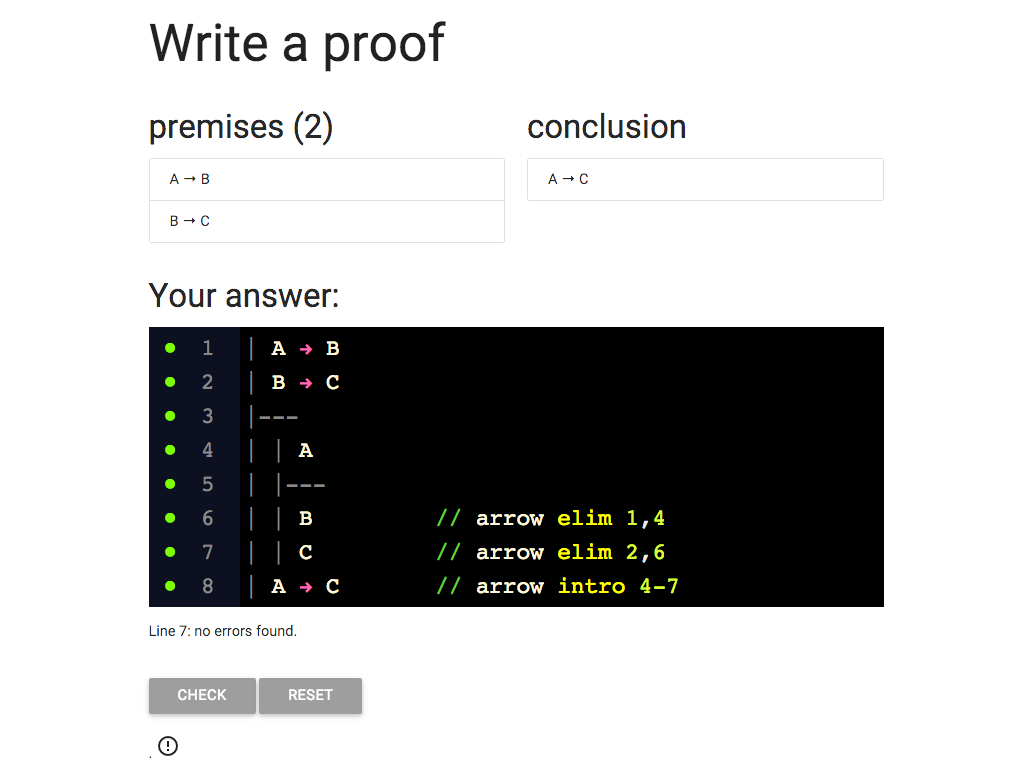
The proof looks ok, lots of green dots, but sometimes the dots don’t
get updated (they’re a bit lazy to avoid making your browser slow down).
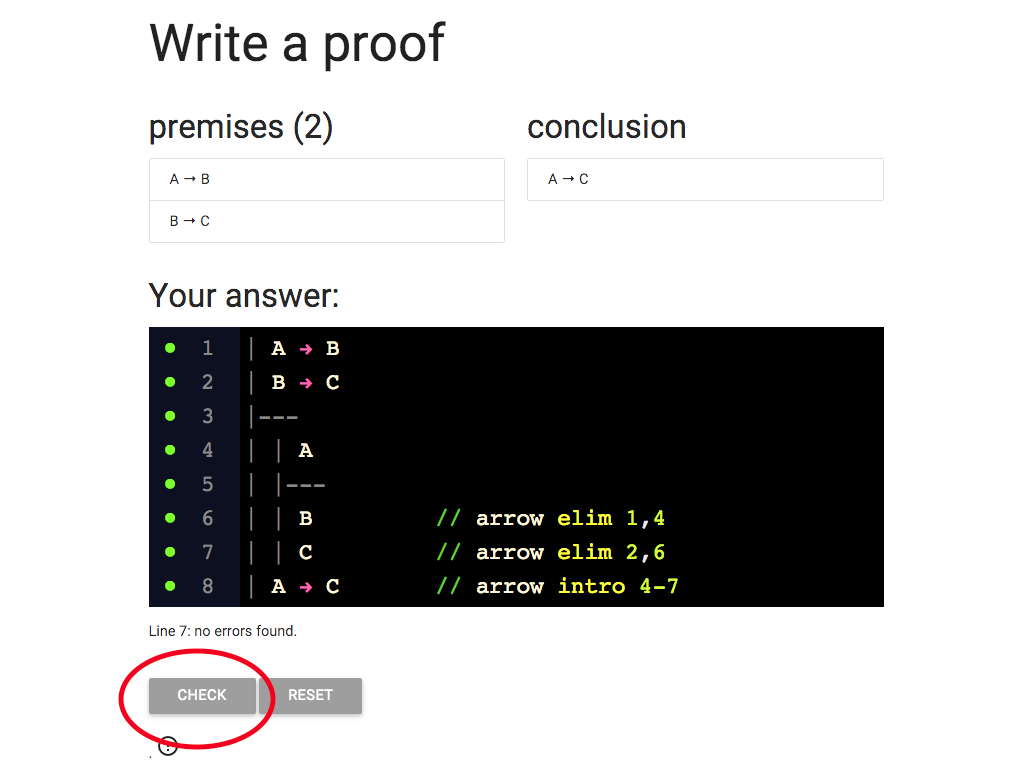
So to be sure I can hit the ‘CHECK’ button.
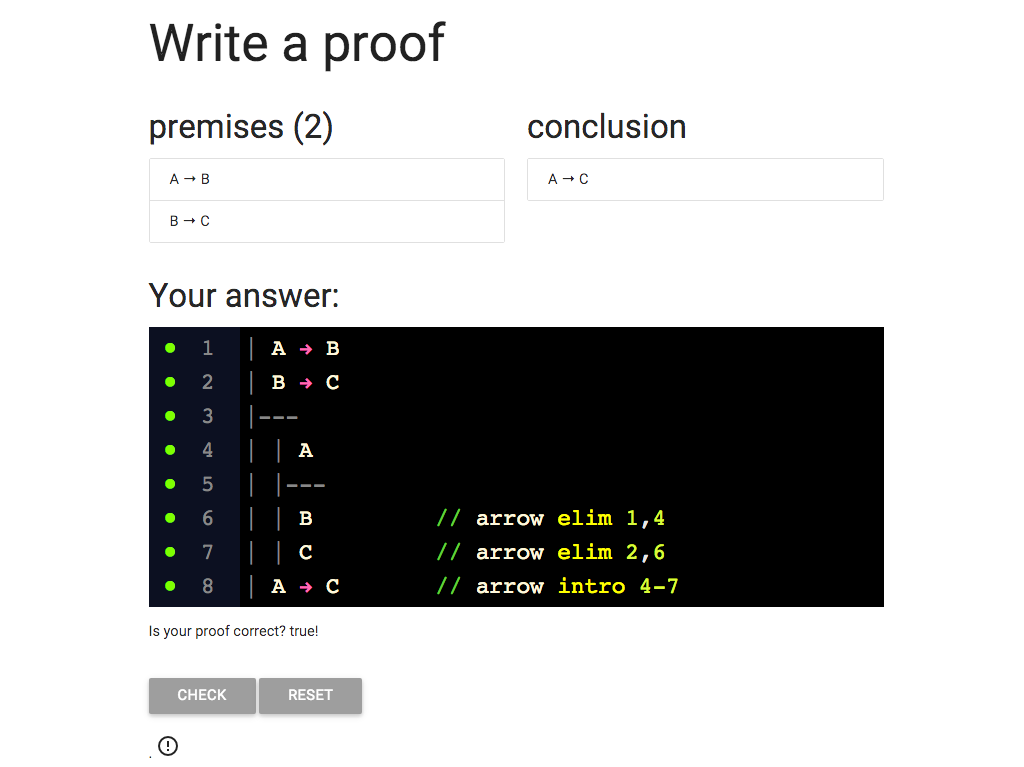
Great, we did it!
feedback
‘The lectures are really helpful and engaging, however it is quite difficult to write down all the important points during the lectures so it would be really helpful if the powerpoints from the lectures and maybe even audio recordings could be made available to students.’
When people say they can't do logic, sometimes that's not true and they are thinking they can't do it just because they don't realise that it requires time.
8 hours
When people say they can't do logic, sometimes that's not true and they are thinking they can't do it just because they don't realise that they need to read the textbook.
read, then do exercise

Ambiguity: Recap
\section{Ambiguity: Recap}
\section{Ambiguity: Recap}
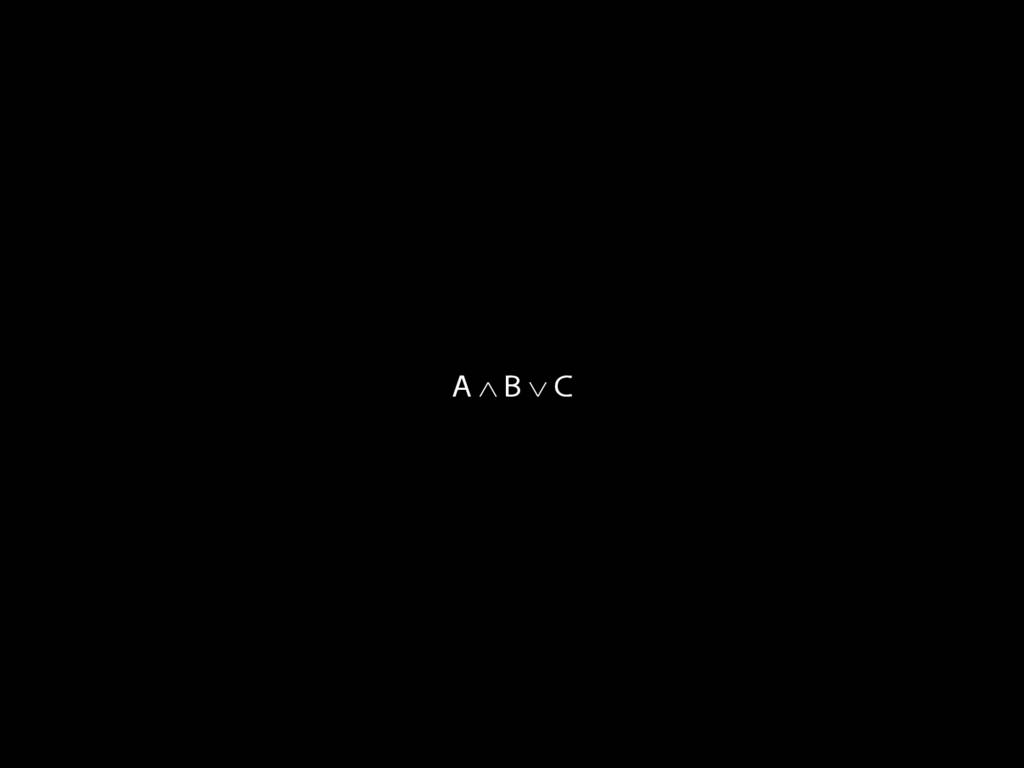
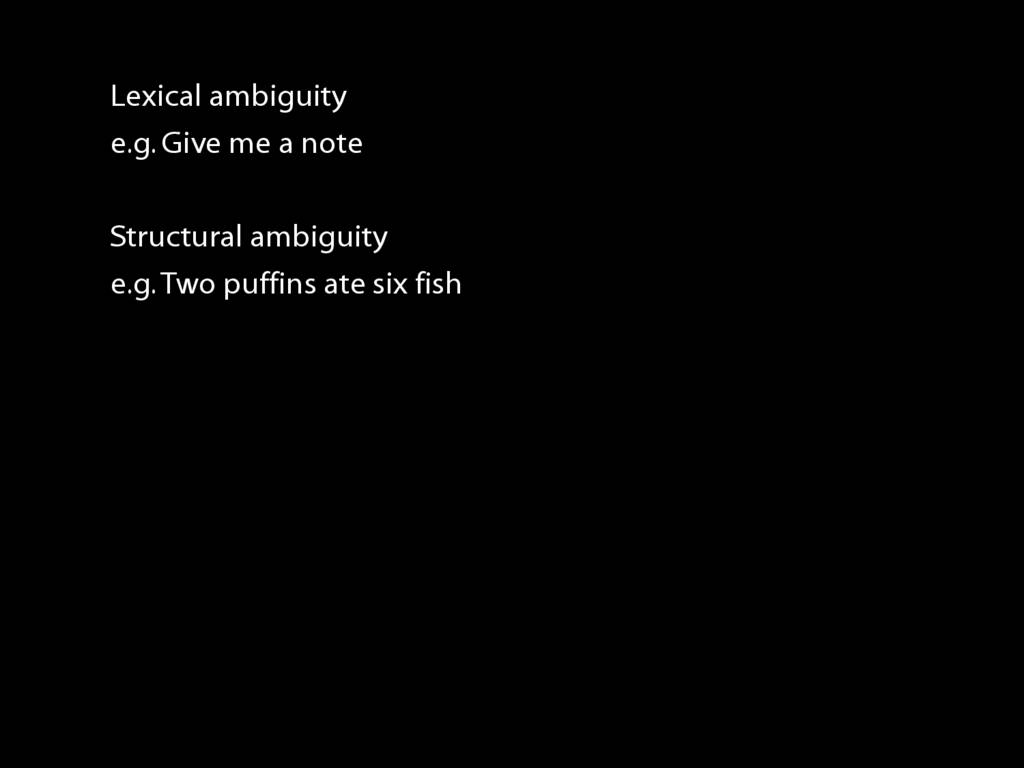


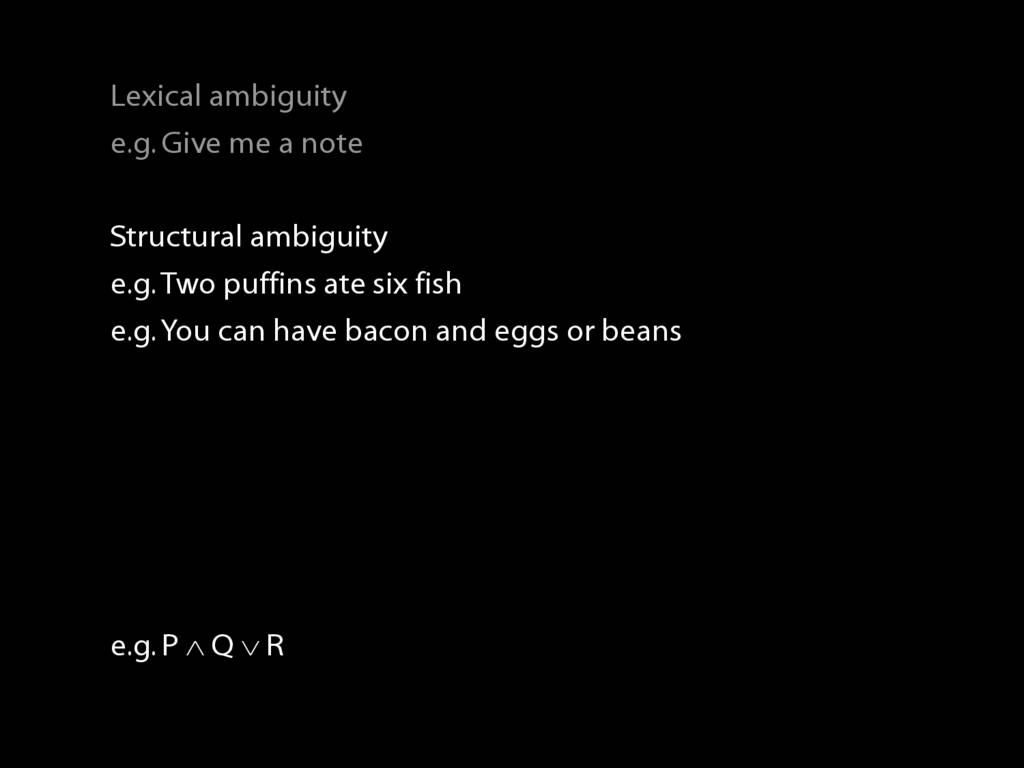
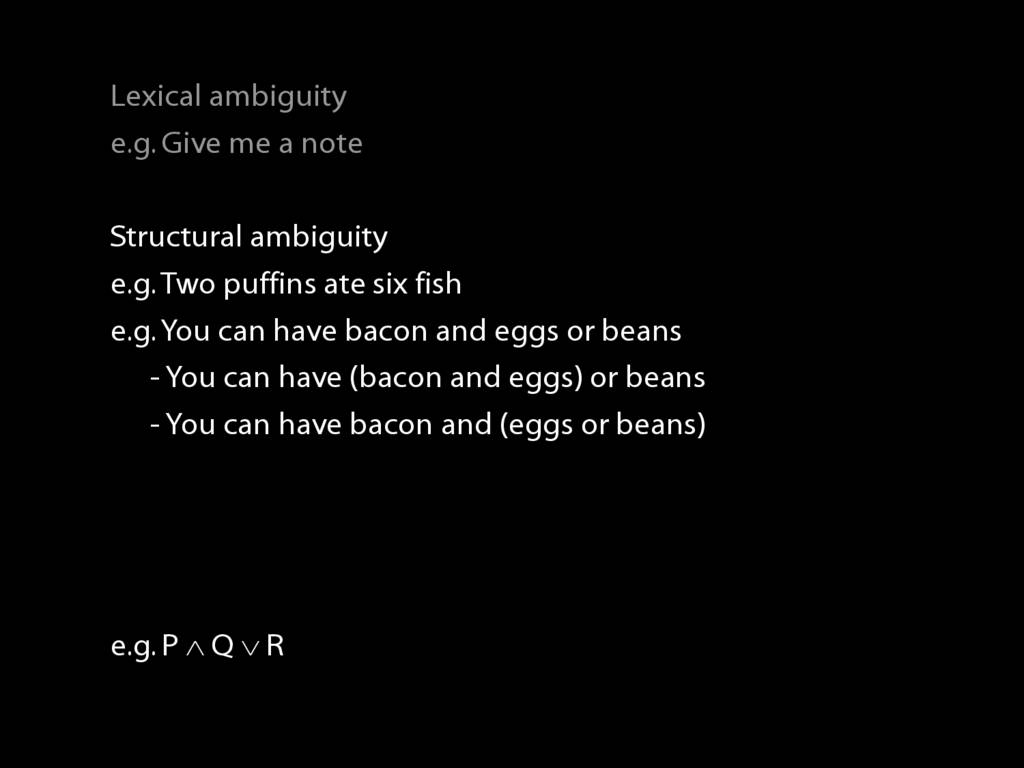
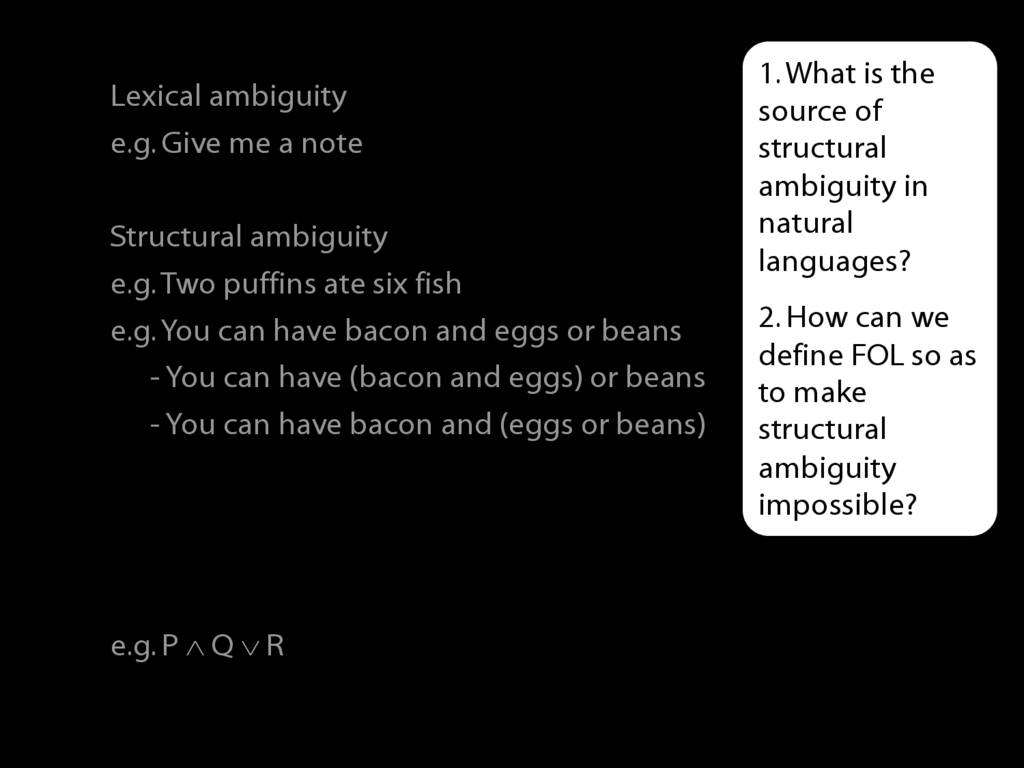

I Shot an Elephant in My Pyjamas
\section{I Shot an Elephant in My Pyjamas}
\section{I Shot an Elephant in My Pyjamas}
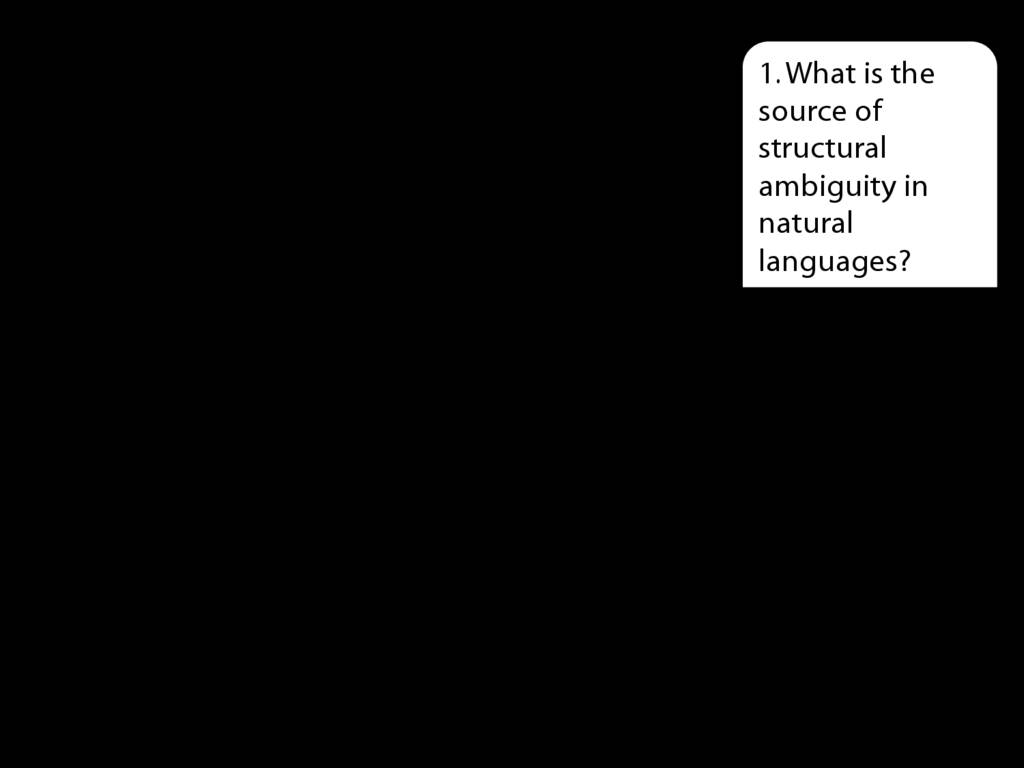
Rule 1: a NP followed by a VP is a S
Rule 2: a Vt followed by a NP is a VP
Rule 3: a NP followed by a PP is a S
Rule 4: A Vt followed by a NP then a PP is a VP
Two derivations of Groucho Marx’ claim, ‘I shot an elephant in my pyjamas':
